What did you say? Jaydee Canvot. What do you see?
A convolution is by definition complex.
In machine learning, this is the process through which signal is modified by a filter. Convolutional Neural Networks are used by AI to detect patterns, feature and textures.
When looking at players, there’s different prisms or scopes. The general vibe, the game output, the “data” but all of it relies on micro-details that assemble together to create the bigger picture.
The more you look at a player, the better the idea of his input can be.
More can also be different to a sample : one game versus three games versus thirty games.
This is a perspective reminiscent of inspecting AI slop ; the more you look at the details — or dashes that never stop if you’re familiar with Alt + 0151 or ChatGPT — the more you notice whether it makes sense or not.
Seeing patterns doesn’t mean they’re meaningful, how we see is equally important as what we see.
I watched Jaydee Canvot for France at the Tournoi Maurice Revello,
Being aware he started 12 games (out of 18) in Ligue 1 at 18 - following the footsteps traced by Benoît Badiashile and Mamadou Sakho (at 17) but also Raphaël Varane, William Saliba and closer to home : Jean-Clair Todibo
A centre-back able to play in midfield, man like Jean-Clair Todibo - who played in Ligue 1 after refusing to sign the professional contract offered by his club, as a retaliation for keeping him around in the B team on amateur terms - until Alain Casanova put his reputation on the line by giving him a debut in pre-season.
Bomb squad, and transfer to Barcelona. Autumn 2018.
AI will never generate a 22 year old French CB mimicking a sport announcer with a plastic fruit juice bottle as a makeshift microphone calling that the “Champions League doors are closing before Jean Michel Aulas, look at the face of their Sporting Director” after OL missed out on it in the last matchday of the 2021 season.
French Snapchat is undefeated, just like France at the Toulon Tournament 2025 which they won
There’s a dual reason why I increasingly like these alternative angles, one is to escape the over-saturated mill of increasingly similar (not exclusively AI-generated) scouting reports processed and written with the care for the audience relatable to a Dishwasher’s instruction for use manual.
Victor Moses would provide chaos and defensive balance to Chelsea, is the sort of take that led me on television. Benoît Badiashile is a form of culmination, opening a new dimension ; when that “tall U14” overheard where I got my UEFA B then A license ; eventually signing for Monaco (in the stage where I was happy to see him make the team - until it becomes a regular enough occurence) then Chelsea.
As I went on, I’ve agremented profiles of players with ones I’ve coached and the stakes associated, gradually evolving from commenting on the sport, to influencing it at my level.
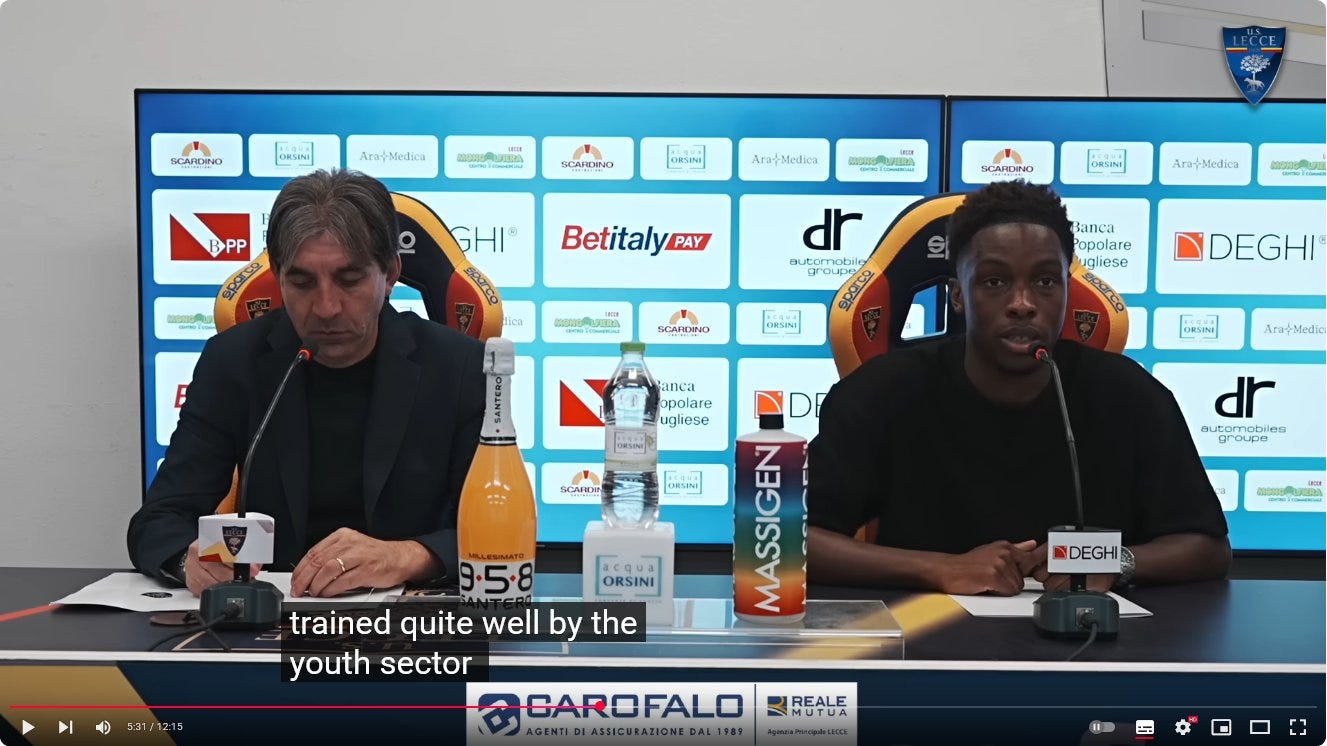
I’ve reached the increasingly uncanny overlap where I’m exploring the idea to promote some of them as the feature ; as opposed to the mirrored surface of the lake of my coaching experience.
As years go on, my eye sharpens just as much as the sample size of players expand.
Professionally ; it means capturing in a snapshot the essence of what will matter.
When it comes to “content creation” ; unicorns have their invitation card.
Are you seeing what’s there, or what you expect?
A perspective of the mirage of meaning, a discussion around function over outlook.
If the execution isn’t academical, but served a purpose ; why should it be valued more than a play logged “successfully” with few evidence of repeatability.
Not every observation has a meaning, nor is repeatable
We’re scaffolding observations, refining the previous observation with the next one, layering prisms over one another.
And the place of granular observation in the bigger picture
Jazz and early 1960 musings as the universe to explore and reflect the dynamics
Jaydee Canvot has been deployed at the back or in midfield - players are skillsets, not positions
What could be, or what could’ve been.
Live in the moment : that disinterested U17 centreback doing his laces in his penalty box as a cry for help in September 2019 ; to captaining my U19s looking larger than life to keep clean sheets against the best club in Western France a few month after I took over, as the world walked into the darkness of the first few months of 2020.
Where would Djessy (3) be now if not for unforeseen circumstances.
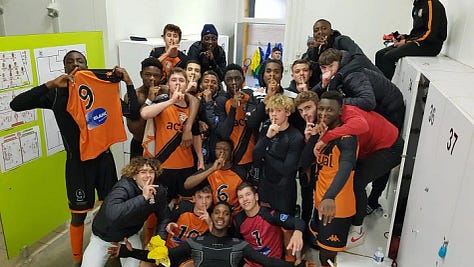
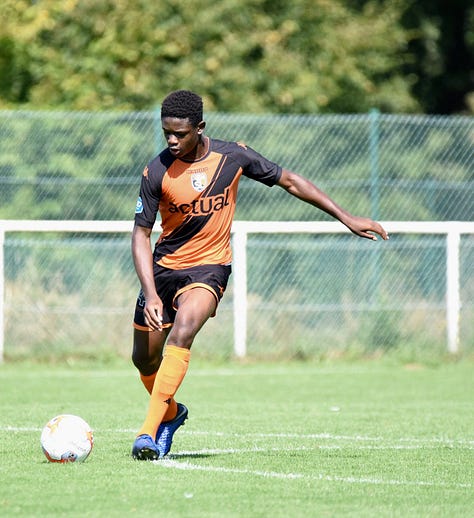
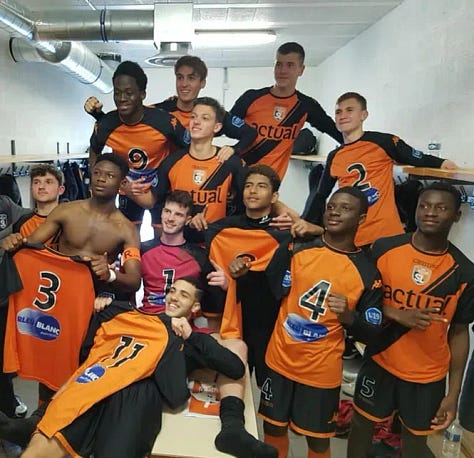
The good pictures are from Tournoi Maurice Revello
Repetition and truth
Passing is eminently ecological : only happens in an environment, under time and pressure constraints.
There’s a resonance to an opposed pass.
Receiving and giving against zero pressure, or a plastic cone delves more into synchronicity and the “feel good” factor of a job well done on the surface.
Both things happened at the same time. That’s synchronicity.
JD plays an up-and-back to draw the pressure :
As a way to acknowledge the first touch, a small nudge forward to put shoulders over the ball
This is the time delay that transforms that situation from synchronicity (two simultaneous events, not related to each other : JD two-touch pass, and the striker's pressing run) to resonance.
Commander Keen 4: Secret of the Oracle (1993) played years after via passed-on floppy disks, isn’t only a landmark platform game at the peak of 2D design (and gameplay), it shaped my whole representation of so many things.
Color palettes and minimalist textures that legitimately aged like bitcoin.
You can play here (but plz come back)
8-year old Billy Blaze (and sebc) becoming Commander Keen to Save the Galaxy, lands on planet Gnosticus IV to rescue the kidnapped Keepers of the Oracle.
Visits several levels, picking up food, but also fighting off creatures
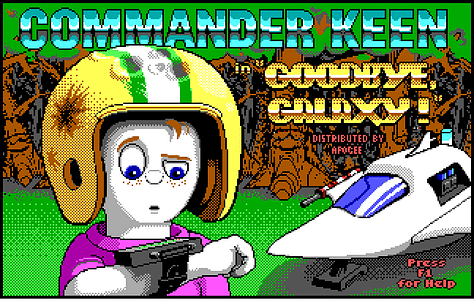
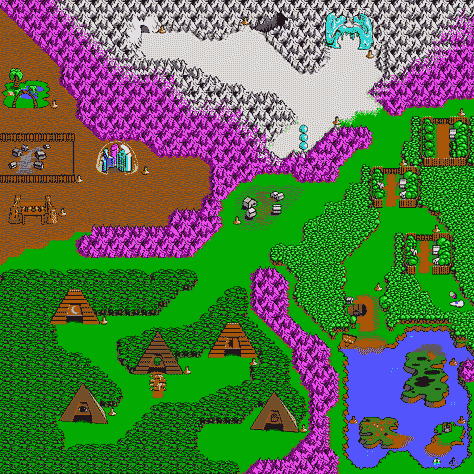

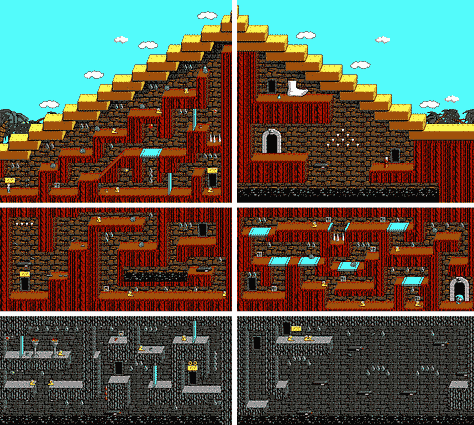
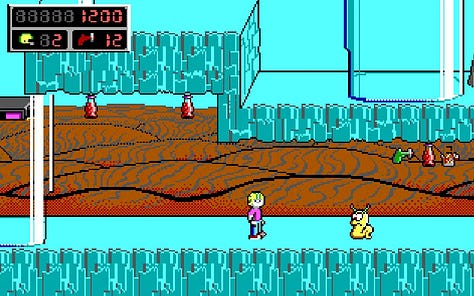
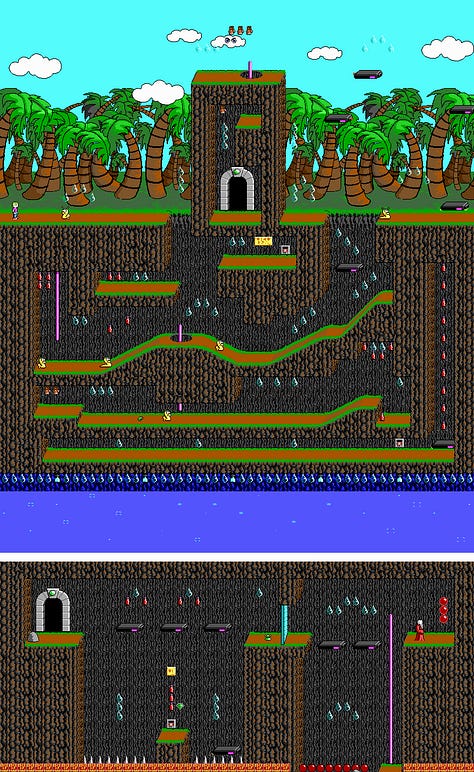
One of them is the Mad Mushroom, with two short bounces and one big leap.
You either carelessly run at the creature (and once in a blue moon, get by unscathed - synchronicity) ; or read the “ecological affordance” to find the right time to release the digital character by pressing the key - that’s resonance. Vibrating together
Anyone who played these games acknowledges the iteration endeavours : this time, I'll be a nihilist and never go back. Take all the points. Take no points. Don’t use my weapon. Only stun creatures jumping over them.
Or “bypass the press” by jumping over with the pogo stick. Mad Mushroom can't be stunned.
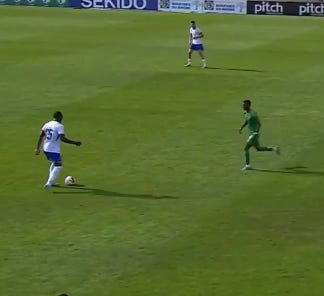

This is what JD does during that split second, with a position of the support foot sligtly more advanced (+ shoulders leaning forward)
So that he uses the correct “golf club” and the perfect location (plain middle of the ball) in a sharp backlift movement and follow-through.
The support foot a few inches forward helps to connect earlier when the shooting leg swings, all compensated by strength on the left leg bent a little bit more than if the support foot is one inch behind, and a bent right leg on the right.
Something somewhat reminiscent of my hours playing golf in my Masters, in the US Soldiers’ legacy Golf des Chalons : you don’t hit the ball, you launch it as you swing.
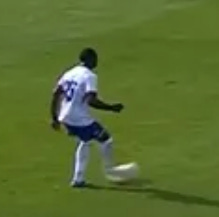
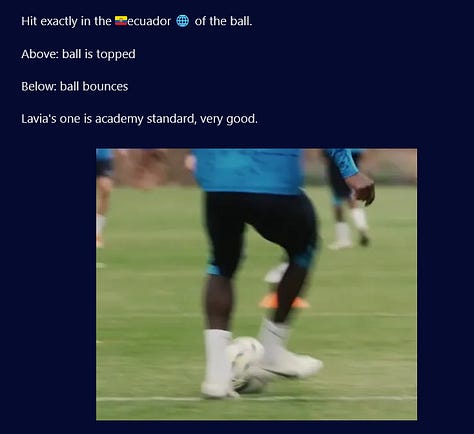
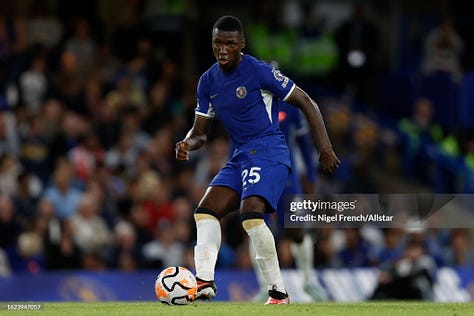
A similar theme, with the idea to break the second line (midfielders)
Canvot has light feet for a big guy.
To spin on his right foot (can you hold your weight on toes, or do you play feet in fresh concrete)
That small delay is the killer - or absence of cue for the striker who doesn’t perceive the need to decelerate - the signal sent is that JD stays on the ball a microsecond too much. A misperceived idea that the pattern will extend (defender like a fish out of water, will freeze and turn the ball over)
None of this is performative let alone verbalised into words by the defensive player whilst processing the action.
That micro delay is reminiscent of the way Jazzmen go “off beat”
I’ve played (classical) music - an grew utterly bored by scores (the musical script)
Also gifted by some element of ability to play tunes by ear (as an adaptation, or replacement for actually reading music like taught in theory classes) ; notwhistanding a dreadful posture but almost perfect sound.
Something fun, if that wasn’t (also😖) aligned with a dreadful way to hold a pen yet still witing better than (and for) the layman.
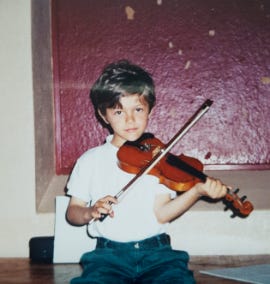
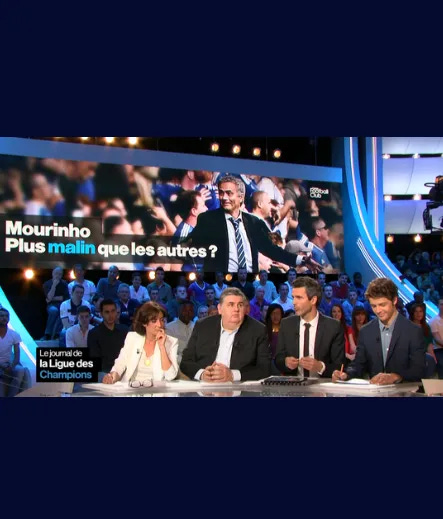
Hence my continued cruisade to defend idiosyncratic creatives because, well.
Legacy of starting music aged 4, neuronal connections are inprinted and I can re-start anytime I want for no loss. Downside : the occasionnal legacy back pain and pre-cut chapped fingertips in the winter.
The professor playing the tune, akin to a cheat sheet that I’d mentally capture and store, and process, without ever opening the paper score.
Deprived of it, a trainwreck. “Hey, that’s a E flat”. Soz.
Jazz ; on the other hand, appears to me as the ultimate form of collective intelligence and creativity.
The one I know for sure, that AI will never replicate, beside for some non viable imbreded synthetic sludge. We are not family.
Prompts pulp does churn humanoids with hands of clay like designed in 1801 if anatomy was invented in 1802.
Art is Art if you have bright eyes, it has a soul and a sense of rythm.
The whole is built upon a scaffolding of elements that don’t clash with each other.
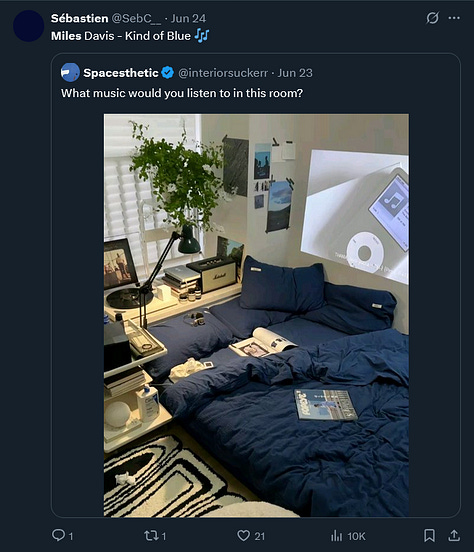
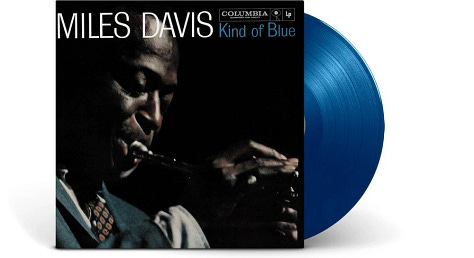
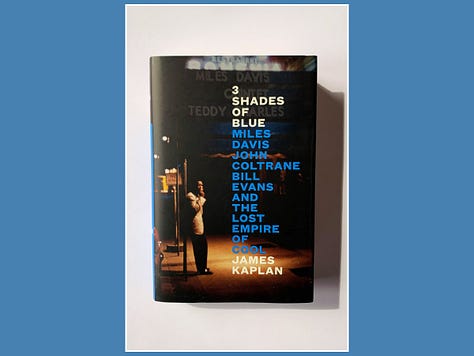
Kind of Blue is possibly the most prominent and best Jazz album of all time (and my current reading in the London Tube) - some kind of Galacticos of artists who produced a masterpiece in the two days of March 2 and April 22, 1959.
Miles Davis was used to improvising :
Invited to provide the soundtrack music for Louis Malle’s L’Ascenseur pour L’Echafaud with his French band, Davis improvised in real-time to the screenplay without any pre-written themes for the movie “Lift to the Scaffold” (1957)
“So What” opens the album, with Paul Chambers’ bass and Bill Evans’ piano interacting, like a heartbeat, or the regular sound of train wheels meeting the railtrack.
At 1:32, enters Miles Davis’ trumpet floating between the beats which is where lies the off beat genius.
Not just what he plays, but when he plays.
The art of space
In the 1940s Bebop was a frantic, almost epileptic voyage with a tight harmonic framework
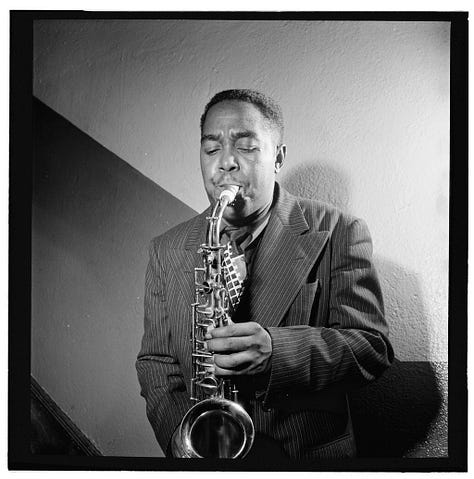
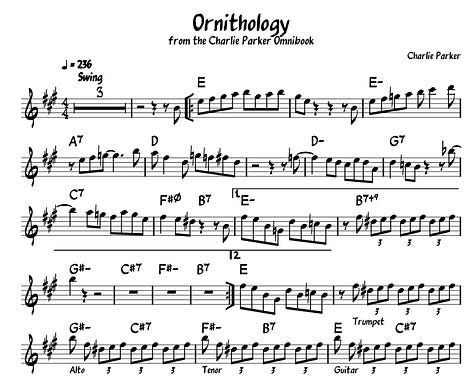
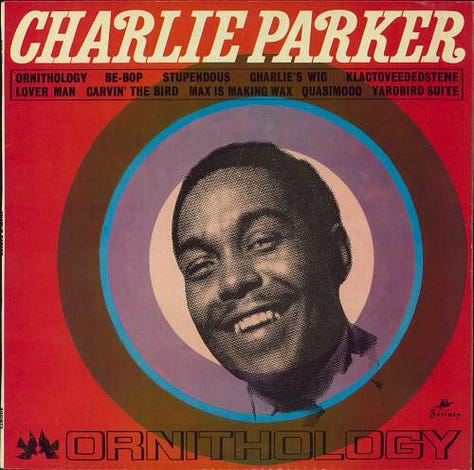
Music is written on scores, with the note “A” standardised at 440hz
Coherent musical sentences rely on scales of 8 notes - as seen below on a piano keyboard (which is the ultimate form of sensorial dataviz).
That’s like a color palette ; find harmony (even in opposites) and the whole makes sense.
Don’t, paint with the energy of a repressed engineer, and you get so many brutal semi-professional paintings you see in art galleries downtown with colors that hurt your eyes and brain like a cathode-ray tube TV in a dark room.
A small détour and the opportunity to look back to growing up in France realising how great (and idiosyncratic) it is to learn with the solmisation Do-Ré-Mi-Fa-Sol-La-Si-Do as opposed to CDEFGABC.
Letter make sounds from writing to speaking, and now they make musical notes? Could they have smell or taste too?
Whenever you want to alter the interval between two musical notes, separated by a tone or half tone ; you have exceptions.
Like mixing more oil paint, put salt, pepper on your greens
Or a row of teacups, with a cloud of milk or two
If we look at the third staff of Ornithology by Charlie Parker (1946), the second bar is in “D Major”.
Each bar has the same beats (think of seats in a train wagon) - usually three or four (or multiples) - that is closed when the capacity’s reached.
Notes are weighted differently. In the most common 4:4
𝅝 1 note or “ronde” (round) : 4 beats ; fills the whole bar.
𝅗𝅥 1/2 note or “blanche” (white) : 2 beats ; fills half the bar (you can use two)
𝅘𝅥 1/4 note or “noire” (black) : 1 beat ; fills a quarter…
𝅘𝅥𝅮 1/8 note “croche” (hook?) : ½ beat
𝅘𝅥𝅯 Sixteenth note “double croche” (double hook) : ¼ beat
Accidentals are like road traffic signs. From now on
♯ “sharp” (or dièse) : that note will be raised by a half step (semi-tone)
♭ “flat” (or bémol) : lowers the note by a half step
♮ “natural” (or bécare) : cancels the previous.
Cancel culture Club. Music is a (karma) chameleon.
The so many changes of chord make it a narrative arc, called “horizontal” (or major based), as if each musical sentence (or “mini world” with its set of rules) has to find a resolution to the cliff hanger created by the tension in the last before last note.
in Bebop Jazz inprovisation, musicians all have to keep up with the same chords at the same time whilst performating heroics with their instrument.
The melody, or head, would be composed ; and the solo left to Chalie Parker’s improvisation.
His 34 year whirlwind amongst us might have changed Jazz forever.
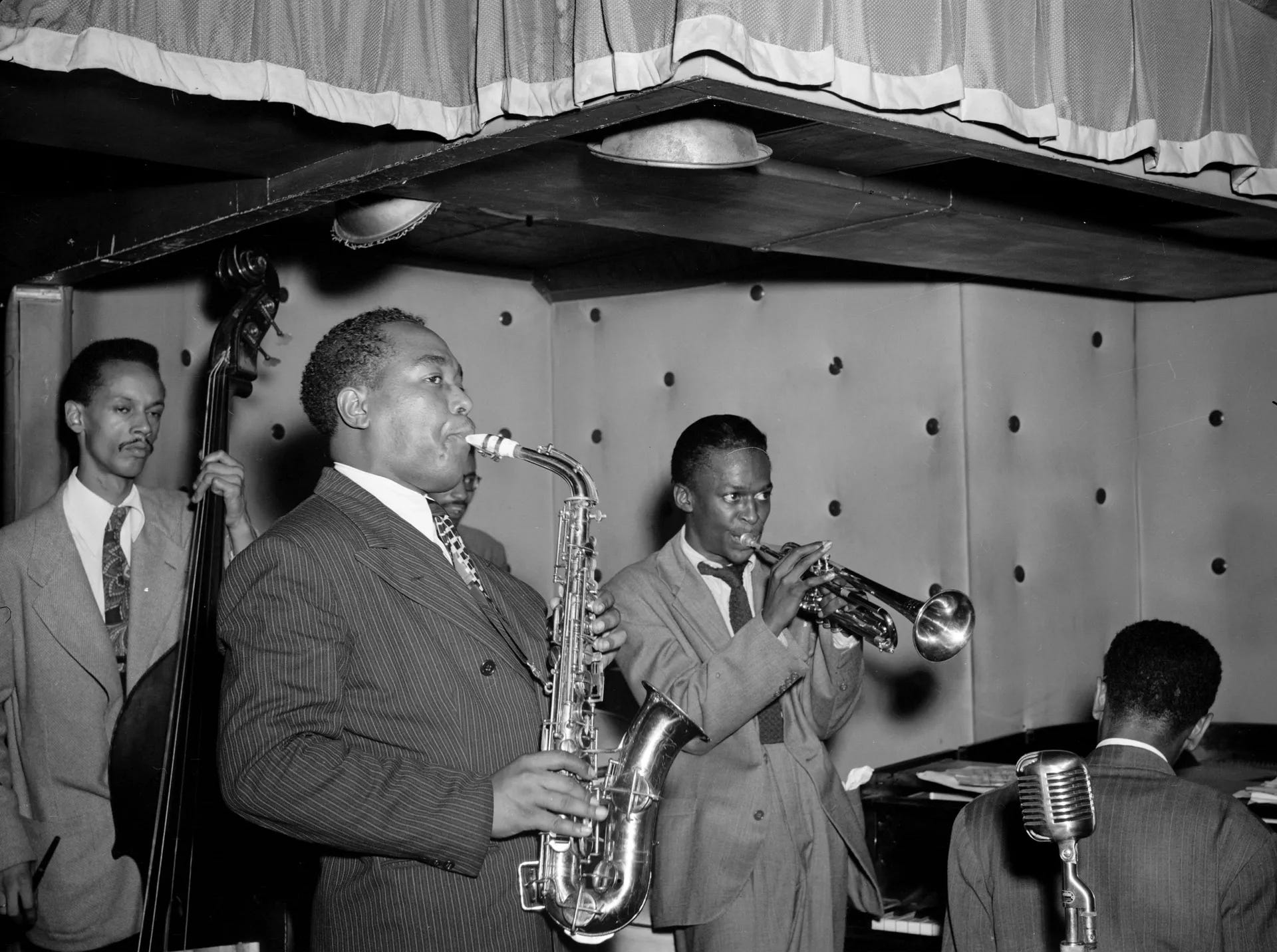
Traditionally, (folklore, gregorian…) music is centred around a tonic note.
Having spend my childhood week ends “at the concert” , I found the perfect place to brainstorm whilst being stimulated. I came down in my own words aged 8 to coin the idea that the exercise of (classical) music was basically playing around a main note but merely delaying the outcome with twists and turns.
Get on with it! (so I can go home playing video games).
I can’t put to words how much how 2D gaming also shaped my way to “see” music.
Or, if you took the hint when I was practicing the instrument, by any mean conceivable shall we dodge reading the musical score like everyone else.
Listening to Bebop invites the listener to brainstorm to catch up
But imagine a meal in a great restaurant that you’d have to consume at a certain pace, making micro adjustements to every bite (three grains of salt, baslic) even after the initial seasoning (which is called the “key signature”, the numer of sharp and flats at the start of each staff).
Put the fries in the bag, but remove the salt only on this one to truly *get* it.
How long until a foodienfluencer comes up with it.
Might be stupendous food, but also quite the hassle.
Ornithology was published in 1946 and (still) relied on traditional, horizontal framework to write (and perform) music.
Performed in a hectic succession : that’s bebop. Charlie Parker would improvise the solo part, between the melody.
The pillar of music is fifths, which is 5 notes (7 semi-tones apart), called “harmony”.
Basically, your musical sentence makes sense if you pick notes from that harmonic family.
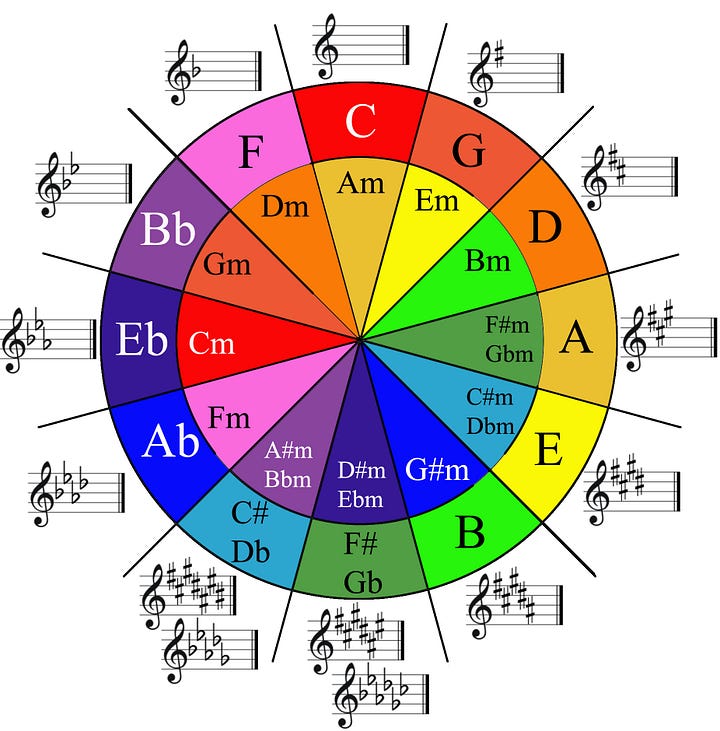
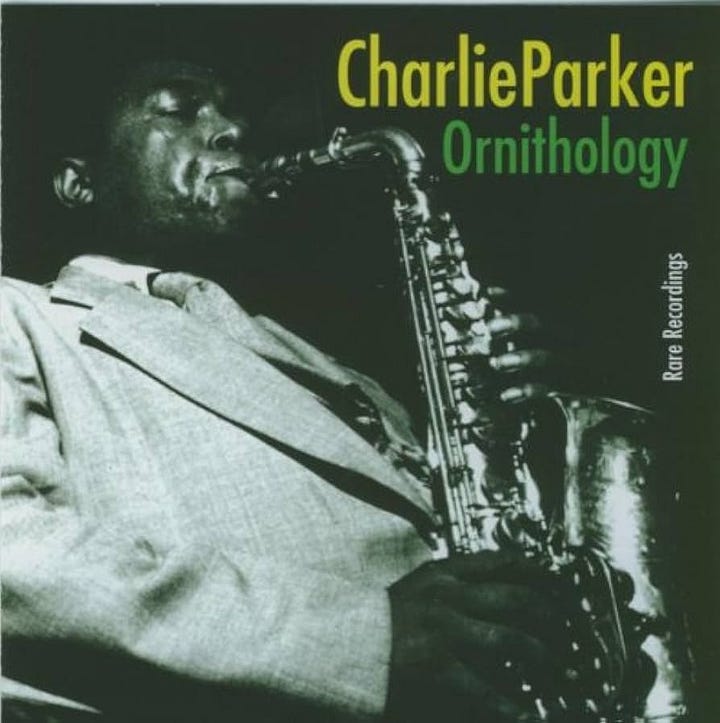
They all work together as a cycle (just like colors). There’s associations you might and might not want to create moments of unity and contrast.
Bebop, and Charlie Parker ; would change chord virtually every bar to make it reflect the musical tune.
Traditionally, it’s set once and for all for the whole score (and tune) at the start with a few “accidents” here and there. In Bebop, that’s a lot of road signs.
It’s a good listen, how does that look on paper ; well, this :
Over the course of their meetings, Miles Davis and George Russell discussed a groundbreaking way to create music
As opposed to engage in a form of war of attrition, by playing music by the note and plastering scores with musical red tape ♯ ♮ ♭ to reflect the musical tune - (with Bebop leaving room for spontaneous improvised outburst of creativity)
George Russell and Miles Davis wanted more.
They wanted to leave even more room to creativity and innovation via improvisation.
Whilst keeping an unity of whole ; to create a form of organised chaos.
Amongst other things, this is my life quest : understanding the forces at play to make jazz a musical form like no other because it sounds ethereal, suspended.
In football terms ; it translates in creating a harmonious world that still platforms creativity.
The layman’s knowledge of Jazz is that “there’s no score, they’re just playing off the cuff” ; then the next person will suggest that “well achkually, it kinda holds on together, but why?”
It’s like being transported into a cloud that’s makes you float in a familiar valley yet having no idea what’s gonna happen just next.
I’ve also lived in a region with mountains.
“The Mountains” aren’t just these big rocks, it’s a whole concept (more than “sea”, forest or the desert who all have a bigger visual unity), a place where you can get lost imagining that uncanny familiar spot is one you know based on it’s shape but actually not.
If you’re lost at sea, you’re lost - in the mountains, you are and kinda not because you can still see the outlines and know your general surroundings from afar.
Jazz is a bit of the same, it can challenge your whole perception and role in the proceedings. There’s no musical storyboard, just you in the middle of the elements with your senses. For how long ?
Genius lies in simplicity.
So What doesn’t have a score as such. This is a landmark. Only sketches of modes.
Did it become a masterpiece because or despite the fact that it was improvised and recorded in one single go?
This is where my deepest quest to understand creative emergence comes to life.
What is the framework acting as the custodian of the whole, whilst protagonists aren’t just performing the score, but *are* the score? The intertwining or transcendance between the artist and its art.
Traditional Ionian mode relies on the following set of intervals : 1-1-½-1-1-1-½ which is the most familiar mode using a succession of white touches on the piano keyboard.
It sounds like walking up the stairs, with the tension on the 4th note that will tell you where the sentence will end.
ionian relies on “perfect fifth” 5 notes, 7 half tones).
That’s three tones and one half tone.
If the first note is say, 220hz ; the fifth lands at 330hz (220 divided by 3/2).
or “octaves” (8 notes, 12 half tones).
In his book “the Lydian Chromatic Concept of Tonal Organisation” and following exchanges with Miles Davis, George Russell came up with a revelation :
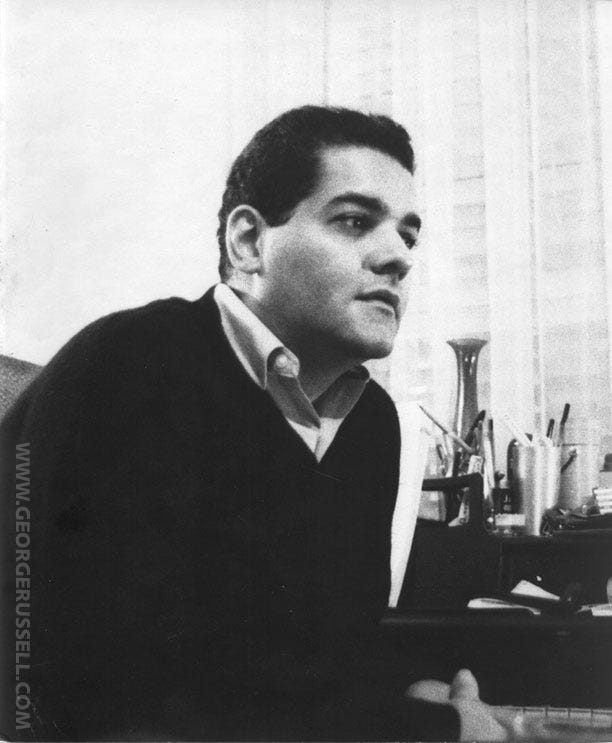
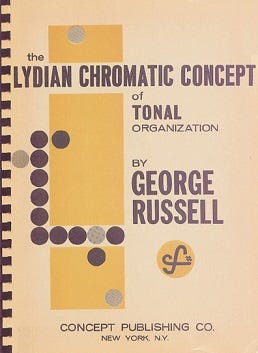
The idea was to change the paradigm of ionian music (building towards a resolution), by instead creating gravity around the tonal note.
When you play a note (say at 100 hertz), you hear the main sound, but there’s also harmonics which are multiples of the fundamental heard (or vibrating) in a proportion of the main one.
1st Harmonic : 200 hertz, one octave which is eight notes above, vibrating for half of it
2nd Harmonic : 300 hertz, one octave and a fifth (vibrating for a third)
3rd Harmonic : 400 hertz, two octaves
… up to 11th harmonic
When I played Violin, I’d play about with my finger : if you press the chord, you get the fundamental. If you nail the spot where you get the harmonic, but only grazing the chord. This is the conurbation between music, dreaming and physics.
Another one AI and electronics won’t take from us, as only a wooden violin can create the ethereal sound.
Bear in mind that as the violinist grows up, so does his violin (but don’t water it).
Another tragic revelation for people who experience a growth spurt, the world doesn’t expand (like your violin does). Somehow, that’s the only activity where you don’t need to re-learn your coordination motor patterns (because the violin also scales up) - or that’s what I felt (or didn’t felt the difference)
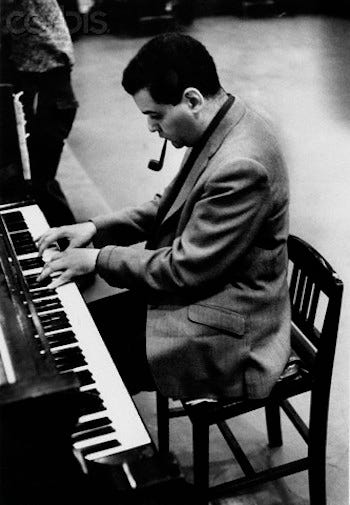
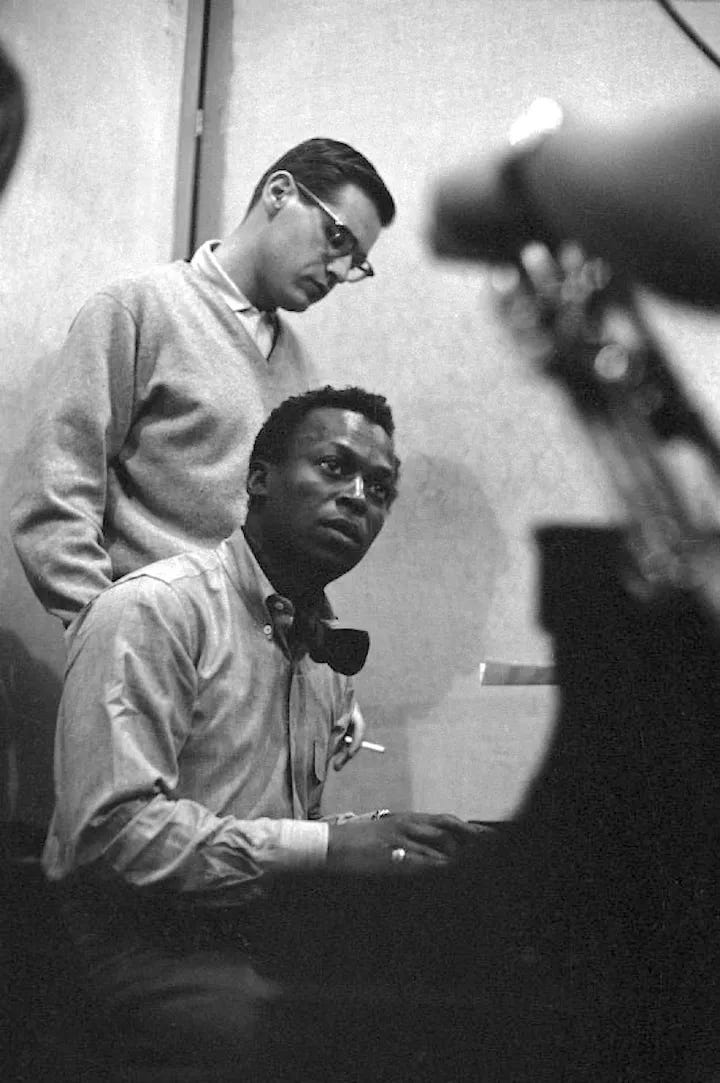
As it turns out, George Russell figured out that the fourth note in the Ionian mode isn’t found in the direct succession of fifths.
It is an oddity (accepted in traditional music until then) to the ear as we are wired towards that musical resolution (the sentence has a start and an end).
Russell looked at harmonics’ interval relationships
By reordering the 11 harmonics, fitting them into a scaled down octave (8 consecutive notes) ; Russell realised that changing the fourth note to a ♯ sharp one would prove to be more reflective of the way sound actually works ; because it resonates with the root (your first fundamental note) better.
Lydian intervals would then be as such : 1-1-1-½-1-1-½
I wanted to explore the creative process behind “Kind of Blue” and it’s possible resonance (and not synchronicity) to football, or life.
Comes 1959, Miles Davis assembles a team of artists,
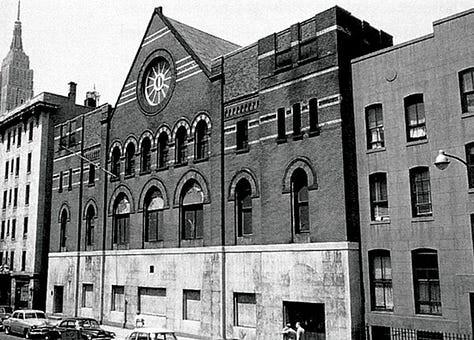
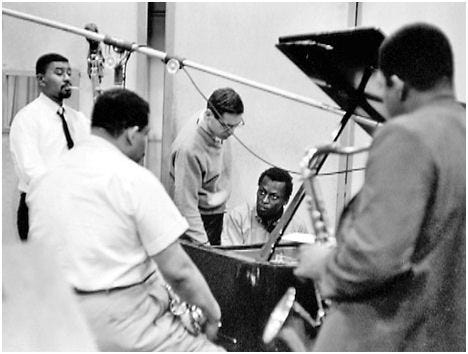
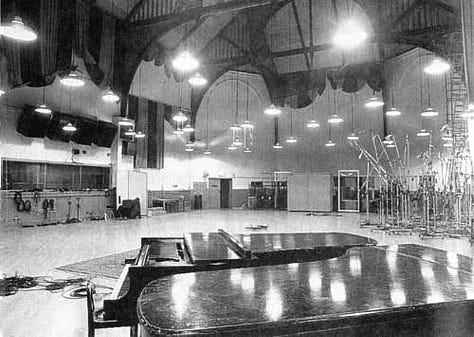
One side point that almost feels out of place to mention here : if you want to produce something great, surround yourself with great creatives ; who’d all go on to make their stamp in 20th century music.
The following 7 people rocked up at CBS 30th Street Recording Studio, NY City ; widely regarded as one of the finest recording studio, due to it’s architectural legacy of being a converted Orthodox Church.
John Coltrane (Tenor Sax)
Cannonball Adderley (Alto Sax)
Bill Evans (Piano):
Wynton Kelly (Piano)
Paul Chambers (Bass)
Jimmy Cobb (Drums)
The idea of modal jazz relying on the Lydian mode, would be to provide a fundamental note from which would be fanned out the other notes of the mode.
No tension/resolution, just exploration
And here comes the genius of Miles Davis’ management.
He would generally casually turn up with sketches of songs with his own band, letting each individual express their music.
This is the layout for “So What” :
AABA structure : 16 bars D Dorian / 8 bars E♭ Dorian / 8 bars D Dorian.
The masterpiece “Kind of Blue” was recorded in two separate sessions, with each song captured in a single take.
This is another paradigm changing perspective when it comes to the industry of preparation, rehearseals but more generally, themes of control and empowering individuals.
Two modes for the whole song, complete creativity allowed with the ingredients provided to pick from every note in the mode.
How to keep an unity of whole, whilst platforming individual creativity, without anyone stepping on anyone’s toes let alone telling people what to do
Does every piece of artistic expression requires forensic micro-management processes plastered over it.
The answer isn't out there.
You carry it and decide if it enters the realms of the possible by your actions.
Back to our football endeavours ; there’s an internal rationale to the game in a pitch of the same dimension, involving roughly 20 outfielders. Very roughly, 19 and so on.
Playable space only exists whithin the boundaries, and you have to make sure there’s two players between the ball and the goal when it’s played (the offside rule).
What happens occurs between players, both from a dynamic standpoint (the dyad between two players) and in intervals between them.
Jazz is also the art of creating and using the space between two notes.
Lucas Michal (7) drops off the front, from the space he occupied between the defensive line to pick up the ball short.
I remember being on Television in 2016 with creative freedom to draw visualisations of my choice to explain concepts - with features I’ve never seen before
I was pitched to explain the early dynamics of José Mourinho’s Manchester United
How Pogba was integral : passmap with exchanges of more than 10 passes
Mourinho’s squad builiding to compete and dominate first and second balls
Louis Van Gaal’s frugal 11.3 shots per game (every shot after 7 games)
Mourinho’s trigger happy Red Devils with 17.3 shots per game.
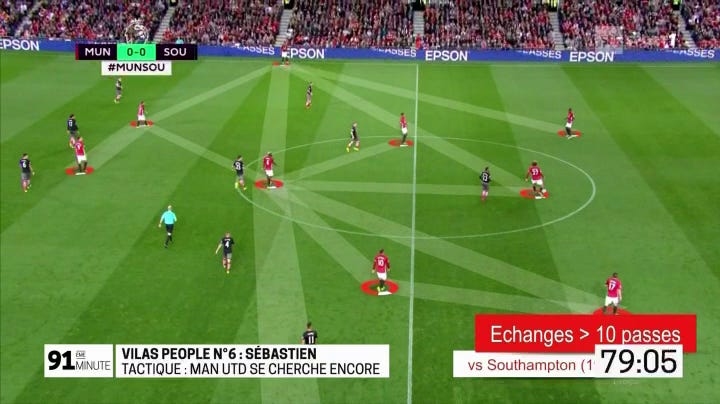
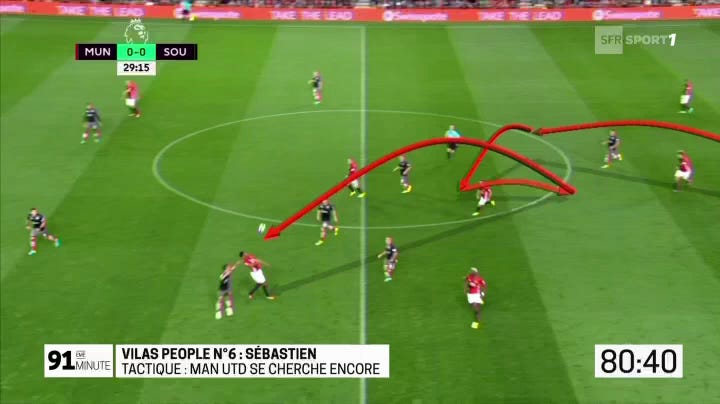
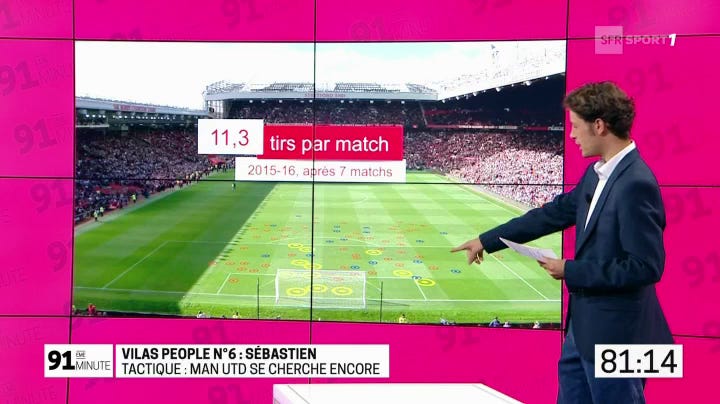
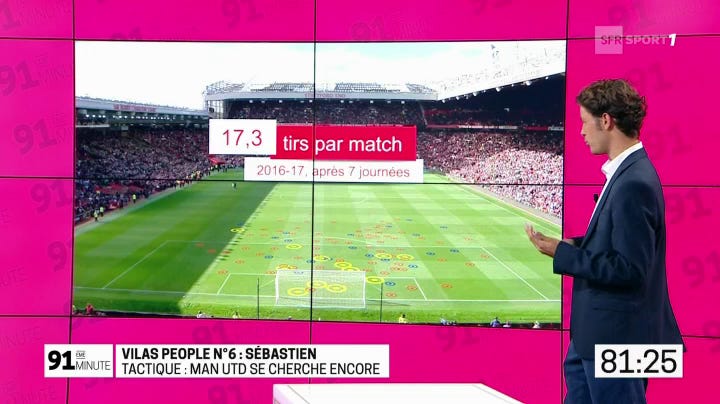
Paul Pogba was the recent world breaking transfer ; I was another transfer, from CANAL+ (holding the Premier League TV rights) to RMC Sport (holding the rights from 2016 to 2019) who wanted to pick up my brains on English football.
How could Pogba and Rooney fit together
Rooney pulling opponents toward him, a movement that was meant to resonate with someone filling the space (Ibrahimovic) with the idea to create a connection and find the creators betwen the lines.
This is the Oscar / Fàbregas resonance (simultaneous occurings for a purpose), or Gallagher / Enzo. With casuals wondering why UEFA Pro License Mourinho and Pochettino simply wouldn’t play the tackling Oscar / Gallagher on the bench (or deeper) and the creative Pogba / Enzo as “central playmaker”
Do you see what happens, or what you want to see?
Rooney’s roaming and first touch, to retain and turn would be a building block to “flatten” midfield organisations (close down, cover, balance) into a pancake (or skewer)
The idea being of how this preparatory movement invited an answer from other players, to coordinate and fill up the space created.
If and then, as opposed to the choregraphed Cirque du Soleil playbook.
Like a jazz pulse, inviting the back and forth.
Back to Lucas Michal (7) dropping off the front ; flattening the midfield to create space
What do you see?
The filter to process information is the player’s perception/action couple
The area is vacated, let’s fill it with my presence
The function is to organically adapt to the environment and occupy the space.
The execution shows a mismatch between the idea and it’s implementation, with the legs crossing : the left is used as a planted foot to change direction
As opposed to the right if the change of direction is accurate from a movement standpoint (land the right, open the gate with the left).
Using the left as support foot creates an arc to “go around”, blocking with the right helps to keep the trajectory in a broken line.
Execution sometimes meets function, but only the latter powers the former.
A micro detail of execution, with more verve he could clip his own leg.
But still does fill up the space ; not in synchronicity (which is the chore of watching “positional play” and the travesty of a pharmacist’s view of how players should be prescribed to move in choregraphy) ; but in resonance to each other.
Flamingo sketches
Toulouse play in purple, which is echoing their chromatic anchorage.
La Ville Rose, the fourth biggest city in the country, is built upon a maze of salmon walls.


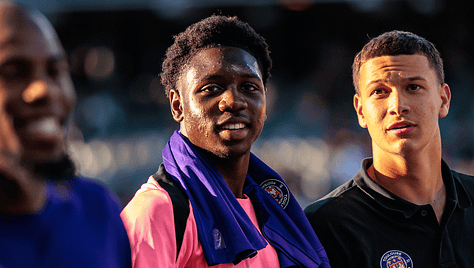
One of the things to like is how well JD moves into space - we’ll spare the “like a salmon up the river”, editor said (it's also me).
A single revaling feature when scouting CBs ; are they side on.
Goal side / ball side.
One foot in front, one foot behind to be ready to spin in behind.
Checking shoulder, body posture are like a stage ; but only the performer delivers.
A defender can read the game without being side-on : they usually makes up with range of movement. In other words, if you’re fast, suicide shuttle towards your box don’t trouble you (until your hamstring wants a word)
But it’s unlikely a defender doesn’t read the game if he consistently is side-on (which shows he’s alert to his surroundings, in an un-natural position - natural position is to stand facing the ball like a roly-poly)
Things easy to grasp. The ball is the sun, you’re a sunflower ; mimick a sunflower.
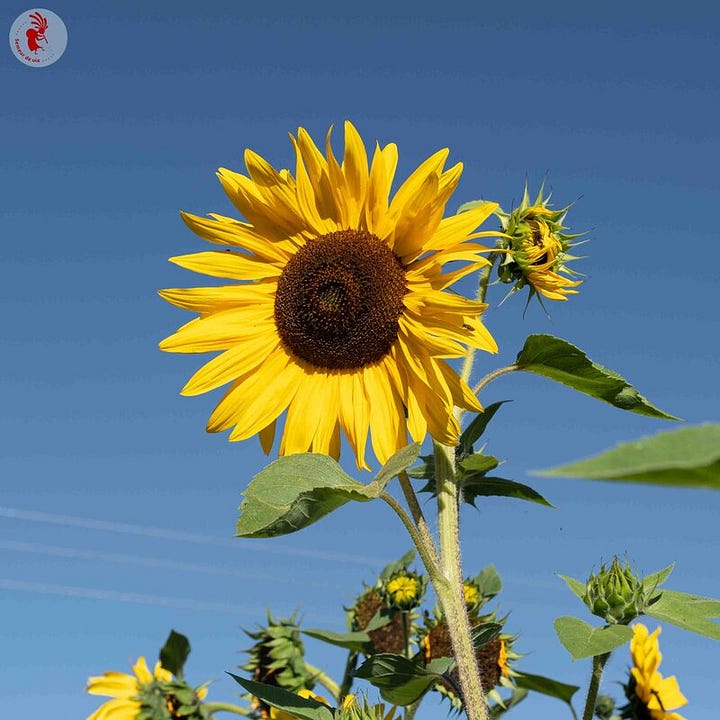

Striker intelligently navigates from 2/3 of the distance between the two CBs to have momentum coming ball-side but asking a question as to who has to track him.
This has been mentioned in every striker feature on here.
Sprinting motion
Decelerating to slow down the momentum
Back on toes to prepare the subsequent change of direction
Which happens with the right foot pointing where he wants to cut (to his right shoulder)
a first contact to reach the player to nudge him off balance
Eating up groud to get tighter and staying goalside (which means : between the ball and the goal), but another change of direction triggered when he lands his left (albeit a tad large)
preparing to knock the opponent off the ball : a look at both player’s centre of gravity.
Roughly, that’s the vertical to the belly button. If it projects between your feet, that’s fine. Beyond ; find your footing, culbuto.
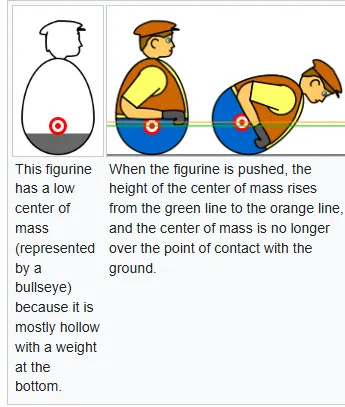

Canvot wants to move his towards where the ball is. Therefore makes contact with shoulder / hip then gets the leg in front.
The Saudi striker overcompensates (instead of getting his right leg across and wait to get bumped into to draw the foul), and will be sent packing
The striker wants to contest with the upper body (bad idea), forgets the lower limbs and JD can reach for the ball anc nick it.
This is clean, because JD used the space to track the runner and only intervene when he’s in direct line with the ball and the goal.
A defensive intervention will feel natural, and likely to get clean contact.
Hip vs hip, who times his leg movement to kick the ball first.
Coming from behind the player, echoes elementary principles of overtaking
You’re entitled to overtake when your front wheel (axis) is ahead of the opponent
If your hip is behind the opponent’s, no matter which mechanical prowess Caicedo can show off to nick the ball.
Biomechanically impressive from a movement standpoint (and strength with his other leg) to create a hook.
Still reckless, and rightly called as a foul because the opponent got a touch on the ball.
In the spirit of the game, it's not a clean intervention as you're out of position.
Tackles in the grey area will end up as a foul more often than not.
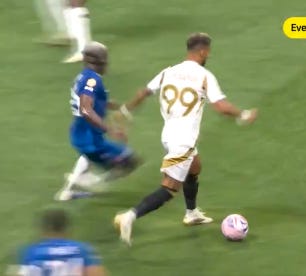
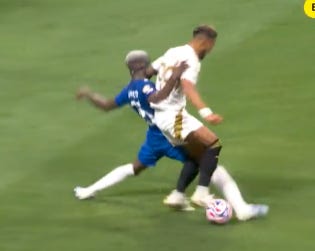
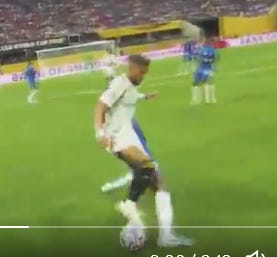
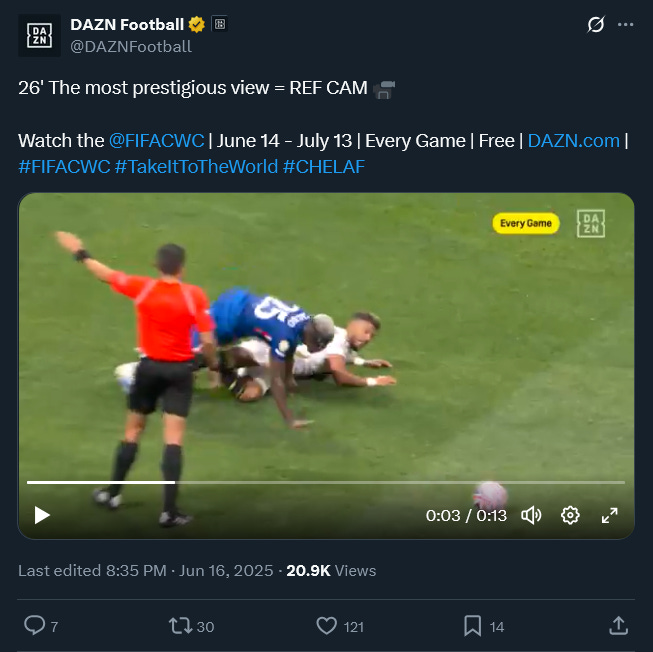
JD’s recovery is clean because there’s groundwork to it. Doesn’t charge into the player from a position of not being in control of the ball.
The player is bumped outside the ball’s area because JD overlapped his space with it.
Players are skillsets ; not positions. JD Canvot has been used in the backline and midfield in the Toulon Tournament
An eye on anticipating that pass will be square : block the easy passes (back and forward) so that the opponent will gamble the remaining option - the much maligned (for a reason) square pass. Ball doesn’t progress forward, opponent can.
Reaction is explosive (power = strength x speed).
That’s why strong people are bulky (or endomorph), quick people are slimmer (ectomorph) and some top athletes are a bit of both - the ones that cost the big bucks.
If the player is ass, it's a good sign as the efficient glute-hamstring-back chain activation will spare hamstrings from bearing the workload the bum (glutes) can carry as the strongest muscle in the human body.
Some people brutalize their clutch when driving, some players over-rely on hamstrings (they also do not train backwards or at decelerating). Risky to play juego de posicion, or simply the sport of football.
Good reach to get a contact with the ball (that flukes in the defender’s feet)
Thing you’ll notice about top level players : they’re coiled springs, always bouncing about.
From a stretching position to reach the ball to bouncing like they’re on a trampoline.
Quick feet close together on the small circular surface of their toes, meaning they can spin at wish and land/start pushing from where suits them (instead of having to do more readjustement steps from giant steps)
Carry is nice with the laces
However the final pass is disappointing in isolation
Ball hit slighty underneath, therefore takes off
There’s elements of decision making to adjust organically to what happens.
One of the strong filters for decision making for defenders - in other words, you can cherrypick when evaluating one
This is like a jazz riff. Signature patch here and there, that reminds you of the song ; more than perhaps everything in between.
Bits of the opening of “So What” when Miles Davis enters the chat is something you can hear, or see
These are the signature moves from the song.
So are the situation of “decision making in defensive inbalance”.
Three bits per game will tell you more than everthing that happened in between
From a throw in (from left to right)
The striker inteligenlly feels the defender bombing on him, therefore flicks in one touch to break the press
That’s the situation, fullback jumped with little care who was roaming behind him, midfielder (3 that’s the left back Louis Leroux) like a fish out of water has neither tracked the channel runner (something Gallagher does, which is why coaches rate him)
Leaving Canvot half / half
That’s the interesting piece of decision making
There’s an overlap, and JD continues his sprint to track the runner
and keep him in check.
A situation that could’ve been ending up with the CB tackling shadows whilst the overlap is sent through.
Speaking of really bad ; Marc Cucurella’s defending generally is.
Caicedo’s positioning (takes the long way as opposed to protect the ball-goal line).
Very difficult situation to read for Cucurella, 1v2 with Plata doing something that would require a team of NASA scientists to be qualify as “an overlap”.
Lunges flat footed legs open without decelerating on the carrier, who slides it to the overlapping team mate, and the sorry sight Chelsea fans are well accustomed to : a whirlwind of hair running in treacle back in the space vacated. Not even the best left back in Hammersmith & Fulham. Wasserman client Antonee Robinson is.
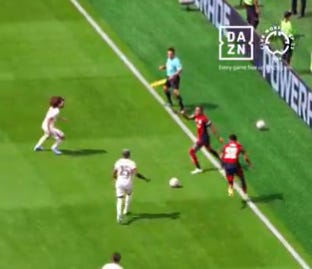
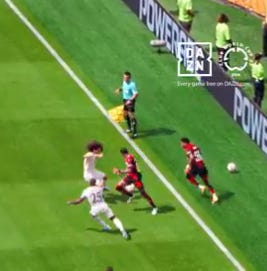
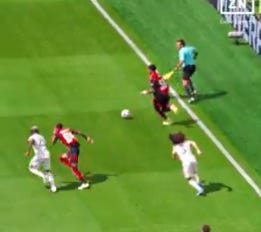
Succesfully managing a 1v2 defensively, would be the cutoff line between U11 and U12 in any half decent academy.
Metric modulation and footprints
Jazz is about illusion, because it’s a polymorph expression, a living endeavour that carries along the musicians all tied with a web of submiminal connections.
Wayne Shorter (tenor saxophone) composed “Footprints” and recorded it at the start of February 1966 featuring Herbie Hancock (piano), Reggie Workman (bass) and Joe Chambers (drums)
Because Miles Davis loved absorbing and reshaping compositions ; his Second Great Quintet (after the sextet from Kind of Blue, 1959) formed in 1966 involved :
🎺 Miles Davis : trumpet
🎷 Wayne Shorter : tenor saxophone
🎹 Herbie Hancock : piano
🎻 Ron Carter: bass
🥁 Tony Williams : drums
they recorded “Miles Smiles” in 1966, introducing modal modulation :
Time signatures in music indicate :
The top number indicates how many pulses in a bar
The bottom number indicates the value of ♩ ; the “quarter note”
I was part home schooled and educated in the Montessori method, hugely reliant on sensory experience and kinetic manipulation of objects to grasp abstract concepts.
This below, would be a way to grasp how tempo works, featuring one of Microsoft Office Beans. I would create digital comic strips with that merry band when I wasn’t drawing them myself.
Moving a bar, then a triangle and square ; tipped over at regular rate creating a cadency (or drying rack) where to put the music.
Around two minutes, Tony Williams instigates a change of feel on the drums from a three pulse rythm (12:8), to a binary one (two pulses) with the 4:4
This is revolutionary, as the tempo doesn’t change (nor the song speeds up), but the pulse does
Ron Carter on the bass adopts a Cuban rythm that aligns with both the three pulse, and two pulse, like a tailored musical cushion.
Herbie Hancock’s on the piano does what’s called a polyrhythmic comping, which aims at blurring the change of pulse and making it more organic and natural, by drifting over time and blanks.
Miles Davis adapts and reacts to the new feel.
Footballers move around on the pitch,
The modern day tragedy of relying on metrics such as “high intensity sprints” as the be-all and end-all, or dashboard of GPS signal (initially designed to find boats in the ocean, the size of a football pitch), or sometimes radio frequency (for clubs keen to upgrade their training pitch with equipment). Your MacBook pro pitch side is begging for a flying stray football impact.
Computing “how much” is an epistemologic and conceptual mishap opposite to “where and when” does the player run.
Footballers will game your GPS in training, using all sorts of stratagems, sprinting to get a waterbottle not the least but also running after lost causes, fake pressing, shortening one step in their stride.
There’s a now professional footballer (I signed) I cornered eye to eye in a video session with footage of him shortening a step in a pressing run to “inadvertently” be half a yard short to get stuck in.
Next summer, he will beat the club record transfer fee.
The question of timing, metric modulation and footprint echoes the perpetual and non-linear chaos occuring in the game of football
Football is a complex system because :
situations can be relatable, never identical
the whole is more than the sum of it’s parts ; it’s all about the interactions
previous events give you an history ; but can’t predict future events.
No matter how many digits your Magic Beanology Retail and Consulting Service is invoicing.
Footballers are all fast, getting around the pitch with coordination skills that would make them standout from regular joe packing their car boot whilst looking after the dog.
What makes some players thrive and “change the picture” against counterparts that generally are not - in the grand scheme of things - more freakishly athletic (encompassing : cognition, range of movement, repeatability and consistency of it) ?
JD Canvot reacts fast,
Takes one screenshot
Takes a second screenshot
Sorts his feet so that he receives back foot.
The striker attacks him from the edge of the field of vision (mentioned in every striker feature) ; JD only sees a shape. Is expecting someone to get at him from that side.
Creates a bait, or a metric modulation creating a footprint that disrupts the striker.
You’re not actively computing the number of steps, but you know who’s gonna get to the exit turnstile first in any of the statons around Oxford Circus where the double digit figure of access tunnels means you always have a diagonal angle of approach cutting across the otherness.
JD lands the tip of his left foot on the floor
then proceeds to get in the starting blocks, deceivingly to sprint elsewhere.
If he “sprints” normally, then the chest leans forward and the striker can get across
If the left foot lands removed from his station, that naturally creates the start of that sprint without changing the upper body stance ; which gives conflicting cues to pressing players
Ball mastery requires a set of fundamentals, but it’s still essentially also a game of playing with and against a dyad, whether a team mate or an opponent.
If ykb (you know ball) ; you know
Running at a team mate whilst carrying means : please get away from me
Running away from the carrier means : I’ll be about to check out to come short
When it comes to bamboozling opponent pressing you, defenders have an alternance of short and longer steps they have to use accordingly.
JD punches the ball with the laces for an immediate getaway touch
Just like Tony Williams on the drums, Canvot isn’t going faster.
He modulates his short first touch and longer second touch to create the illusion of speed ; from the alternance more than sheer velocity.
The second touch is closer to a “banana drag” in order to regain resonance with the ball trajectory (to keep it in his stride) and change direction. The ball is slightly cushioned and rubbed in the leg movement.
The next touch is punched like the touch, for a similar effect : get away from the player pressing
As the picture changes, JD floats with a cushioned touch with the laces to create a liminal state where he’s trying to attract the attention
Touches shorten but he’s still running at the same pace
JD changes the mode, not the speed ;
just like the Second Great Quartet did with '“Footprints” .
One touch per couple of steps, compared to the previous “punches” or “banana drags”.
The timeline of release is safe and secure, seeing there’s a nice 2v1 to play, and in a position where he can also drop in support of the subsequent attack (there’s no point taking people on - unless you’re 80 million Wesley Fofana succesfully entering final third 2 times per game).
If you listen to Jazz, it’s because you’re embracing the idea to be carried into an universe that is relatable, familiar but over which you have no control.
Chasing a shoulder-dropping CB is relatable
It’s all about the angle projected by the shoulders :
That con the striker into aligning on the parallel
So that when JD decides to change gear, his shoulders are therefore at a bigger angle than they were on the initial frame (where both players were parallel)
A central theme in the Kianology newsletter
Look one way, play another
Saudi’s Left Winger is baited into taking steps towards his left shoulder based on the fake cues given by JD whose shoulders are facing the touchline
For a slick and smart masked pass in the interval, despite the shoulders / hips / left foot pointing towards #13
Football : what happens in between.
Giant Steps
John Coltrane was extraordinary at creating a gradient to jump from key change to another. In 1960’s Giant Steps from the eponymous album, Coltrane was bridging junctions by creating a passerel.
When you play thee notes together (harmoniously), it’s a chord. You can do it on piano easily, on a guitar.
On a violin or chord instrument if you press the bow enough on the chords.
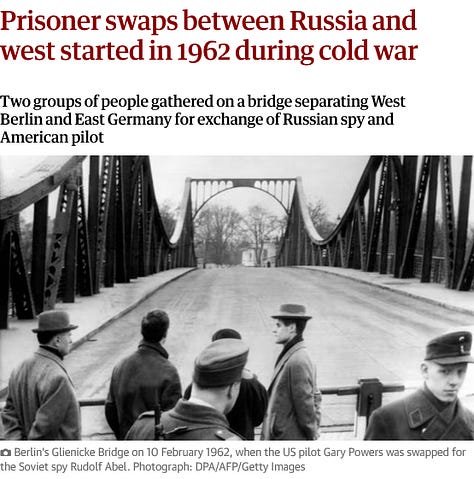
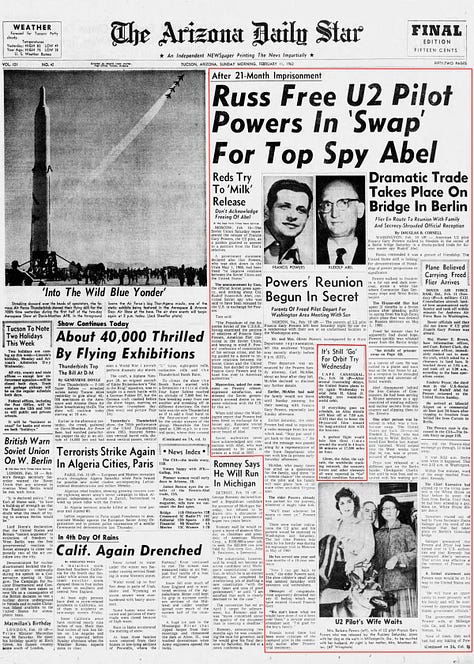
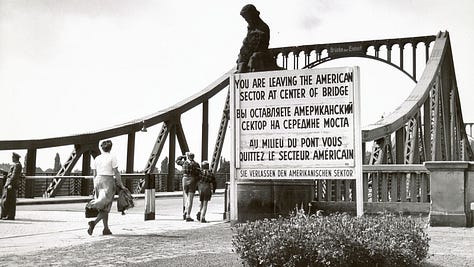
Coltrane’s genius was to go beyond frontiers, or the alternative en vogue at the time : a demarcation zone in the middle of the bridge.
For wind instruments such as trumpet, saxophone or else ; the exercise of chords exercise isn’t possible and you therefore need to do play notes in succession.
For that, he’d build the bridge with runs of arpeggio for which he’d pivot mid-phrase such as starting circa one minute. An asymetric bridge between two musical worlds
Or scalar runs to play consecutive notes in succession.
Creating musical motifs, then scaled up in a different mode ; were blended with other musical motifs. Navigating the idea to change the mode (which I always thought as “happy” for major or “sad” for minor), keeping a familiar pattern but changing the color of it, whilst introducing new ones midway through.
Pre-emptively announce the change of tone, and going back at it after a circonvolution
In “Du Coté de Chez Swann” (1913) Marcel Proust’s narrator reminisces of his childhood memoroes ; with the smell of hot “Madeleine” bringing back the universe of perception associated with a point in time.
The concept of “Madeleine de Proust” finding it’s way in the culural folkore.
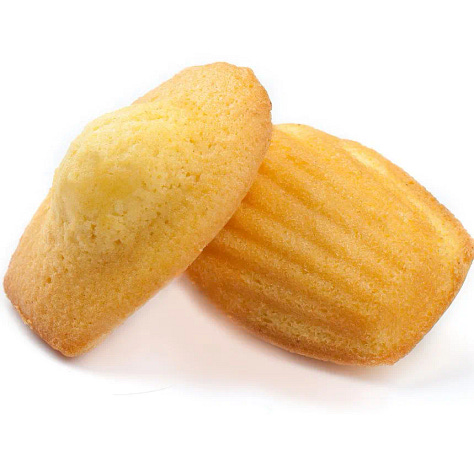
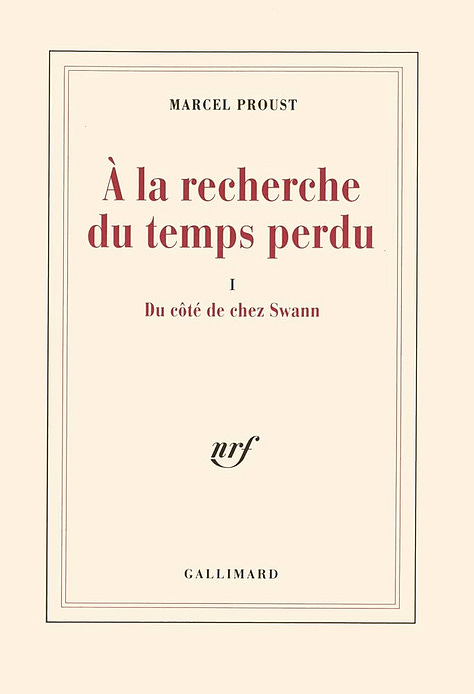
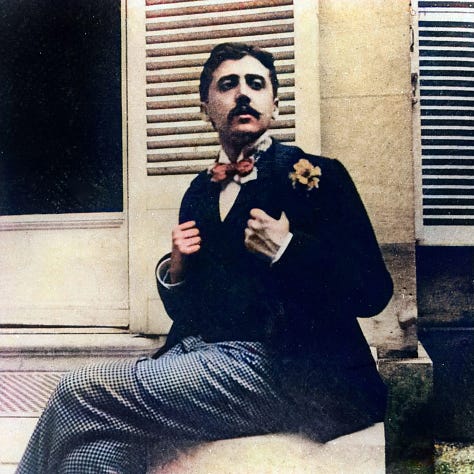
Solitaires - and the cinematic after completing it, certainly one of them.
Simultaneous waterfalls echoing John Coltrane’s.
preparing a circonvolution ; is what JD does, from the perception he’ll have space but maybe not for long
He’s in charge of showing for the ball the moment he escapes the forward’s field of vision, triggering the mexican midfieler’s closing down run
🌠Rafiq Lamptey - Millwall U21s
Rafik Lamptey joined Millwall U21s from Harrow Borough Under 18s at the very end of pre season, August 2024
Don’t show up where you want to receive already, you’ll be covered
The task succession evidences forethought, and spatial understanding.
The best way to see both goals whilst moving forward, is to run in a broken ^^^^^
Break your stride with left / right shifts, so your next shift can be towards goal if needed, and more importantly ; unpredictable
When receiving at an angle, the same applies.
Receive with a square angle to turn (blue), is the easiest way to get mugged below the centre circle. The ball isn’t shielded
However, creating a circonvolution creates the room to draw the defender lunging it.
That’s what JD does with the white trajectory
That outside of the boot “chop” to get away is something you usually find with top dribblers (the Florent Malouda shifts and chops), rarely with big players.
That chop to change direction again is top level relationship with the ball.
As you have to slice the ball
The way you cut an orange if you’re not human ; which is with a knife.
There’s no pleasure in that, just stuff yourself with a box of Jaffa Cakes.
If you go under the ball, you’ll leave it behind
If you find the right tropic to “chop” the ball, you’ll gently squeeze it with room to roll
If you punch or hammer it from top down, you’ll compress it and fall over because realistically the ball's not gonna go anywhere - unless you play in quicksand with progressive carries in all dimensions
Suspended cadence
Aged 24, Herbie Hancock led “Maiden Voyage” in 1965 starting with the iconic modal tension (without the resolution we see in traditional music).
No time to look behind, we’re transported and floating through space.
The Penguin Guide to Jazz designated “Maiden Voyage” as part of its Core Collection
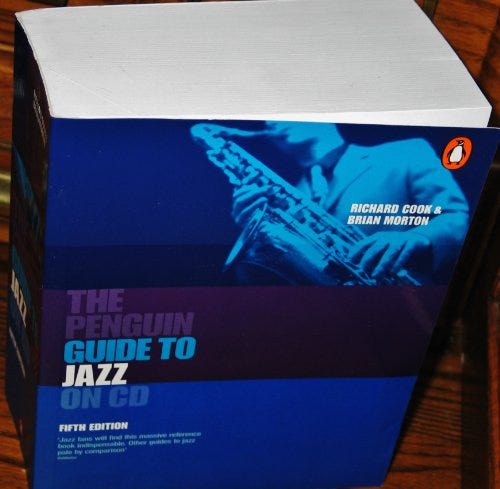
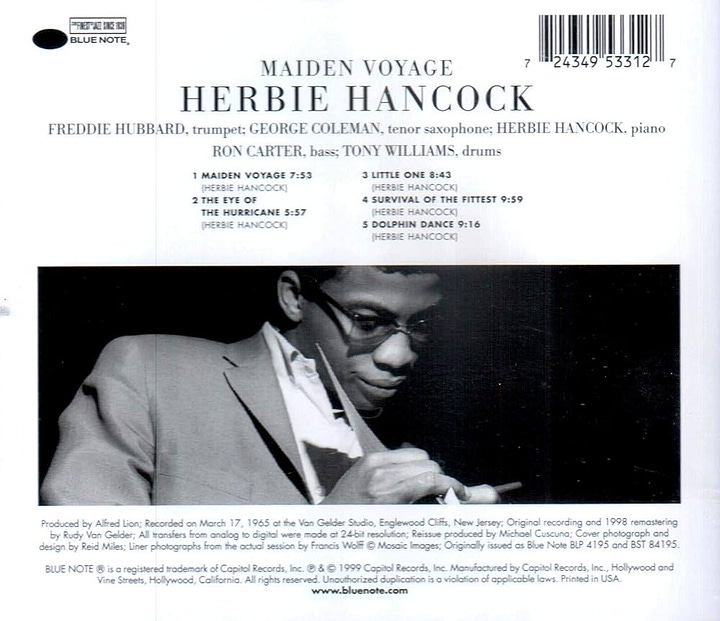
Suspended cadence would serve a disservice to this back to front delivery.
I know where I want to go, I’ll just hover by going over it.
Over hit, that pass isn’t, and if you have an anchor upfront ; why not using him.
One thing French CBs won’t take, is decision making ingerence : the pass is there, I will play it. Academy coaches quickly learn to embrace it, or told to sit down in more less uncertain terms.
Speaking of taking something away from them, it is *their* spheric football and they’ll stay on it until a stronger player knocks them off it - there’s no such thing as a stronger footballer (at least for their carefree mindset).
International sign language;
Enough mucking about
Get up the pitch
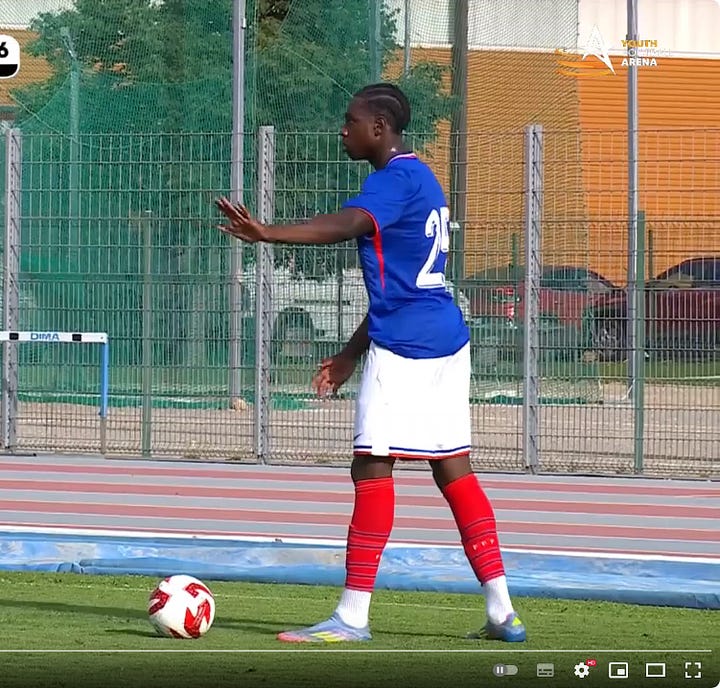
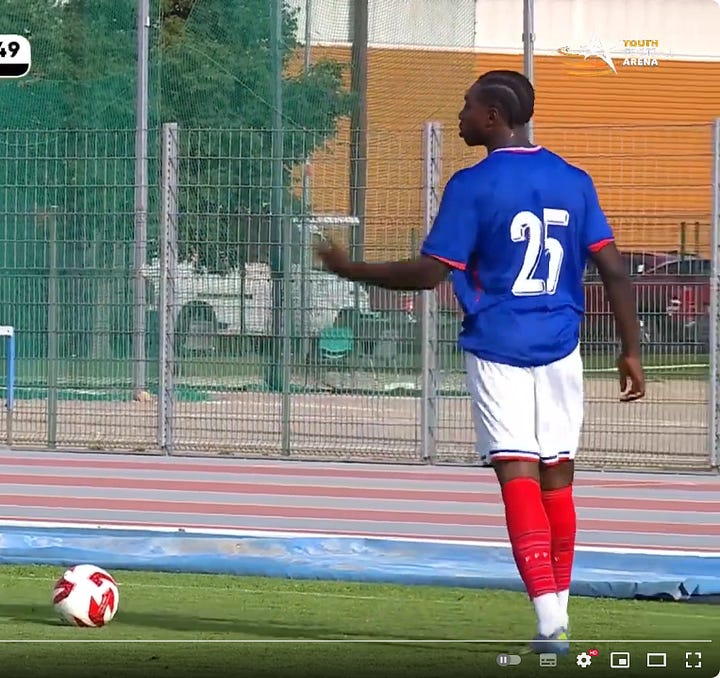
French CBs are an interesting magnet for nonsense ; will give some but won’t take any
As a matter of resolution from some tension moments before
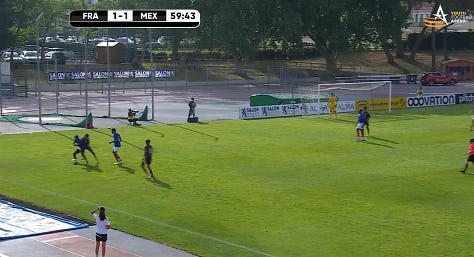
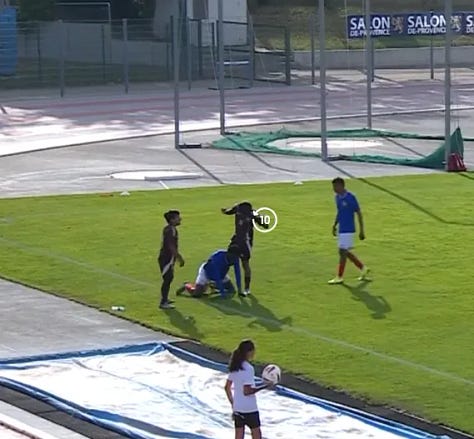
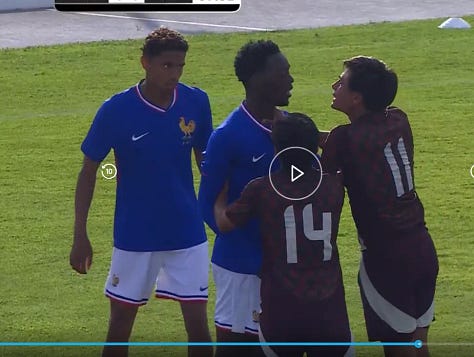
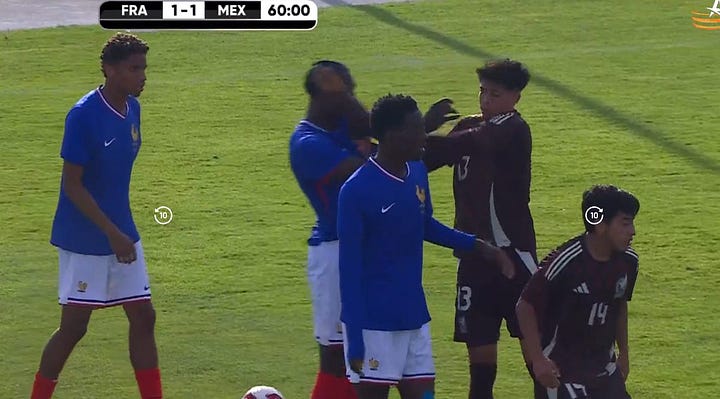
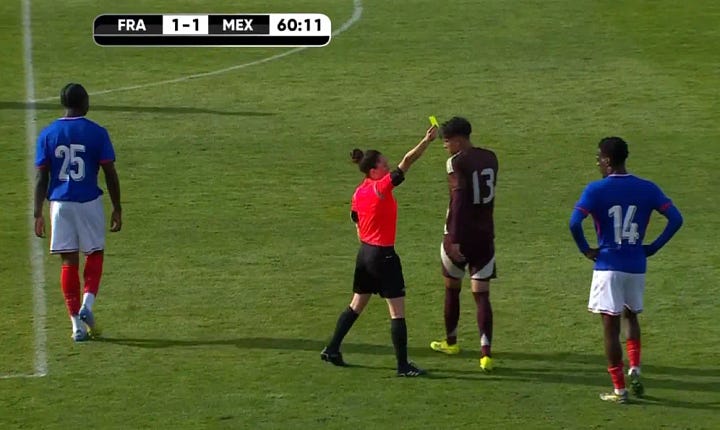
Speaking of push and pull.
A defender tucking in their jersey means business, for the mere reason that it’s harder to pull.
Another filter to look at defenders ; either they do by the rules because the ref tells them to do it in the tunnel. Therefore when the striker tells them they’re a wimp two minutes in the game, their answer is likely to also be “yes”.
Say goodbye to protecting a lead.
Or they tuck shirts in on their own accord. They’re not here to put the kettle on.
Or butter the toasts. (thing we do in France, English melt clotted cream, thing I figured out after buying one that I started attacking by the spoon before being told no we don’t do that sir).
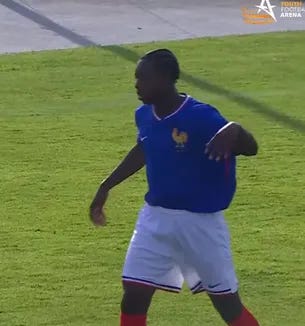
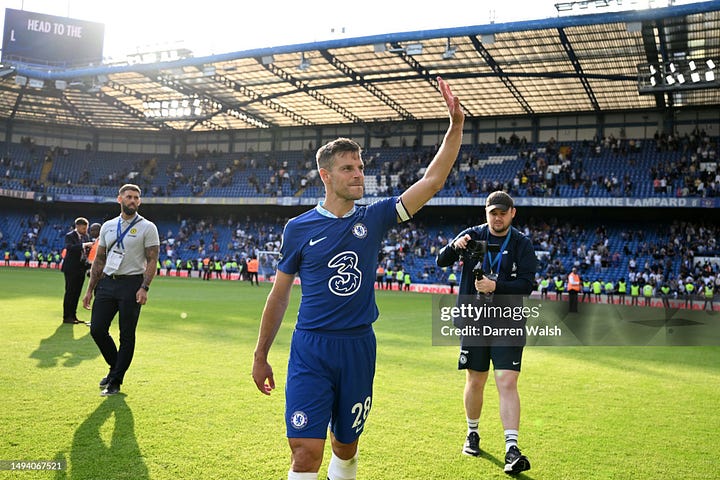
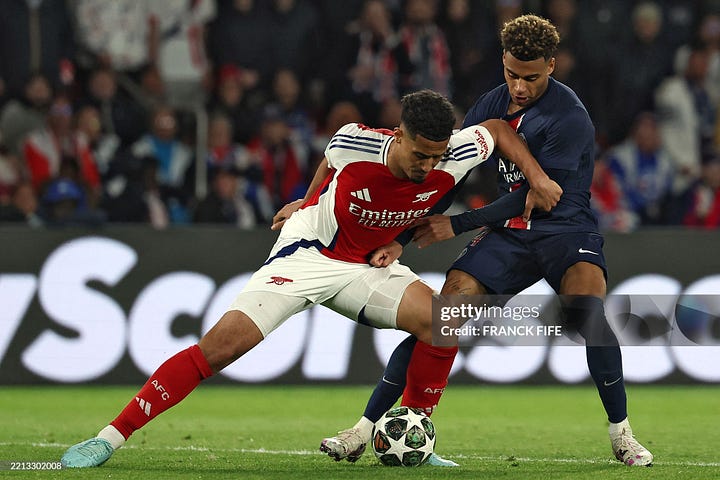
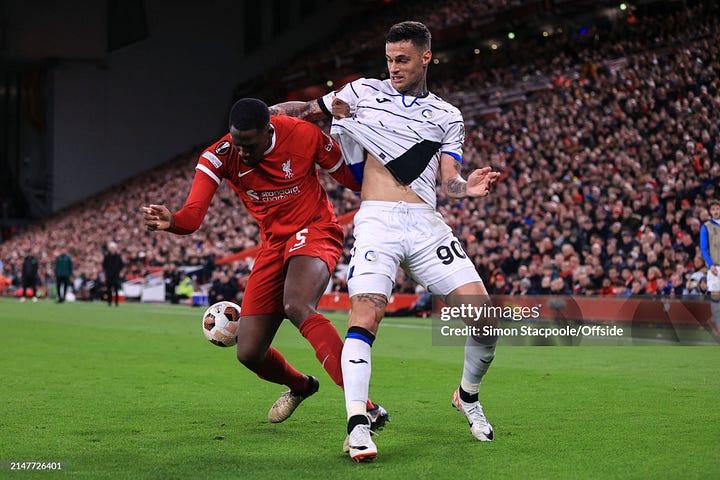
A clean hit :
Support foot next to the ball pointing in intended direction,
Follow through pointing in intended direction
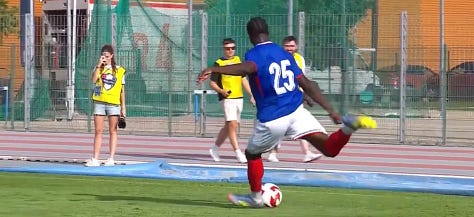
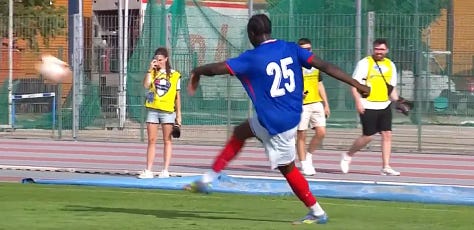
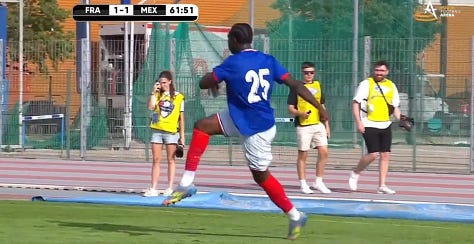
Chested by Ngoura for
Jazz is simultaneously a lesson for economy or rationality whilst being none of these things : use the whole range of options, for a purpose. You’ll see, it’ll work out.
Tonal inflecion
Nothing to do with governing body’s stubborness to inflect the length of Sandro Tonali’s ban.
It seems all of the same to me. But somewhat, it’s not.
Imperceptible details in Jazz create the realisation that the artist is indissociable with their art. In “A Love Supreme” (1965), John Coltrane repeats the motif in similar but never identical fashion by altering the breadth or the attack.
This is a patch of the game I found interesting in it’s narrative arc.
Player jumps for a header, wins it. Player jumps for a header, this time it’s called a foul.
As the ball is roughly at its apex (somewhere near the floodlights), JD Canvot starts his leap which is the timing CBs have to nail.
The striker decides to get hold of it, trying to trap the ball by legal means.
In the way to reach the landing point, he cushions the opponent to slow down his momentum that started whilst the ball was in the air, for the purpose of competing
As JD is about to leap from a position where his arms are cushioning, slightly over the opponent’s shoulders
Here lies the whole nuance :
I started my move before the striker started moving
I started my leap as a follow up from the apex point (as trigger)
As I enter the other player’s personal space, I’m cushioning my momentum, overlapping my space with his, displacing him which is a consequence of my movement (and not my intention)
as I’m getting up in the air, my hands act as a buffer (or load) that doesn’t prevent the defender to jump, nor pushes him to the ground. Just adds three bricks in his backpack.
The subsequent play (not with JD)
involves questionable deceleration (not unreal locomotion in the FT verbiage)
The shove isn’t an attempt to play the ball. Foul.
This is the granular nuance that Mrs Sara Tekel from Austria could and did grasp.
Deceptive cadence
I don’t think anyone’s ambition revolves around “grasping” Jazz.
You are privileged to follow along, but a “resolution” you musn’t expect, but rather getting carried into more uncertainty. Jazz is inherently melancholic, and different states of feeling blue co-exist, add-up but rarely disappear into thin air.
Some of us know it will always be there and creeping in.
in Blue in Green , there’s deception in the way the melody builds up expectation, only to add more mystery (before the minute mark).
There is a skill in reading aerial flights - that sometimes seem easier for the layman through his prism of TV footage.
The best place to watch a game is up the corner flag to get the closest to an isometric view ; you perceive width and depth, not a 2D view (dugout perspective entitles the viewer to hold the duties and responsibility of their function ; you also can't see a thing).
Defenders must judge sound, time, ball spin and its size : for a defender facing a long ball, the ball goes up and down in a range of 3-5 yards.
For a TV spectator, it makes a parabolic easy to follow with the finger over 30 yards.
This is a chance to make a detour through the Gestalt Psychology from the early 20th century, investigating visual perception and cognition;
“Horizontal lines are perceived as restful and stable, while vertical lines evoke strength and alertness. These associations are not just cultural—they reflect how our visual system organizes spatial information.” — Gregg Berryman, Notes on Graphic Design and Visual Communication (1979)
Some of the principles are developped here, the same that are craved for by people designing your favourite applications (and UI) to keep you hooked with a capital H.
The gaze, or eye is usually more equipped to perceive information on a horizontal plan, than it is on a vertical plan.
Bartender science would probably suppose it’s the legacy of hunting (every day), over looking for meteorites (one day) hitting your barn.
It requires gamemanship to move in a way that seems natural but actually serves the purpose of it’s side effect.
JD takes a longer stride, his arms for balance inadvertently shove the attacker away from the drop point
It makes it look like the striker got beaten by the trajectory.
What do you see? Ask the referee. Can they see?
This is the grey area defenders play with at every level of the game.
The change of direction is natural and immediate, left leg more or less in JD’s area so he can directly cut.
Ducking under the ball
To riff on the idea that not every action is measurable, and that not every measure actively captures what you’re looking at :
There’s two things to look at ; the agility to head backwards, which requires core strength and is way harder than it looks.
JD ; side on
is however caught flat footed, a concentration lapse
resulting in heading the ball backwards, as opposed to chesting it if his movement “resonated” with the long ball more. That’s a reaction, and an adaptative reaction.
Rebounds are organised chaos : some decide to ignore it, and blame the elements (the pitch, the schedule and referee) when their squad / lineup / players are unprepared for it.
Some actively build their team to dominate it.
A sequence involving Ullrich and Aristide, respectively internationals for French Guiana and Congo U20 since, and profiled here :
That’s Mourinho moving from Van Gaal’s linear football with no transition, to Mourinho embracing the more organic nature and demands of the United hotseat.
Play on the front foot, dominate midfield to feed attackers and get the ball in the box
Triggering the leap at the apex of the trajectory (not here)
Actual footballers know the difference between an elbow (that stays stiff) and using the arms to cushion/push)
Nodding to head the ball
Protagonist footballer
Give me the ball
There’s a cheat code I’m almost hesitating to give away
On a set piece, if you start on the “last before last” step, you’ll get a connection.
The taker is landing his left, then the right as the support foot.
Then obviously the left to kick (but not land)
That’s what resonance looks like.
Jaydee Canvot isn’t moving about whilst the cross is shelled in the box, aiming at connecting on a blue moon.
He’s actively timing the start of the run at the exact moment in time that matters
Oh, surprise, ends up in the perfect spot to head the ball, unfortunatey crashing on the angle of the goalmouth.
Noise and signal
Who do you see? Djessy
I joined as U19 Head Coach in December 2019.
Loss of academy status, mass exodus of players. A club that once platformed Nordi Mukiele, Oumar Solet or Serhou Guirassy ; signed from Paris’ talent hotbeds - or regional nestled village such as Amilly for the now topscorer of the Champions League.
With 45 players for three teams, it was about survival and a reshuffle of cards opened up the U19 vacancy.
Both the U17s and U19s would compete in the National western league seeds, and the B team in National 3. Many players would play across age groups, U17s in U19s and U19s in the B team ; sometimes pushing it to 45+90’ on the same week end.
I’ve explored many facets of that experience from a different angle each time, from a management, coaching or recruitment standpoint.
18 December 2019 would be my first home game, the third game after winning at Tours 5-2 from 2-0 down at half time and 9v11 ; followed by a 0-5 qualification in the French Youth Cup to reach the 5th round
Kick-off brought forward before the traditional winterbreak would see the powerhouse Girondins de Bordeaux turn up with 3 pros, two internationals and the big team bus.
I’d have none of that ; nor would the club, still incensed their opponent on the day could “tap up” a player and get him move over on the day of a U17 game a few weeks before.
My idea of space and time aligns differently, it reflects or resonates more with what I see in players rather than what I’m told or their pre-scripted timeline of events.
Experience is shorthand for quality. If you can impact a game, you’re on the pitch.
I started the 15 year old goalkeeper, in his U16 season ; at U19 level.
The U17 were clearly struggling, some of the core players featuring for the U19s, the community scheme’s U16s filling up the gaps.
By december 2019, the U17s hadn’t won a game.
U19s, floating about, flying at home but struggling away. If some U17s would look the part ; Djessy got sent off in his only U19 outing in September and hadn’t won a game either with the U17 to the point where questions were raised about his conjunctural presence to bad results.
Is the team losing with or because of Victor Guzman?
For sure, tying his laces in a 0-5 defeat in September carried more symbolism than the mere symptom of a distended defence, just as much as the baroque orientation of his snapback which got himself in many people’s blind spot.
Snap(ping) back was however not his thing, and he eventually missed out on the French Youth Cup subsequent round, as the referee was more interested in naming the first African sounding patronym on his card, so was the staff member interested in filling up his glass of whisky after the game to adress the adminstrative error on the game sheet. Alas.
Fraud only works with ‘‘he drove the bus’’ jibes, not for Andre Marriner-like colorimetric booking allocation refereeing mishaps (we aren't talking mixing up yellow and red). Guess which one protagonists have control on.
Not every “big” defender is a tank, even if Djessy was built like one.
Still the cleanest passer of the ball I’ve seen at that age. The full range, laces, punched, clipped, line breakers.
Djessy played his second U19 game vs Bordeaux as I projected on him the full extent of my trust, probably already seeing an idea of the motif down the line.
Three games in a week and a half, first weeks in the job ; you do what you deem more relevant in the moment. The big picture is extraordinary, we went home at the winter break in 6th place with three wins in a row. Having lived sparkles of it, that’s where the commendable ability top flight coaches come to play ; having to navigate the ship in the storm (being aware of the noise, if not on a granular level), whilst fanalysts outside would discuss their strategic choices even decades later.
There’s two other players who became professionals in that team (Bamo and Dembo), and that resounding 1-0 win vs Bordeaux certainly put them on the map.
The 15 year old goalkeeper didn’t have a single shot on target to handle, and created memories for a lifetime. Not once was he asked to paint the penalty box like an Etch a Sketch screen with short goalkicks.
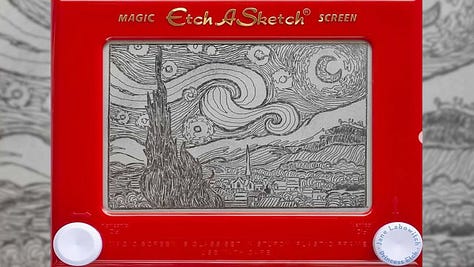
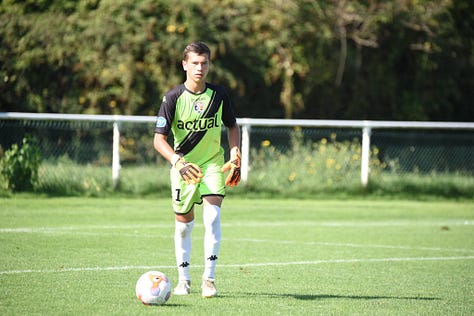
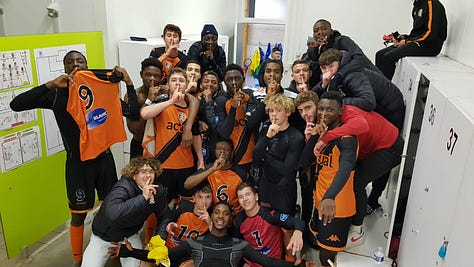
Beside the odd blip at the start, Djessy performance was flawless as he kept quiet one of the most dynamic front three I had the (dis)pleasure of coaching against.
Ouest France ; most read French regional daily newspaper, quoted “No one will think to contest their victory earned against a side that never managed to destabilize them.”
Quickly down to 10 after half time being 1-0 since the half hour mark.
I turned the initial 5-3-2 into 4-3-2 jumping a CB into midfield to keep a screen of two strikers pressing - changing the shape, not the motif.
That quick thinking (coaches would always move to 4-4-1 down a man) was judged a masterpiece of decision making.
That’s my “Phase 1” ; before the knives are out and my every next move is put between a rock and a hard place.
Djessy held his own with some extraordinary ease as we saw out a resounding 1-0 win. Not me over hearing in the gym players discussing how “they had never beaten Bordeaux before”.
The space / time dissonance was such as I’d never guess (nor would anyone) it was merely his second game at U19 level, and first win in all categories since the back end of the previous 2018-19 season in the highly not competitive U16 Pays de La Loire since moving from Ris-Orangis (Paris south)
A triplet on the ball
In what we call “double croche, croche” (english use fractions, I don’t)
Two consecutive steps with the left, to push with his outside right laces.
Doing it consecutively so that he always keeps the ball outside his foot, on the outside of the pitch. Reminiscent of a hockey player keeping the puck on the ouside? Maybe
A few floating touches
Before a twist in the road with the defender pressing.
Just as Djessy would pump fake a long ball; and bait the opponent to sprint to get a chance to block the pass.
Djessy slides across his right shoulder and glides across his right shoulder
for chord instruments, that would be called a “glissando” as you’d keep your finger on the chord moving up and down to create a continuous sound or liaison between two tones.
in Fall from Miles Davies’ Nefertiti album, the bass (Ron Carter) takes us, not rubbing against a rigid background musical pattern but a few glissando here and there to smoothen the ride.
There’s one at 2:15 which I kinda loved doing on my instrument, especially with deeper chords, to mimick a rubber band or a teardrop.
Or an interrogation point ? Or Salvador Dali’s mustache? Or the purfling on a violin?

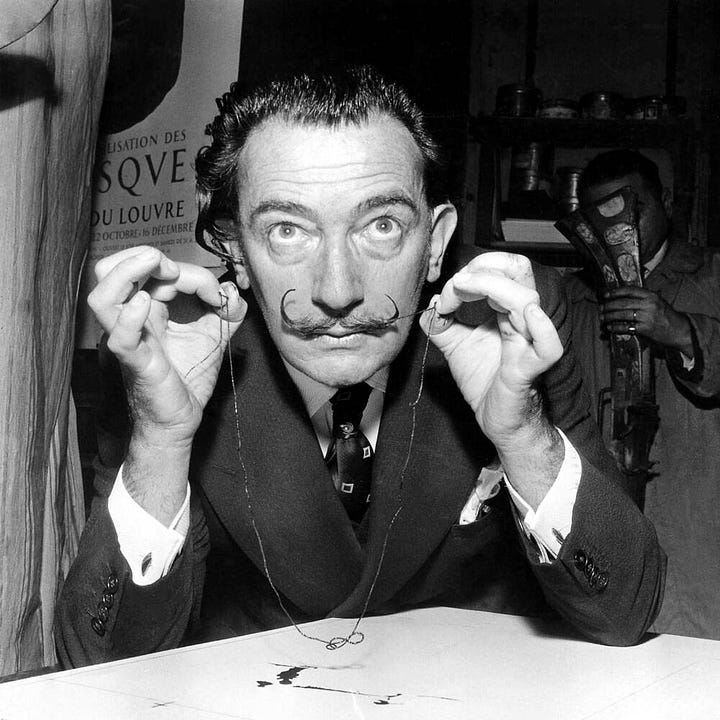
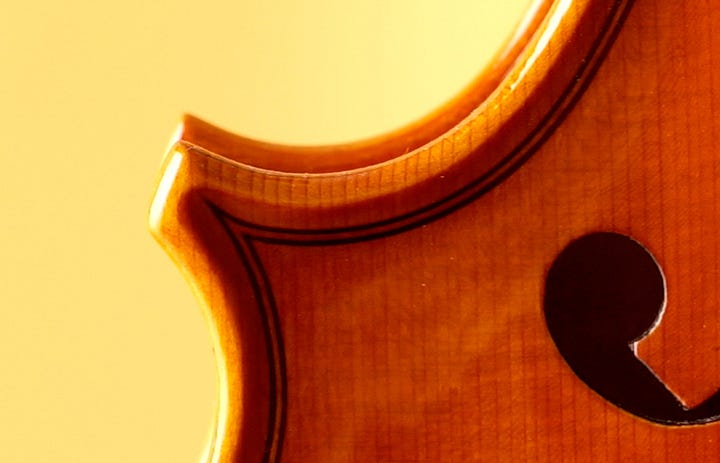
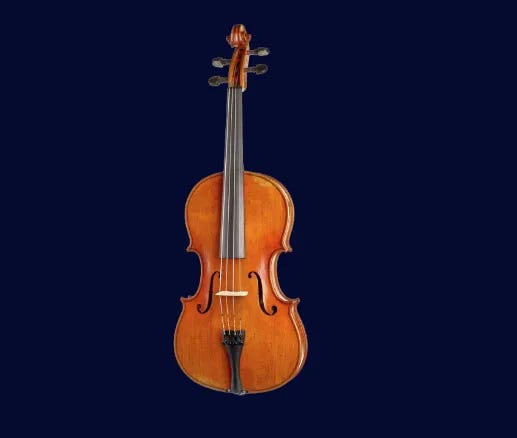
On the follwing play : a smooth “soles + swing right + release” chipped over an adventurous leg without blip
One week before the dreaded curtailing of competitions in March 2020, Djessy covering the space transforming an “on the shoulder” situation in a… cone in which he can let the striker melt.
The one player on the move, towering in the middle of the back three.
The clips should be akin to notice the bass in a jazz song.
Who do you see? Djessy
Carrier finds time and space, who’s already backtracking?
Ball with the left back (attacking to the right side of the picture) v
Djessy, below the “v” (or the lone tree on the right of the picture) already taking a few steps before the left back sends a ball flying in the channel.
Djessy’s leadership was something to beckon. In the firing line, but he was definitely the modal note in his designated canteen seat, with team mates fanned out around him ; even being U17s. In certain (online) quarters, called “aura”
Confidence is a fragile thing, but the ceiling is anyone’s realm of possibilities.
I do love a wind up.
All the more since I realised going against the tide was usually some kind of compass to fall back on your feet, especially when it comes to profiling players. Someone has got to be right ; if the player is angry at his treatment, give the opportunity to prove people wrong (or accept that the ball doesn’t lie).
Not a tremendous enthusiast of goalkeepers captaining the team, with the best defender Yazid - as well as Bamo (who I converted from CM to CB where he now plays professionally and internationally) wearing it in late 2019 before cementing a place for the B side.
I did experiment a few captains over the course of January (Dembo being one of them), and ended up giving it to Djessy.
Rock bottom at half time of my first game; our run of form at the start of 2020 aimed at knocking Bordeaux off their perch. Which we eventually did.
That game at Vannes (in the extended Manchester City Football Group) and a 1-0 win in early March 2020, with 12 players including a goalkeeper I dressed as an outfielder on the bench just in case.
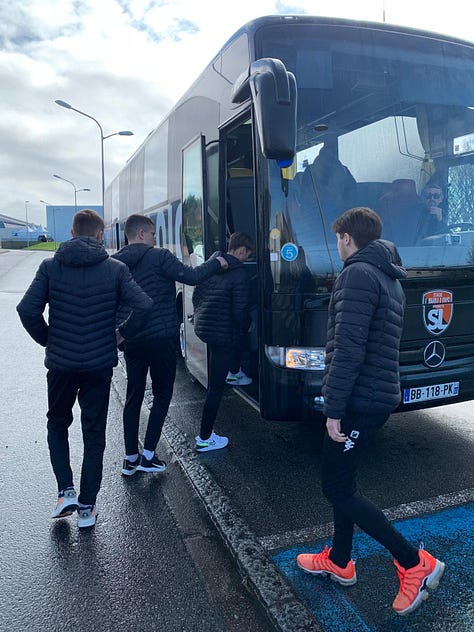
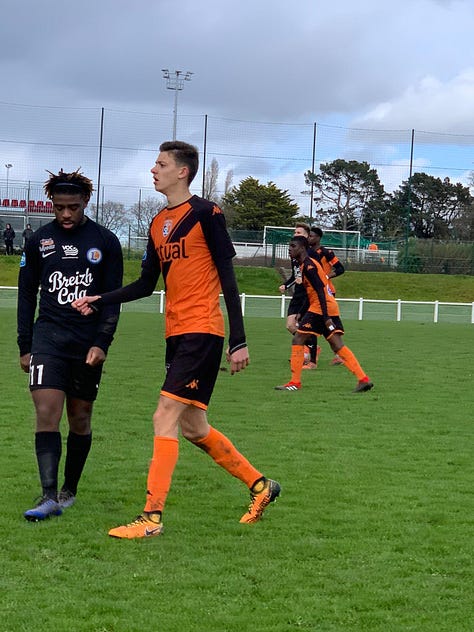
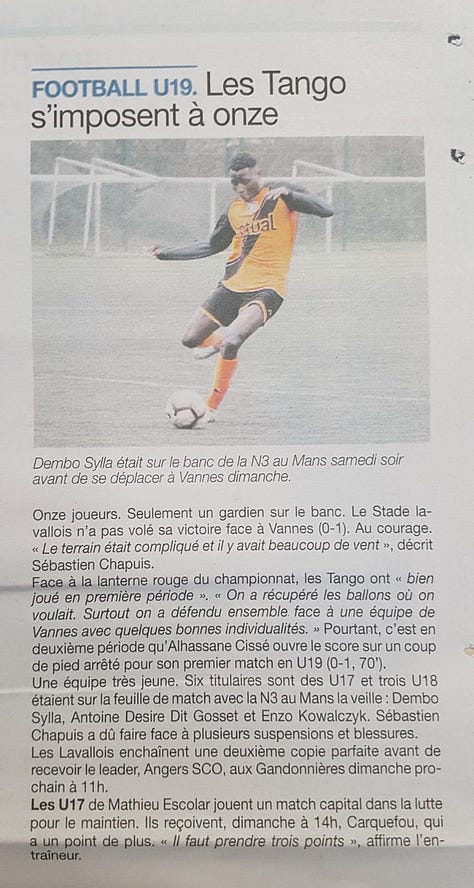
Travelling with the royal carriage, privilege stemming from the Chairman’s presence to the game (used to attend U19, B team and First Team games on the bench ; and did a few away games too).
Many people comment on football, few of them actually perform it.
There’s a bunch of coaches I wouldn’t envy, they’re the ones staring at the windshield for 2h in the return journey pretending to ignore being side-eyed by their chairman in the big bus, after failing to convince them that the process ought to be trusted, and the goalkicks taken short in the midst of a 3-0 defeat.
1-0 win, napkin math on the implications on the league table, brings up the war stories, anedcotes and club lore. We'll have a look.
And talking about Manu Koné’s career prospects, who’s advisors being related to the chairman back when he was balling for… Toulouse in 2019-20.
If I’m looking at “the data”, I will dig out an angle. I generally found one per game.
I was taunted for being too young to coach a side at this level (aged 26), and replied back saying I took it personally, fielded 6 U17s to rack up the first away clean sheet win since… 2017 at U19 level for the club.
Managing expectations, up and down ; in the process of profiling the players is made all the more difficult when you come to the right conclusions in a shorter span of time.
Situational intelligence is about processing cues faster, as I’m convinced people who work less (therefore spread over more time) would eventually come to the same conclusions after trying things that don’t work.
That’s trial / error. Nobody sits down in the centre circle waiting to be graced by divine truth. Gotta put the hours in to refine the thinking. That’s a (the) craft.
Giving room to show what everyone can do is necessary, but it cannot take hostage the condensed time resource.
The ball talks, and will speak it’s truth that can’t be denied.
It’s not a succession of jazz solos, when Miles Davies and his band would sometimes admit they’d not know who’d take the lead for how long - especially as he would often be seen turning the back on his audience.
In the moment ; I saw that squad of 45 players as one of the richest batch of players I’ve ever coached. The pandemic created an unforeseen situation of undesirable limbo where some players, homesick, wanted to go back home (or stay there).
Reflecting on it, I am still processing a lot of things, one of them is to know that as of today there’s three top flight footballers, three internationals from that group of players.
In the UK, that would be a Category 3 academy losing it’s status, becoming a ‘Category 4’. Not exactly the launching pad to professional level - which shows the relevance of signing players like Serhou Guirassy in 2013 from grassroots (and some players from that 2019-21 side as well).
From left to right pictured with the U17s in September 2019:
Karamba, the misfiring striker people fired shots at - two training sessions with me in December 2019, and I figured out he would understand every pressing run and tactical instruction, and would win a header against anyone. Here’s my new centre back, who kept Mohamed Ali Cho (Everton, Angers, Real Sociedad and Nice since) quiet, months before Football was enquiring about the youngest 2004-born player to play in the top fight the season after.
Players are skillsets, not positions.
They can all capture information, just processing it in a different way.
Finding the right channel to communicate is the craft of coaching ; didactics, not so much.
That being said, Karamba scored two goals for his two first outings with my U19s.
Maybe that was also a confidence/empowerment thing, for the worst finish to a pretty slick build up : complete improvisation, but 4 players in the box where it matters.
So what?
Djessy ;
and Aristide, who the season after 2019-20 ; having fought to recover from a freak meniscus injury during a pandemic,
Aristide had the most Man of the Match awards after Xavi Simons in U19 National League 2020-2021.
I did see the value in people and sportsmen, I would never say they didn’t back themselves but there’s a moment the tension was close to the point my belief in them was challenging their own belief in themselves. I knew.
My gut feeling from that maiden game at this level (winning 5-2 from 2-0 down 9v11) was “Seb you’ll have 2 professionals in that lot” (Dembo and Bamo).
Little voice, before cognitive bias sink in.
Ignore it is like squashing a butterfly in a storm. Why would you do that
Noise and signal
My other feeling was that there were better players in that 2019-2021 bunch that shoud have (also) become professionals.
It’s not merely a case of having a sample of size and yet clutching at straws based on exploits against twelve-points-a-season grassroots teams that sometimes wander at this level with the grace of a bunch of hedgehogs crossing the M25. Pancake anyone.
It’s reflective of how the pandemic policies struck down some in full flight.
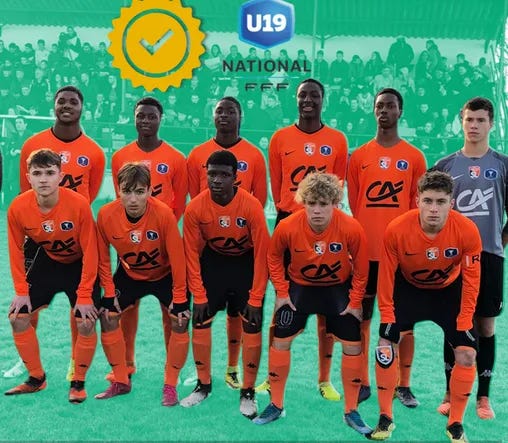
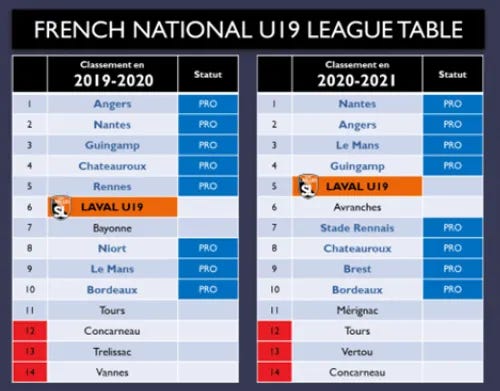
I’ve rarely been splitting hair when giving opinions on players, as I believe whoever’s the closest to the truth ought to take the lead and save everyone’s time.
I feel inspired reading the early meandering of Miles Davis, aged 19, turning up in the Big Apple outright waiting by the entrance with his trumpet case to meet his idols and eventually playing with them. I've plastered Panini stickers, then working with or against some.
Unfortunately, two voices didn’t prove to be enough to keep Djessy at the club at the end of 2019-20 (Parisian footballers all have an areopagus of advisors of all sorts that interacting with prepares you for virtually everything in football).
This is the team that drew vs Le Mans in September 2020, after facing the top 4 of the previous season with a botched pre-season - being rock bottom
And telling everyone to relax, as we were leading 53% of the time in the first 5 games, getting 50% of our shots on target and one in five (20%) ending in the back of the net.
A scarcely believable rates (teams usually navigate around 40% accuracy and 13-15% conversion) - that oh, surprise, delivered 4 wins on the bounce including 4-0 at the Champions by the end of October to get us to 5th place.
Form that September team that played against a referee (affiliated to the next opponent, also a rival, who gave 2 reds and 7 yellows) - France like to laugh at how many places abroad are corrupt in their eyes, in “banana republics” , “third world” and whatnot without ever wondering where natives would be educated to best practices.
Opponent Le Mans was also incensed I could poach their main striker Noa.
I developped the process of signing forwards at academy level, pull and PowerPoints.
Noa scored the opening goal after 10 minutes, creating some of the thickest palpable tension in an electric match-up (stormy weather) I’ve ever coached in.
Celebrating “I’m free” in front of the opposite bench didn’t exactly work as a blanket over a dumpster fire.
Pick your battles, as I spent the summer fighting to create a shadow U18 team.
I could sell an ice cream to a polar bear with a PowerPoint, but also because I nailed the negative cycle that would create having a generational gap after the U17s got relegated and the club only had U16s and U19s. Leaving clubs in a better place etc.
And because the club delayed appointing who I wanted (I made sure other applicants wouldn’t want to work with me - when you’re in a position of having a choice, you can decide who you want to work with. Competence will always prime to my eyes, over multitasking warmly recommended people who can’t even create the illusion they have anything to bring to the table after a mere 5 minute chat).
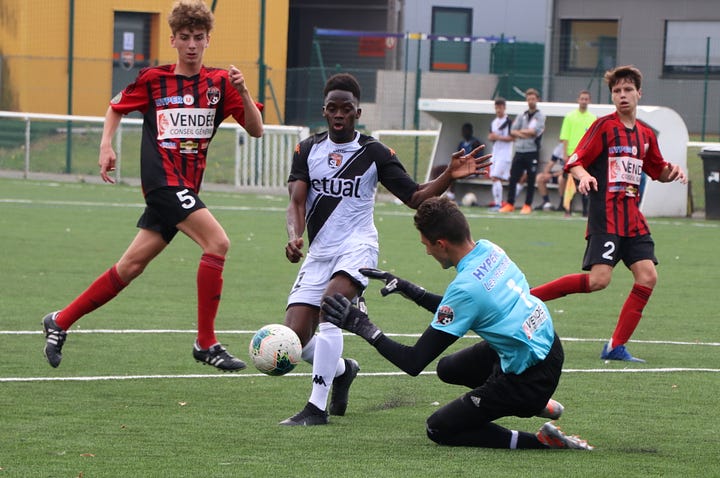
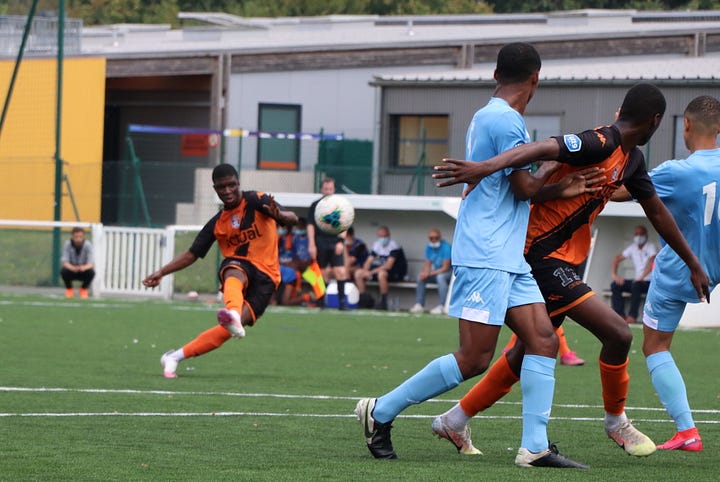
I coached back to back games : a 11am kick off for the U18s first win (2-1), twenty minutes to stuff myself at the canteen to then lead the U19s for a 2pm kick off.
Extended at +11 additonal time only for the opponent scoring off a corner (for us) turned goalkick (as I told my players to not take the last kick to put an end to the whole masquerade).
200 minutes for 2-1 and 1-1 couldn’t tone down my smirk, knowing how well that side below did 9v11 ; already fielded in the “final form” platforming the best players at the club eligible for that team.
Dembo is a top flight professional for Lorient and Guinea International
Owen is a top flight professional for Leece and Ivory Coast International
Both are in the top 10 biggest sales and moved for more money than Serhou Guirassy
Noa is a Ligue 2 professional, and top scorer on loan in National 2 this year. Will probably be sold next summer after becoming a DR Congo international, and already scored a brace in the second pre-season game in 2025-26
Ullrich is French Guiana international
Arstide is DR Congo U20 International and debuted for the Ligue 2 side in 2025
Cameron was a faster version of Djessy, also towering well clear of 6ft.
Djessy was a passer and a leader, Cameron was a header who’d go very fast.
Rafael was basically the left footed version of Dembo (Nuno Mendes in a mirror)
Ibrahim, signed by the same scout who found Serhou Guirassy at the same level (U18 grassroots) are the three that should be part of the equation
That program was discontinued in the summer 2021 ; the separate entity “community scheme” too happy to claim they could have a go at coaching the team.
French clubs are split between a Charity (enlisted at the Football Federation with the players registration) lending a (quarter of million) yearly license fee to the Company (paying wages).
Two chairperson : charity soaked in public subsidy, company can’t be on the stock market. “We can’t let football fall apart around here” would say local politicians.
U19s finished 5 points above relegation in 2025 despite an areopagus of full time staff.
So did the Reserve team, whose budget was slashed to feed the first team, now offering fresh water and a candy bar in lower divisions where expense sheets and enveloppes masquerade as “full time” pseudo-professionalism everywhere else, that is until the taxman turns up.
In the meantime, the current club adminstration pitched the idea to get families pay to get into the academy (like a private university). Knocked back by the federation and every deciding stakeholder.
Still set up an academy back again in 2023 (like Brentford or Birmingham City) as they wouldn’t mind the half million from the Federation anyway ; nevertheless not producing any player worthy of drawing anyone’s interest since.
Besides the ones I signed / coached between 2019-2021.
Many of these names ring a bell.
#4 and #6 cost respectively : a 238€ a year bus TUL card.
When nothing resonates with, whether the story of empowered individuals - or cold hard money landing in their bank account to balance the books ;
That Owen money will be “essentially used to pay player wages 2025/26”
What a fantastic business model, a few years after a dozen non-essential staff were deemed redundant and told where to go, with the benevolent and caring eye of the French governments “Covid Relief Schemes” rainfall designated to keep people in jobs by having the welfare state paying wages for about two years.
Nobody (beside the electorate of the worst elected president in French history) could predict companies wouldn't mass layoff people, but were merely incidentally restructuring to become more agile.
The Prêts Garantis par l’État (PGE) were primarily used as a precautionary liquidity buffer by French companies during the COVID-19 crisis. Most recipients, especially small and viable businesses in hard-hit sectors like hospitality and retail, did not fully draw down their loan amounts. Instead, they held the funds to stabilize cash flow, boost treasury reserves, and mitigate short-term financial shocks
38 billion left to refund, but payment plans like mirages on the burning highway, five years on
Resonance or Synchronicity
Looks like their work finally serves a purpose and yelds results.
No matter how much naratives can be spun.
The Academy (Centre de Formation) was closed in Summer 2019, and the makeshift program (2019-2021) that delivered Owen Kouassi (Leece) ; but also Bamo Meité (OM), Kevin Nadje (Feyenoord), Dembo Sylla (Lorient), and Noa Mupemba in the span of two years was deemed a waste of money by the board nominated in 2021.
All moved for a combined 11+0.5+1+1 = 14.5 million in subsequent seasons after leaving Laval for a combined 0+0+1+1 = 2 million.
We often say there’s no bargain in an open market.
But sometimes, discrepancies in the market are caused by tone deaf musicians who frame noise as the signal.





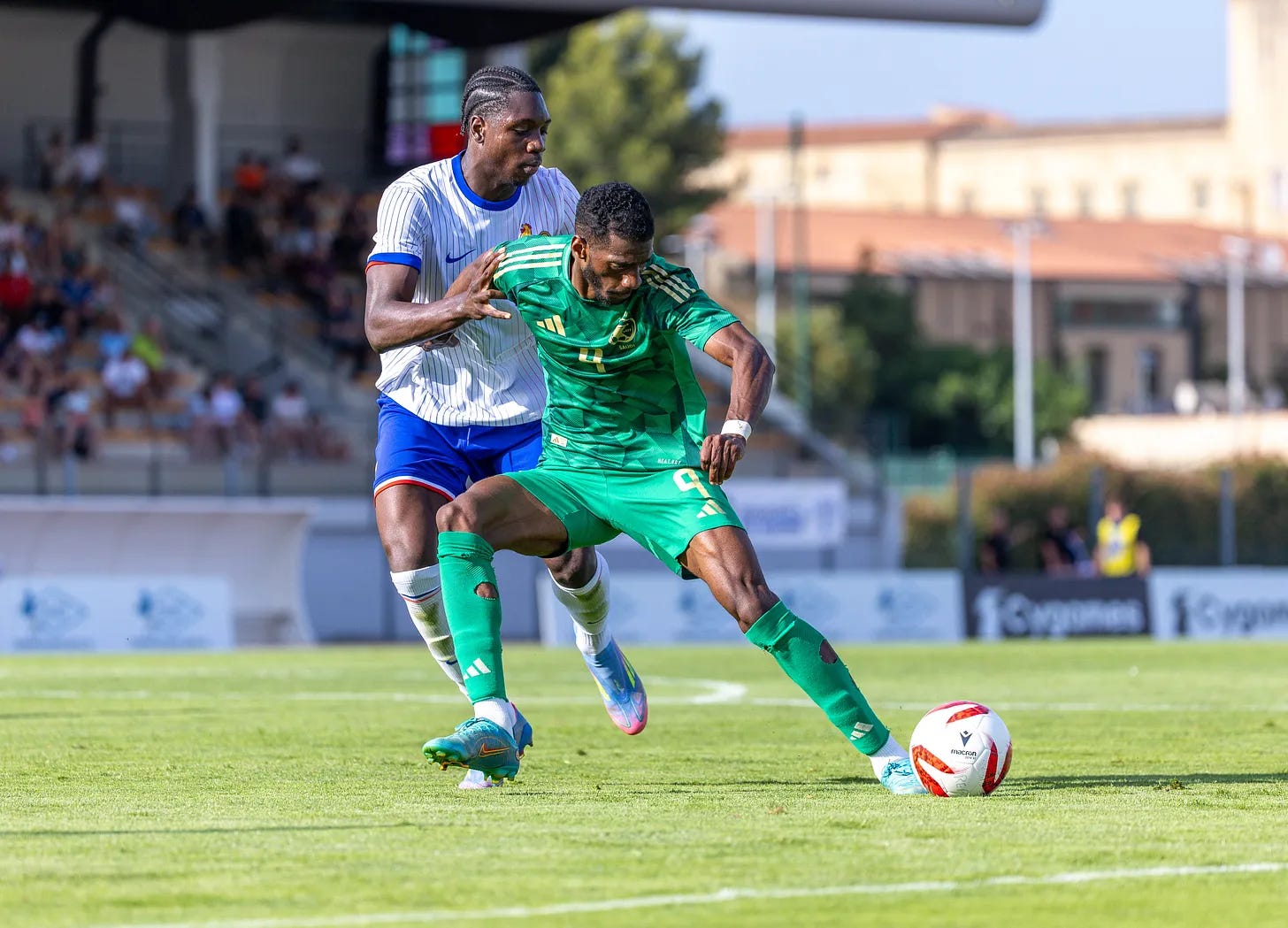

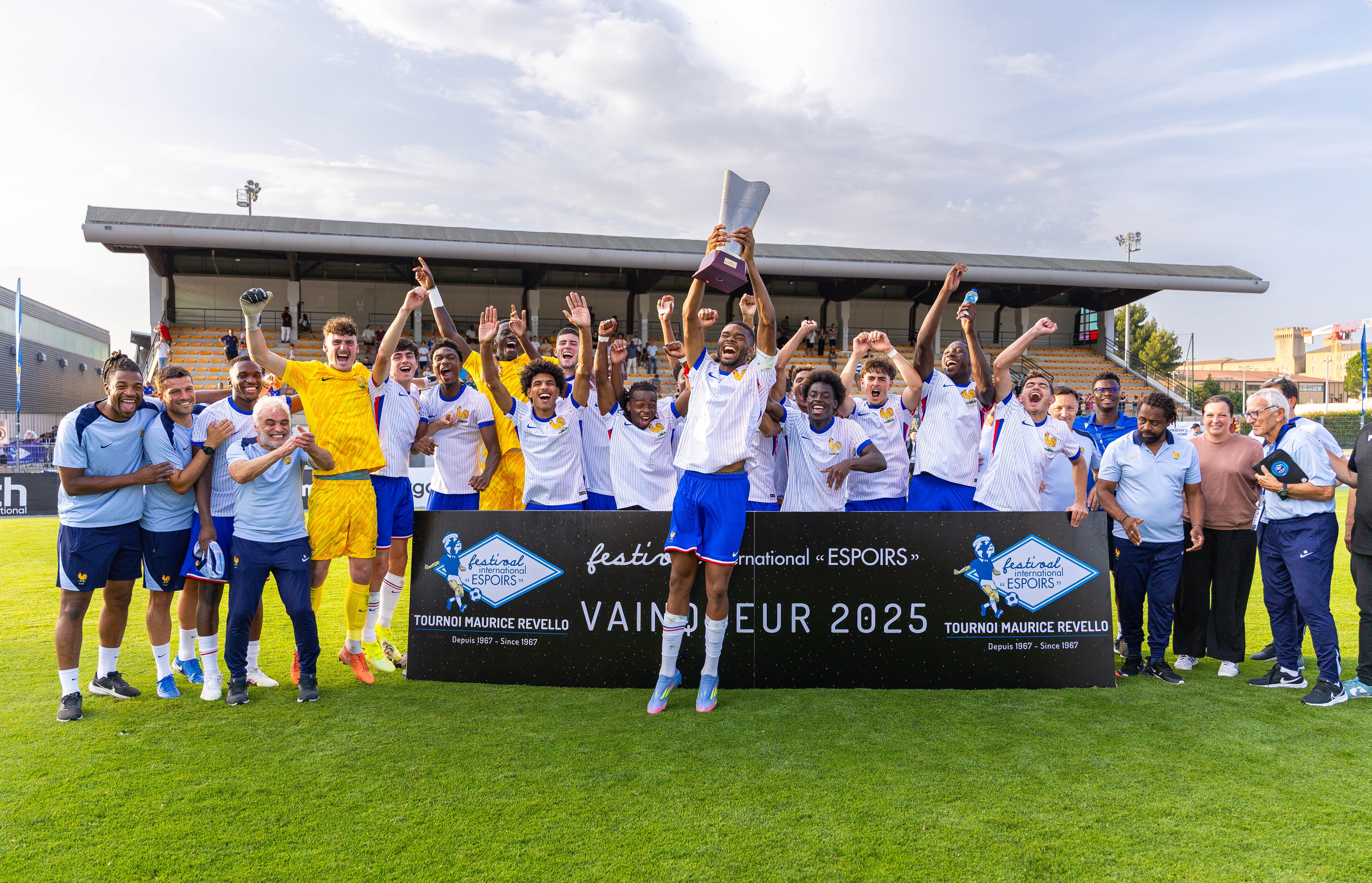

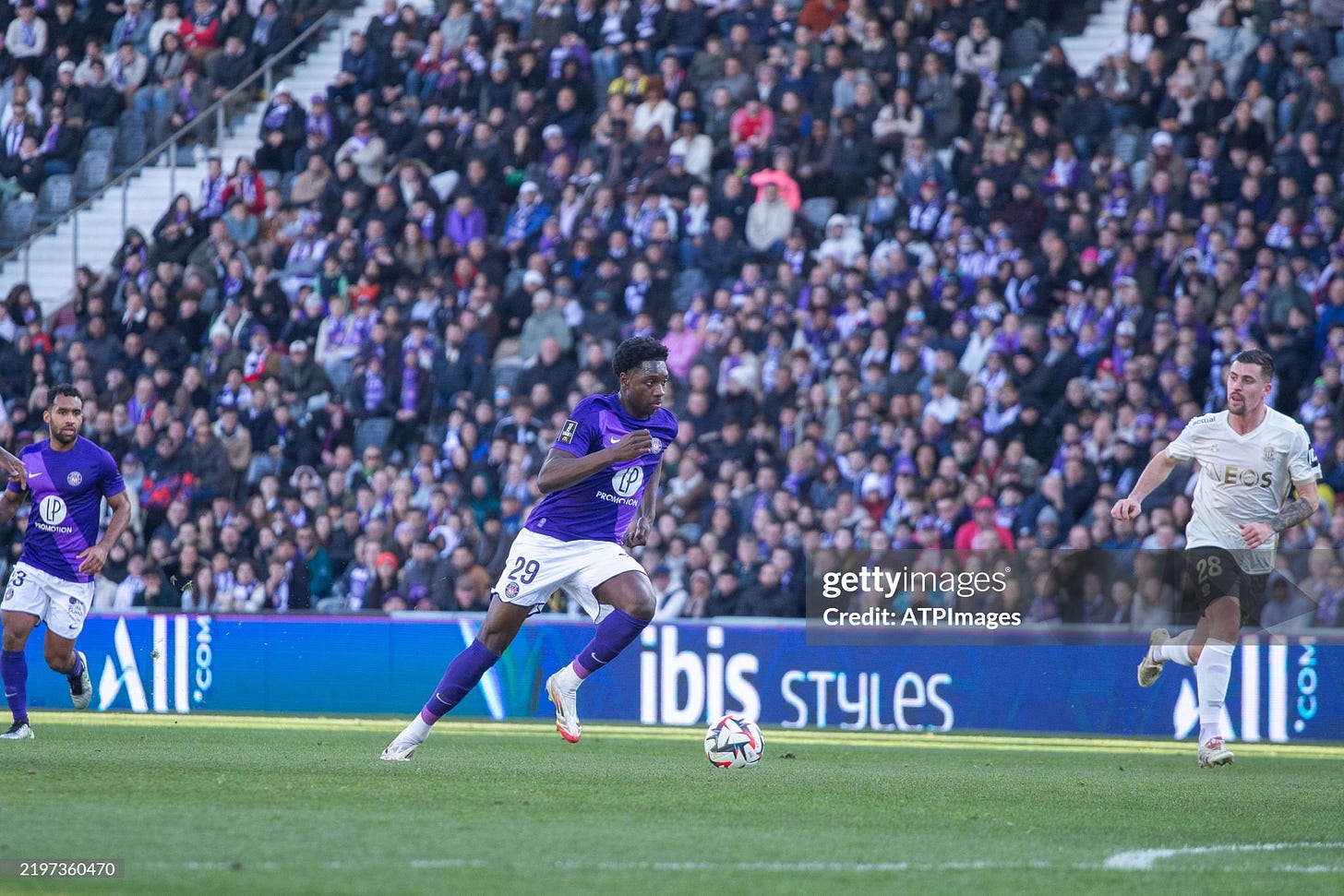


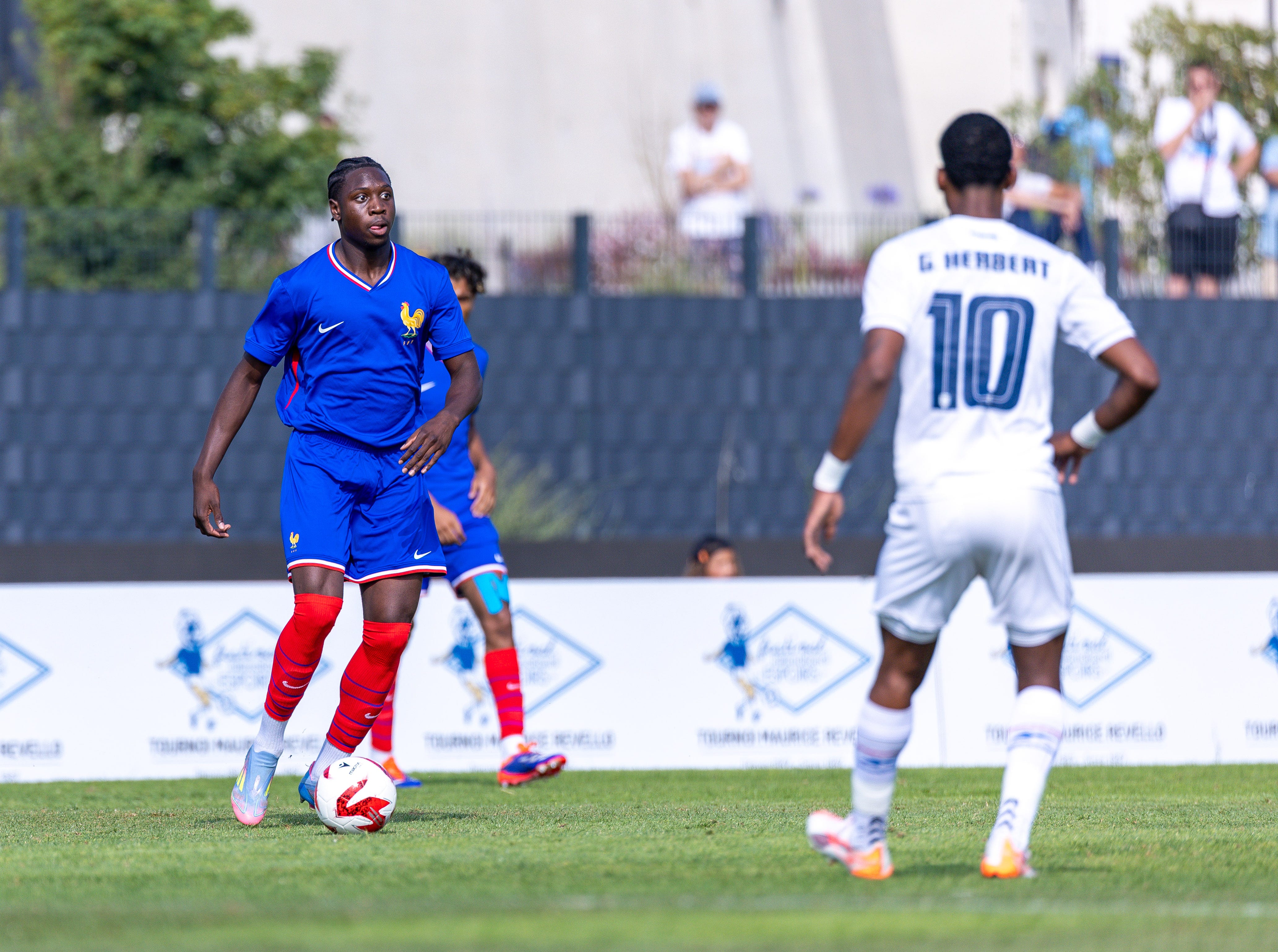

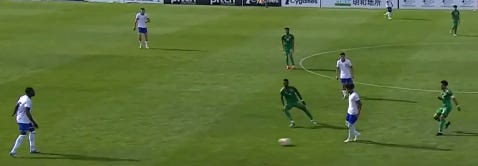
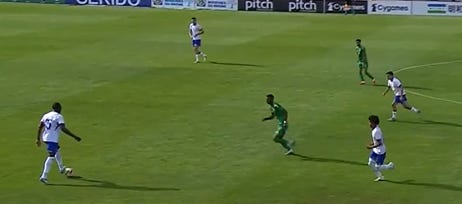

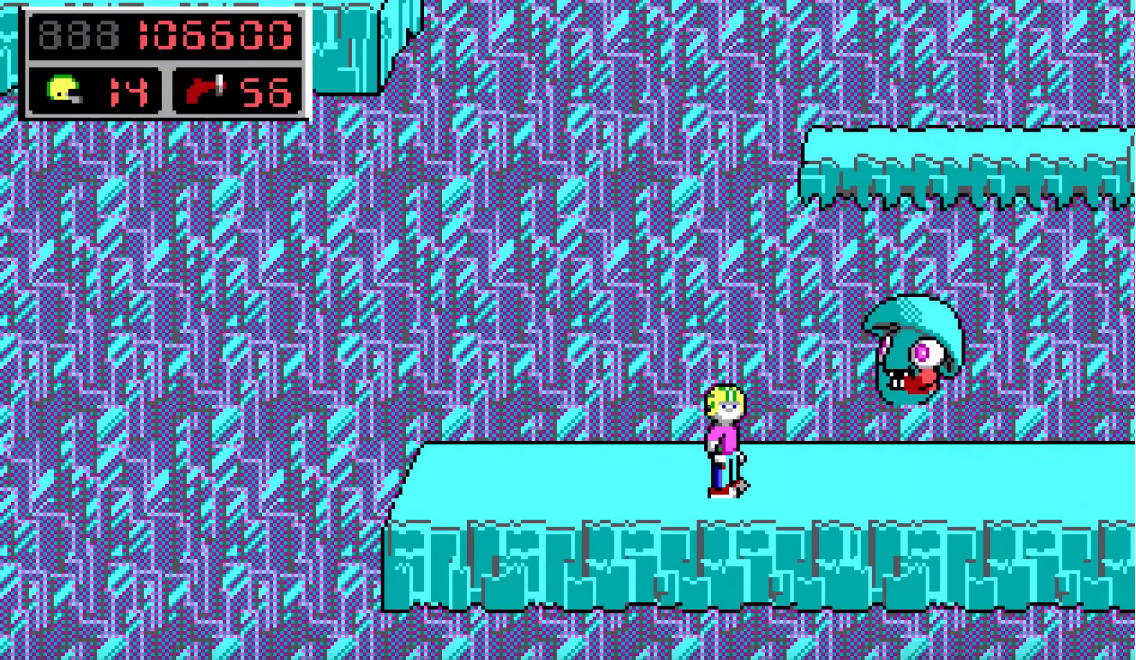

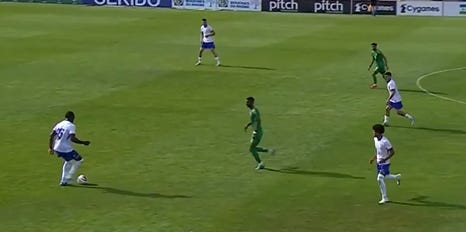


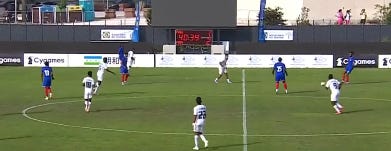

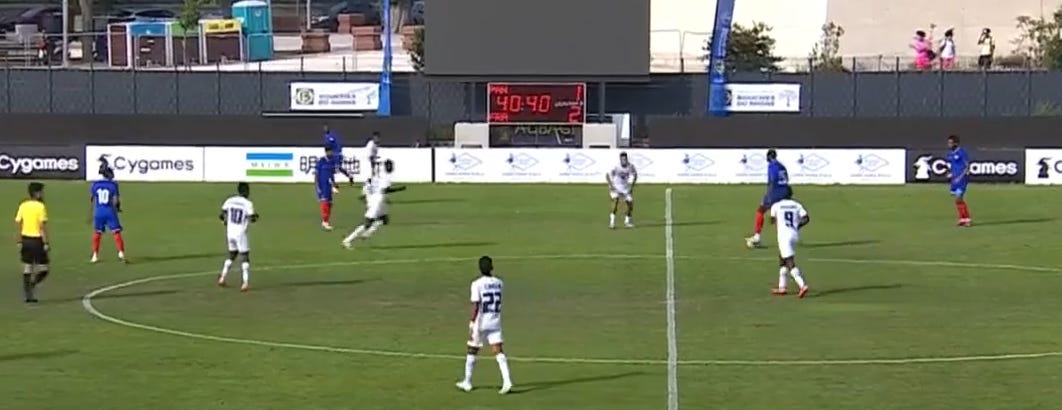



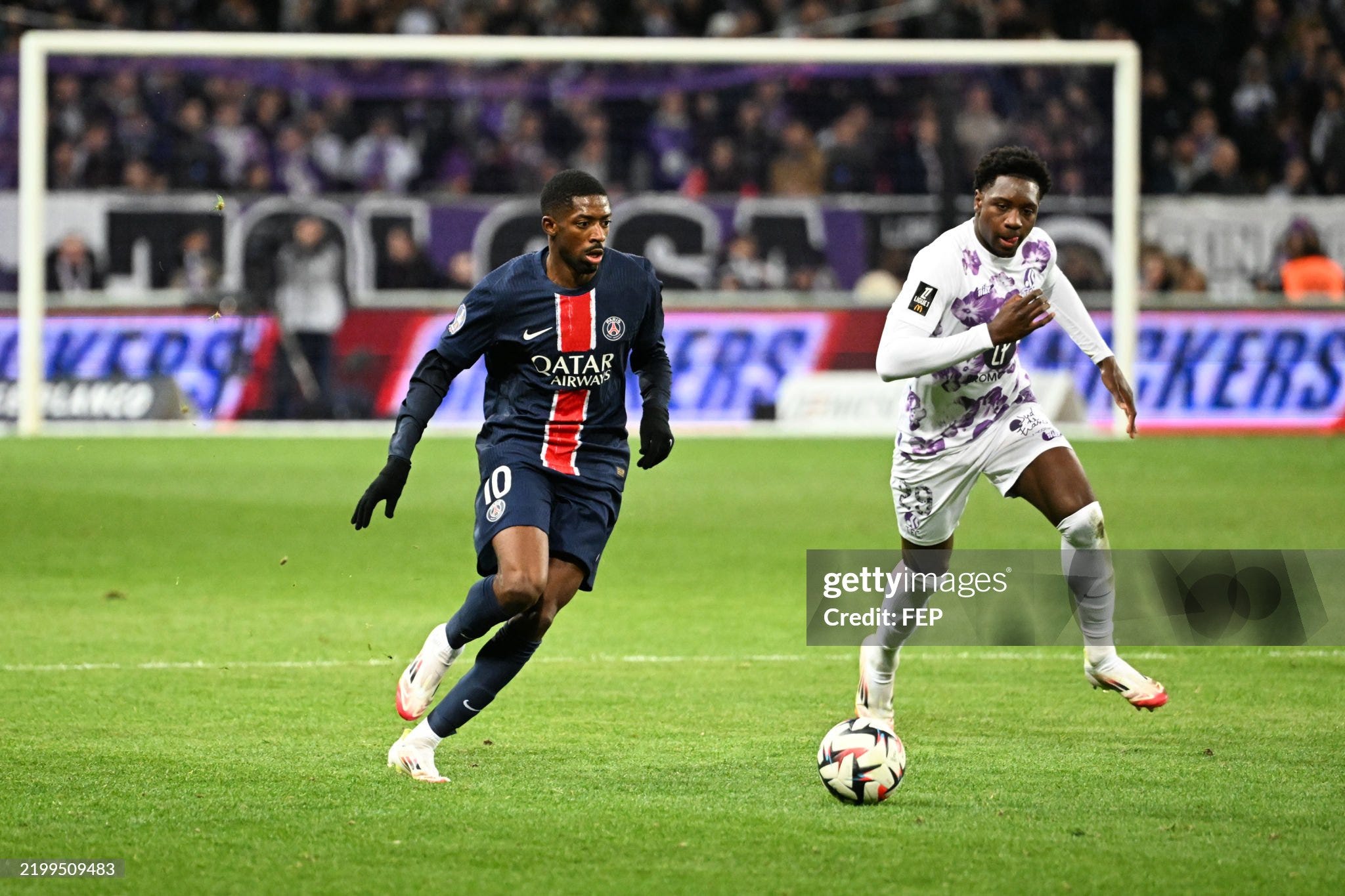




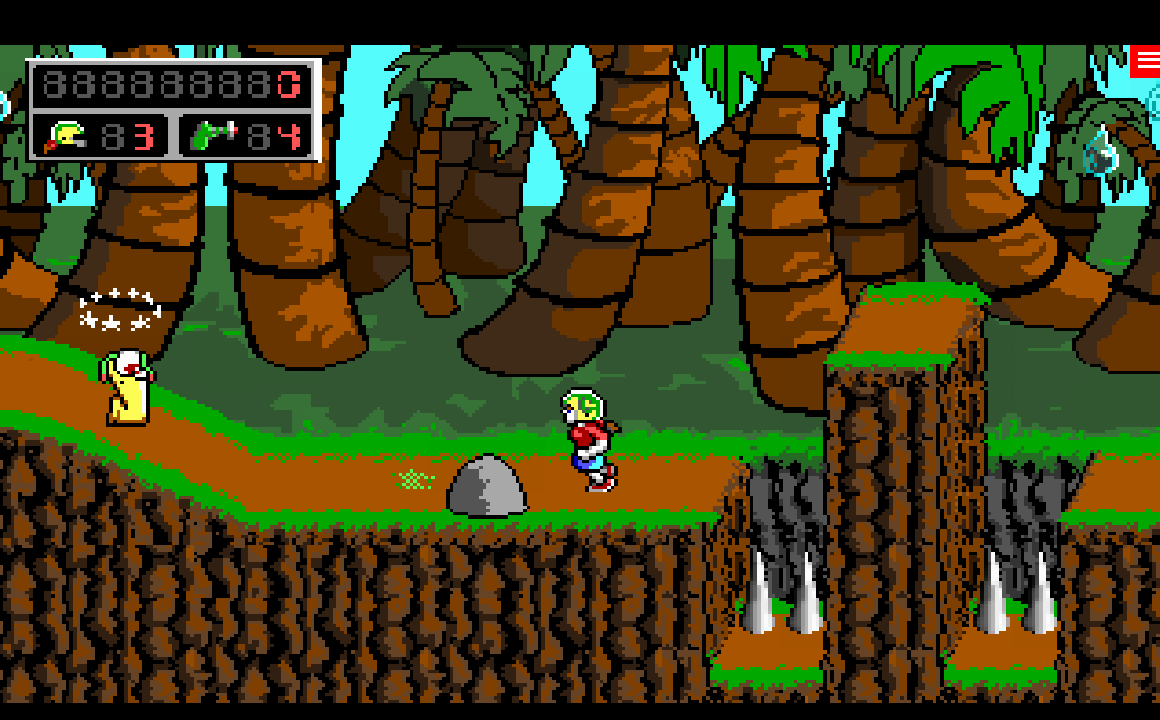
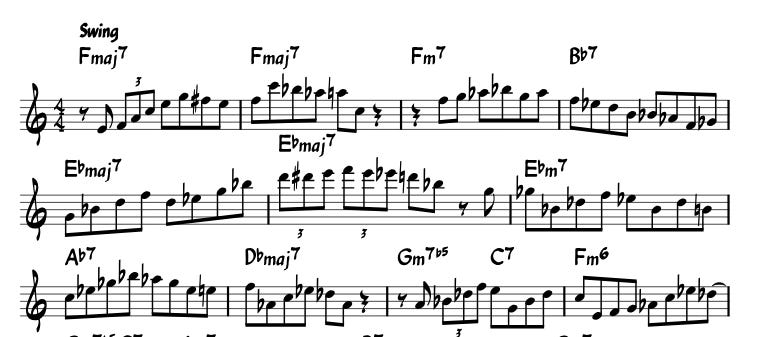
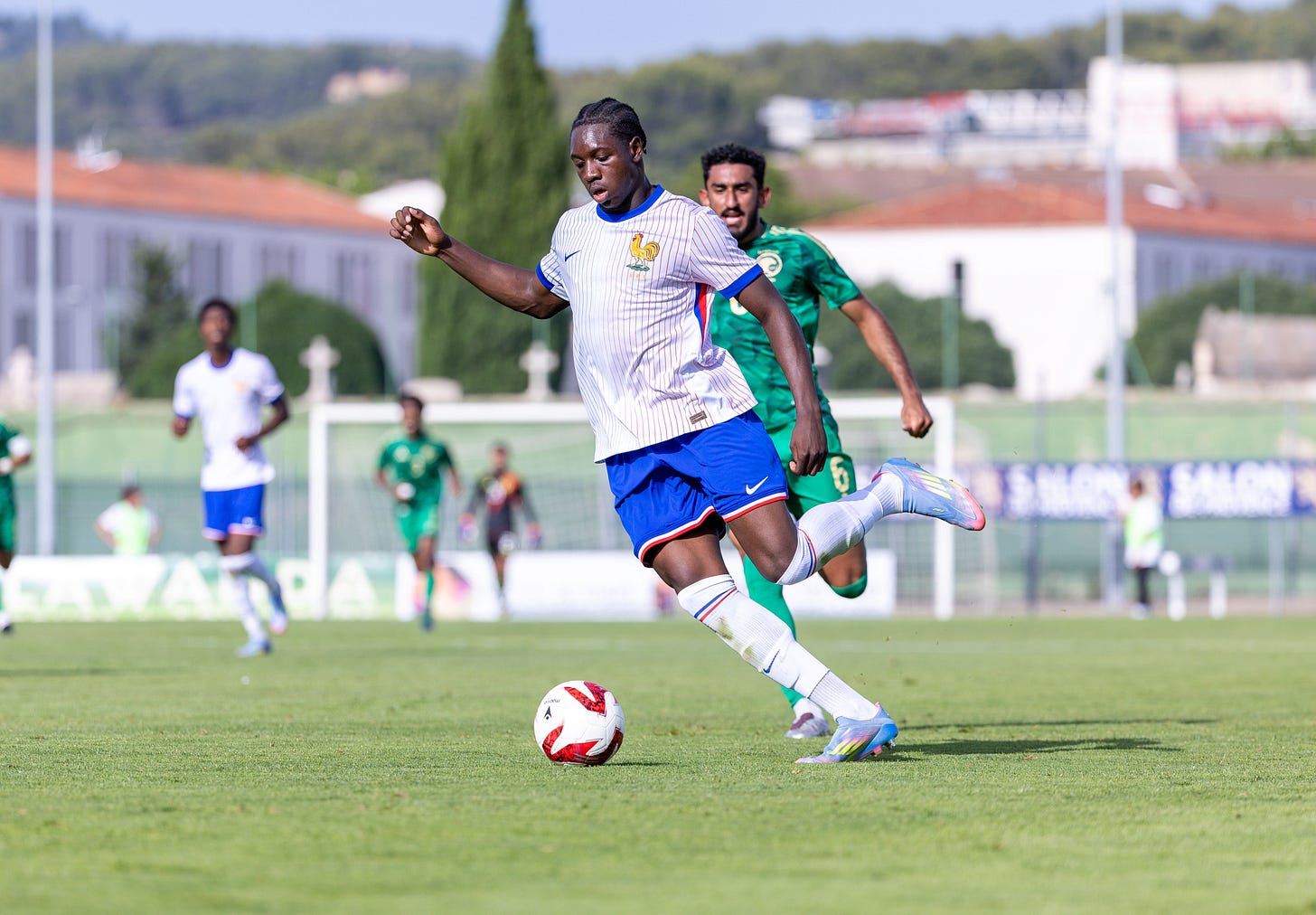


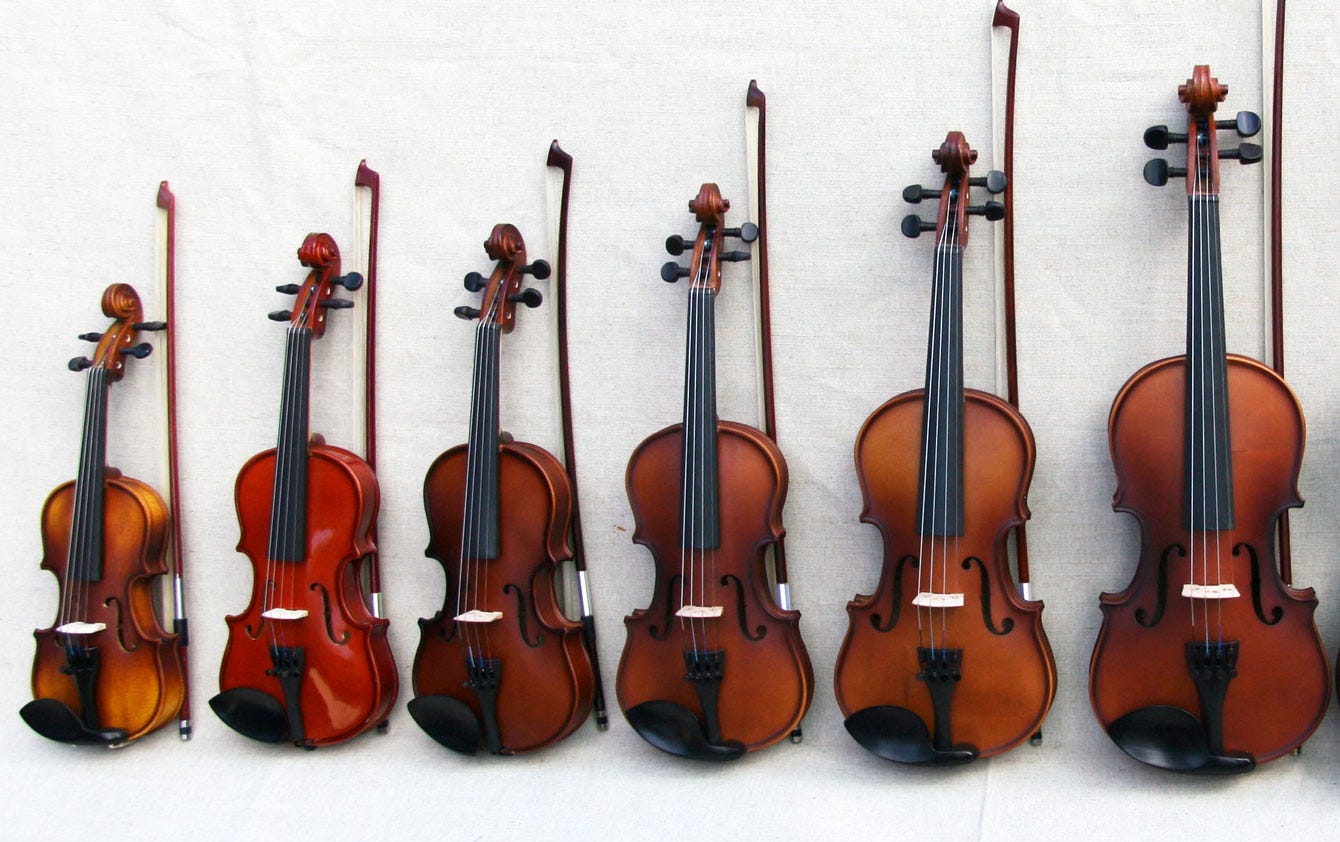

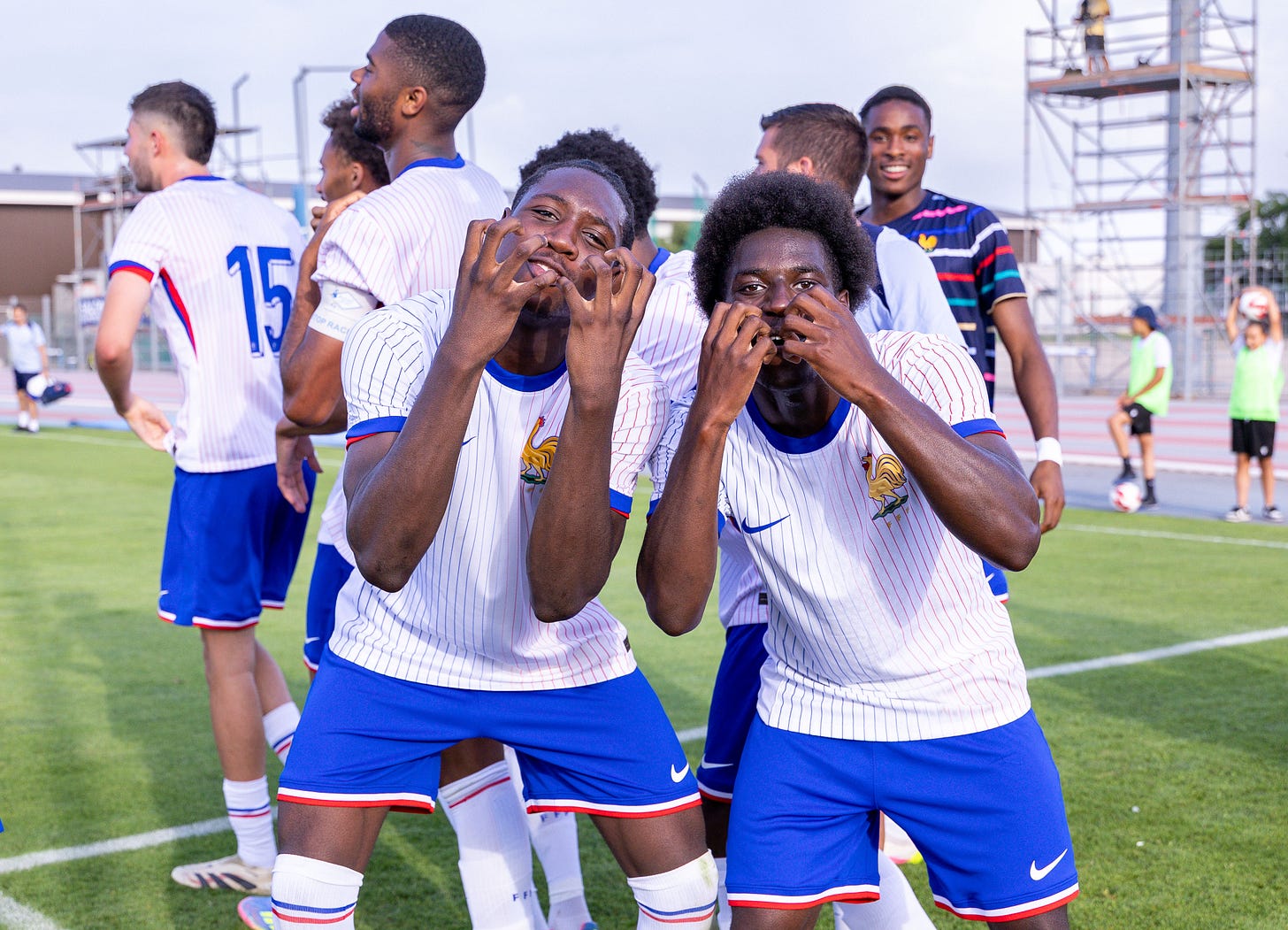


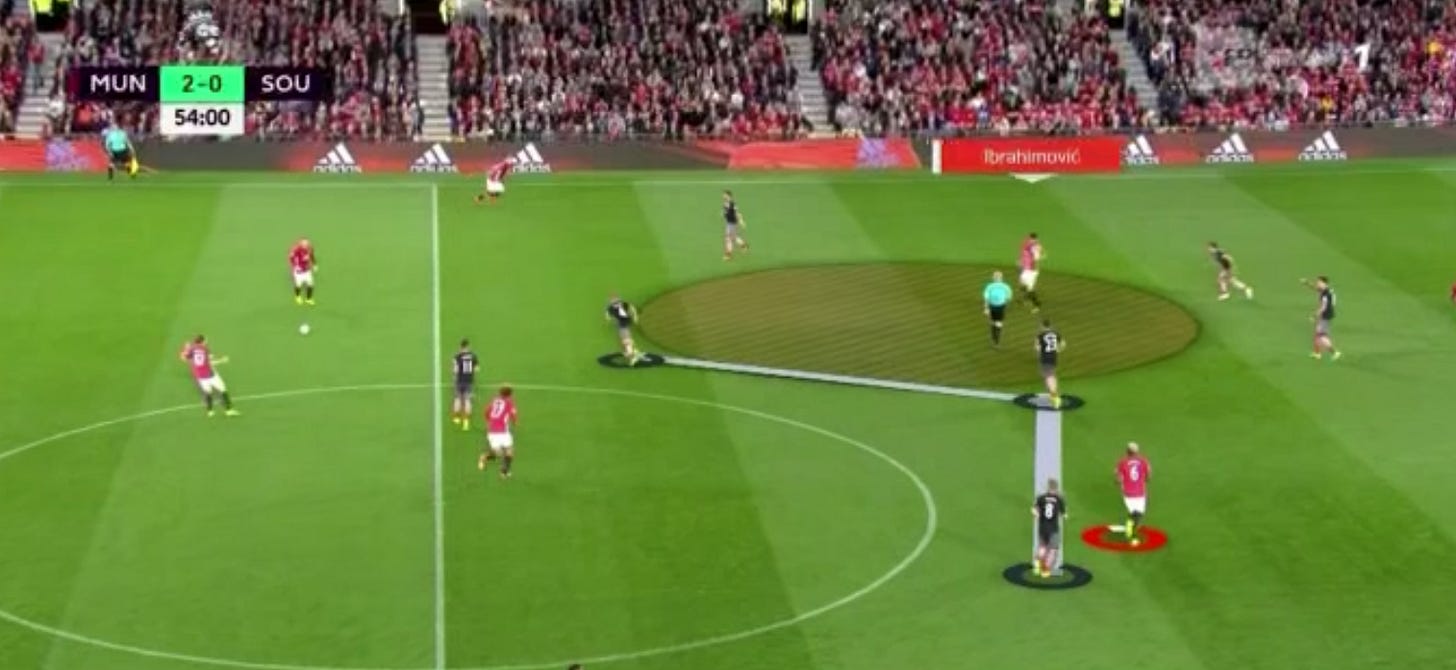
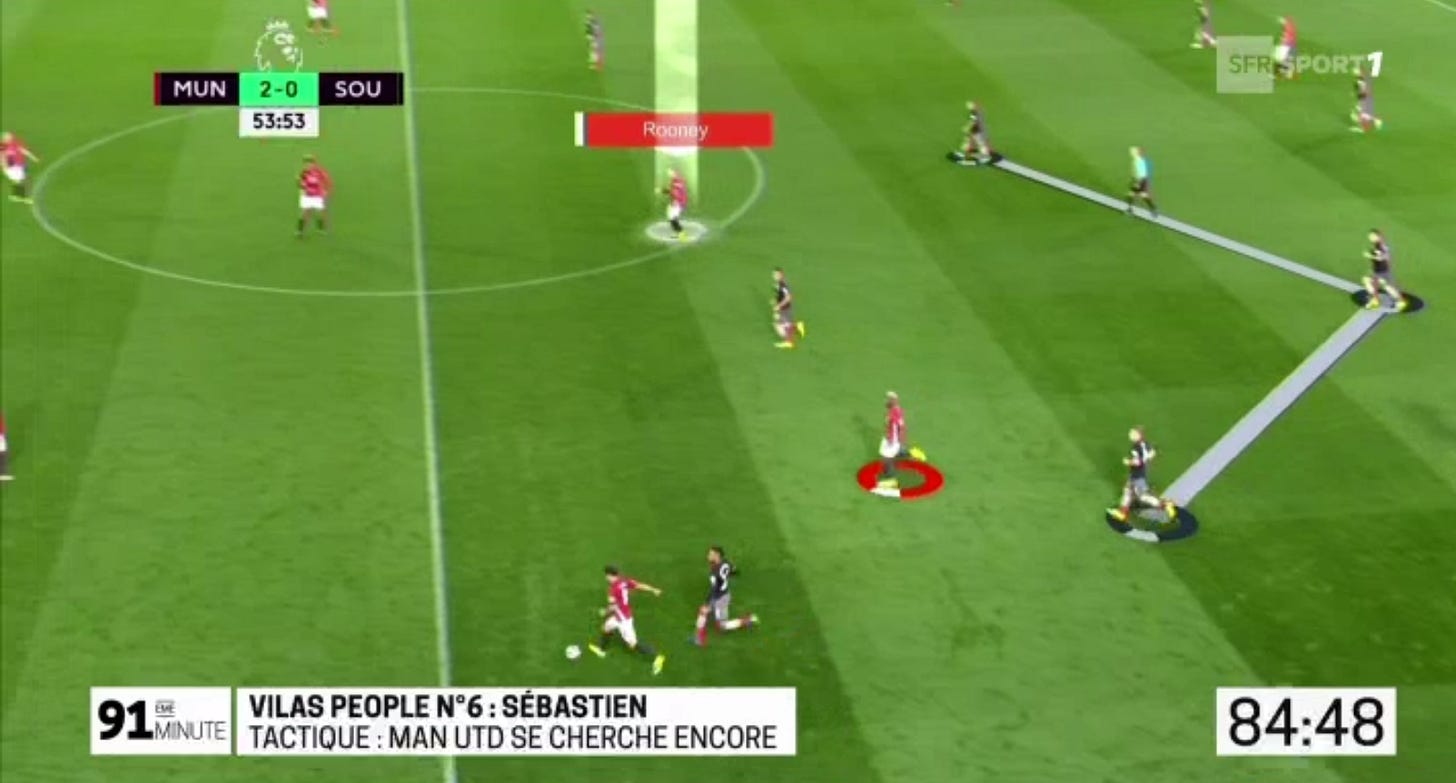
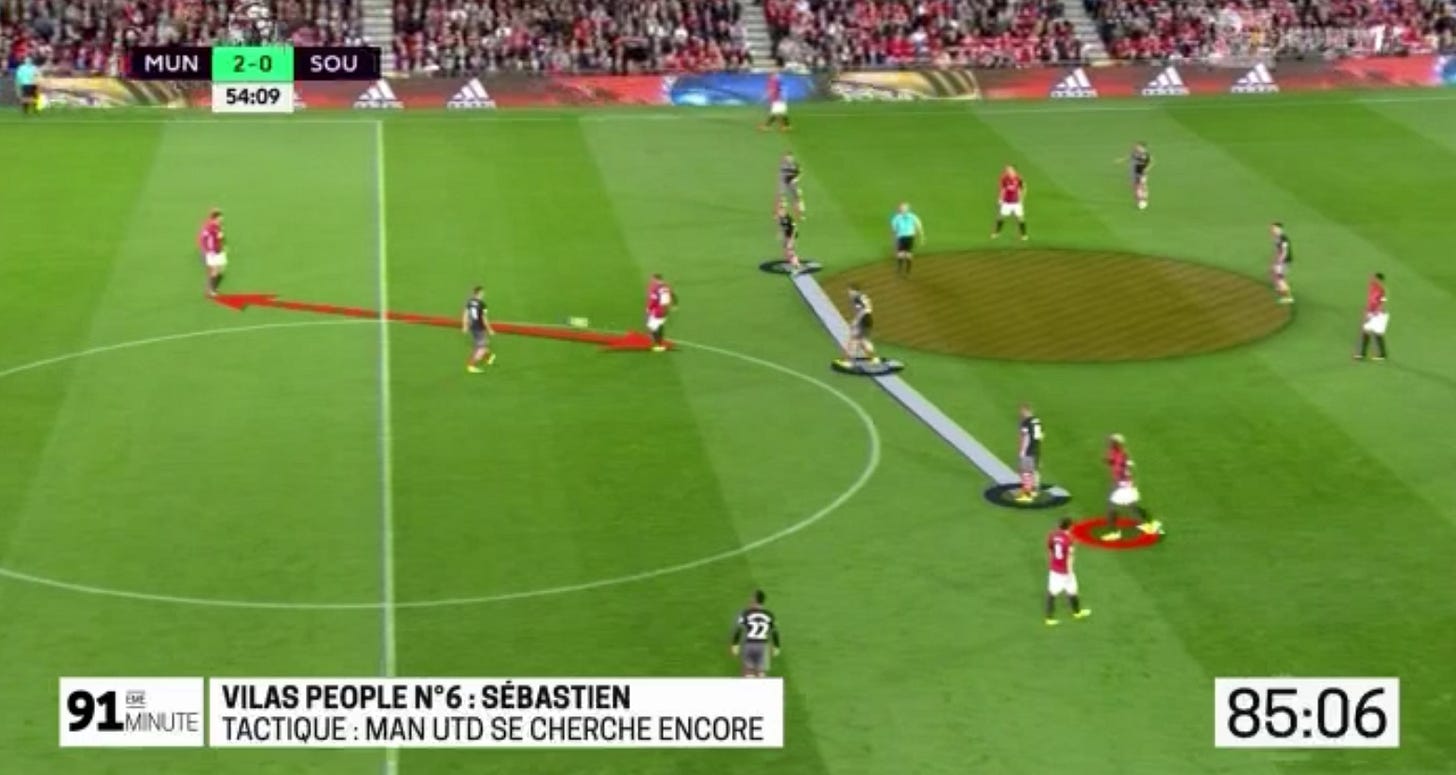









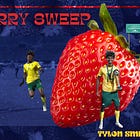

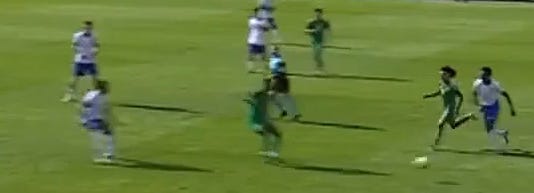



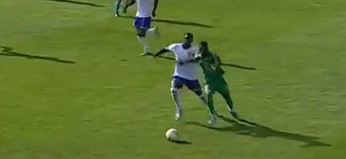

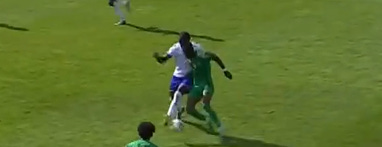

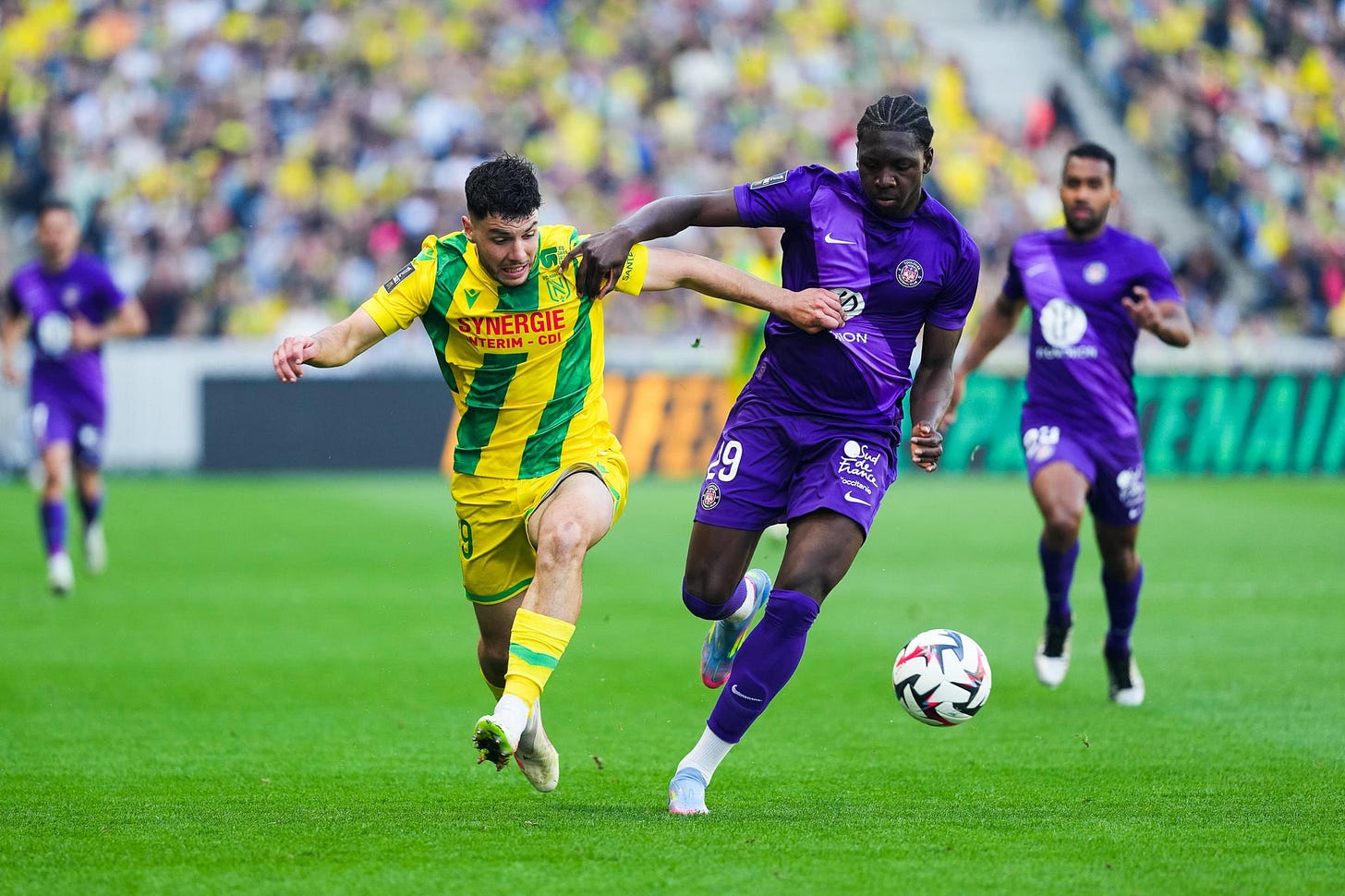

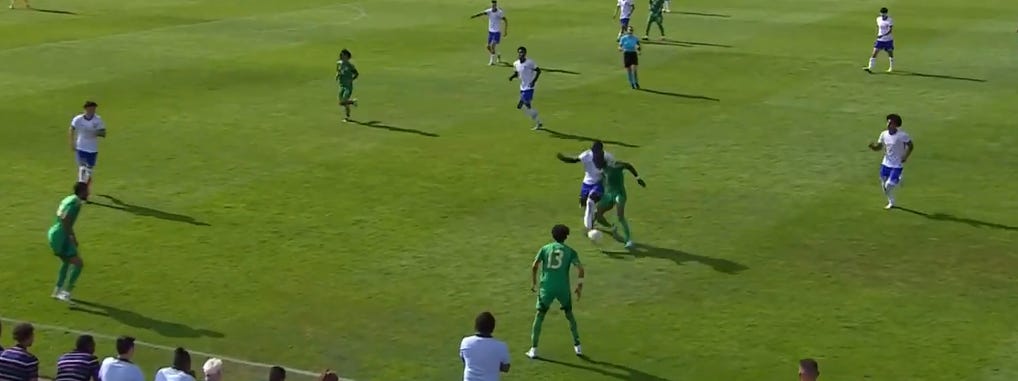
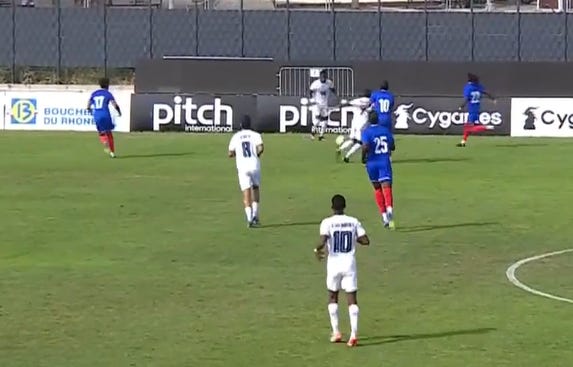

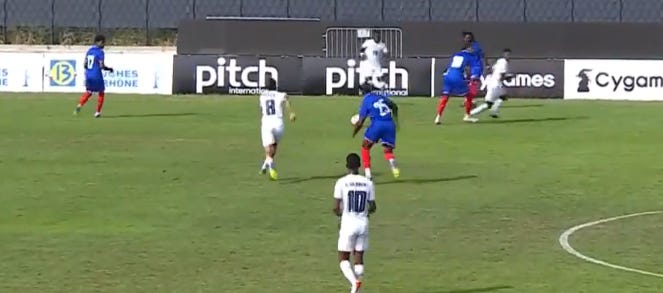
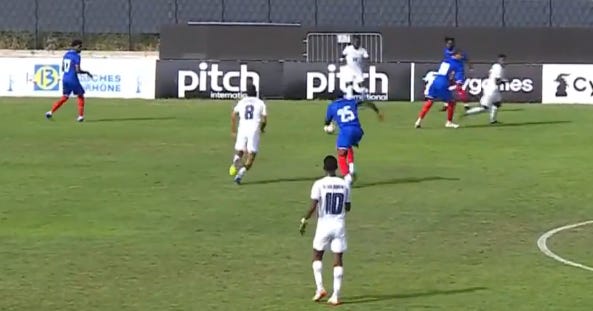
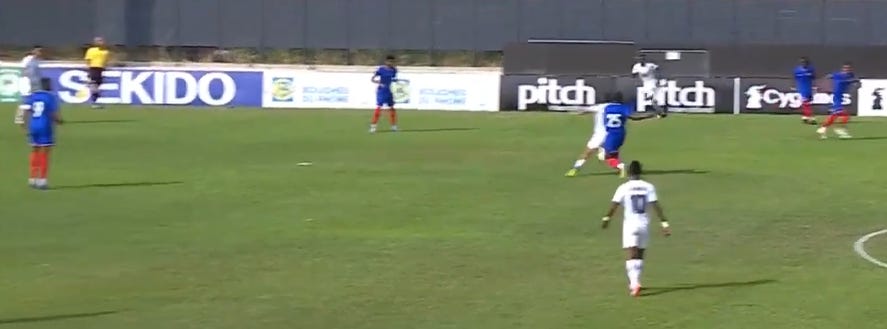




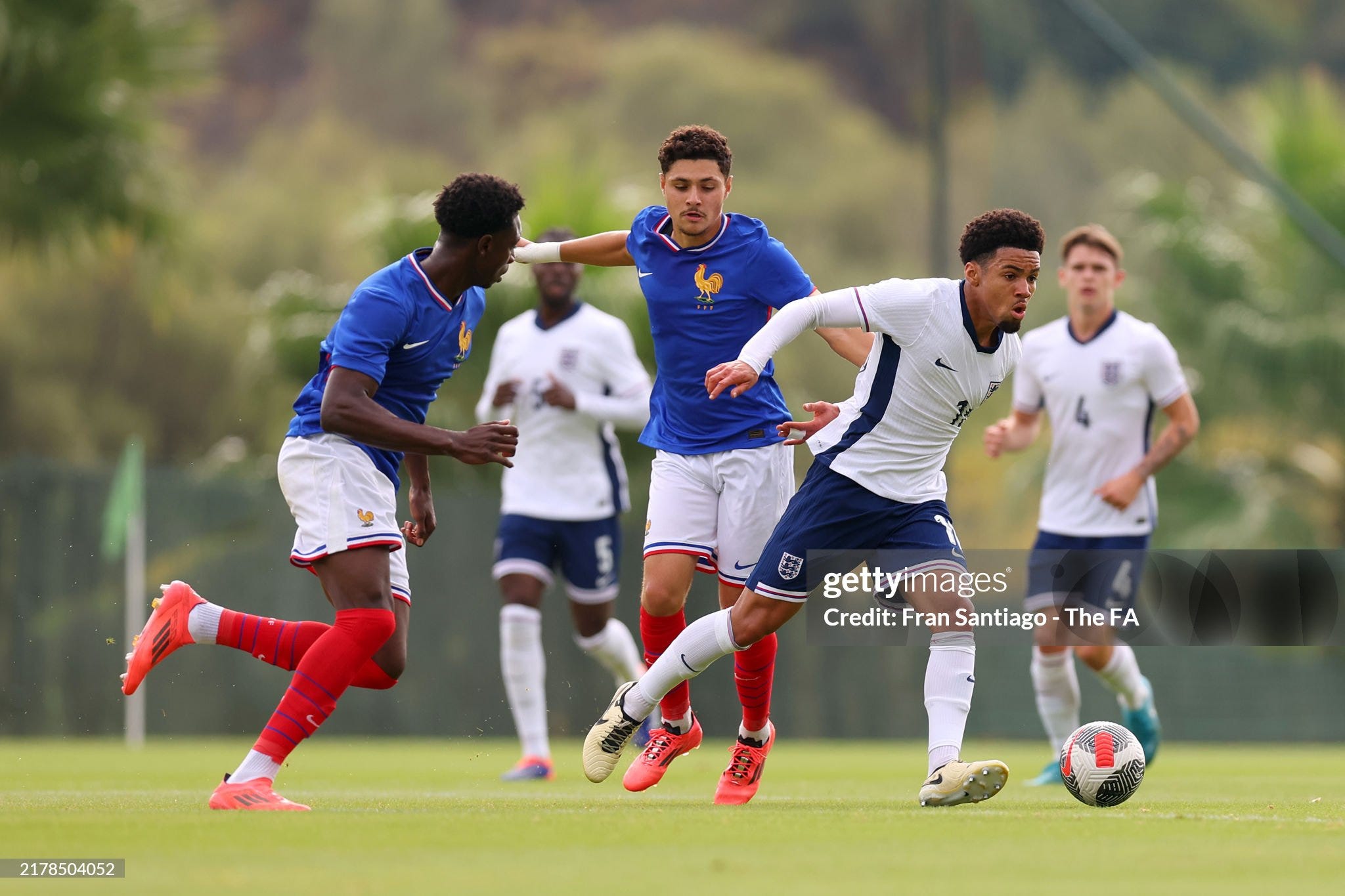








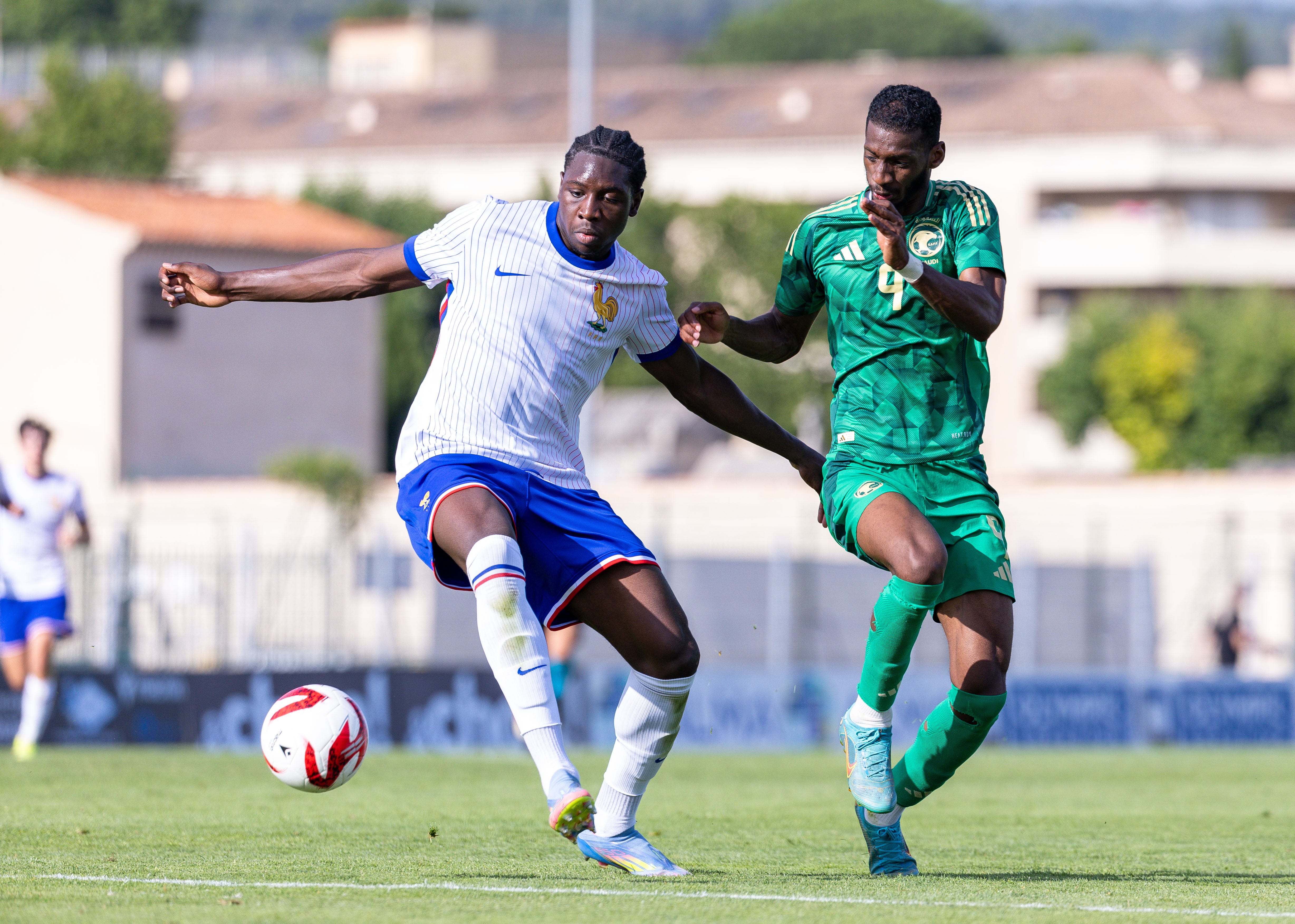



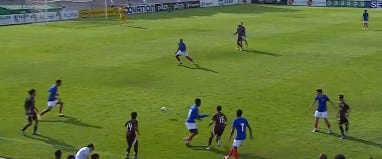

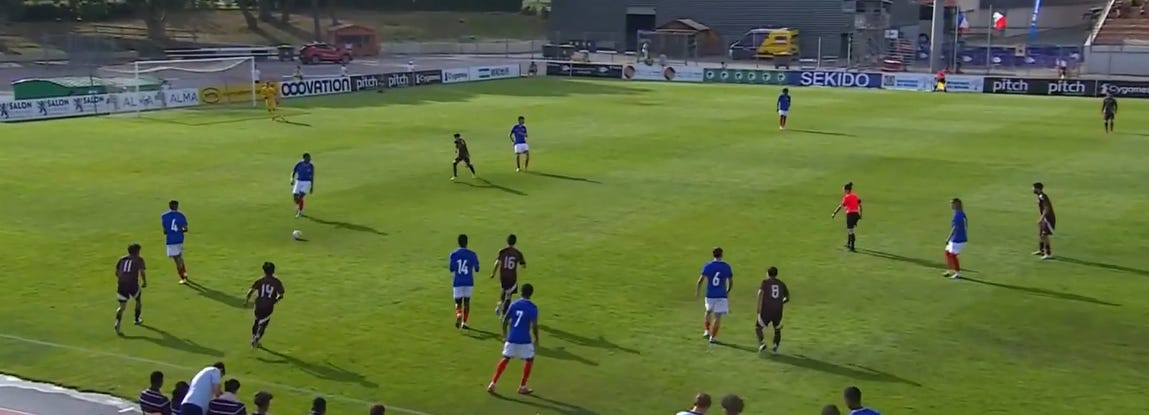




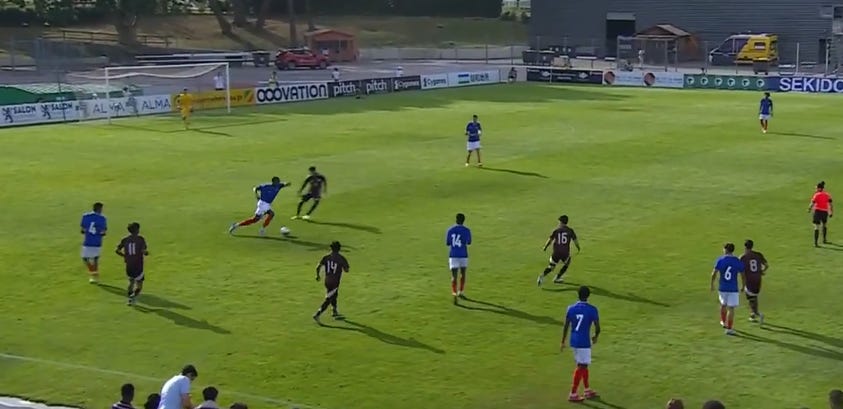


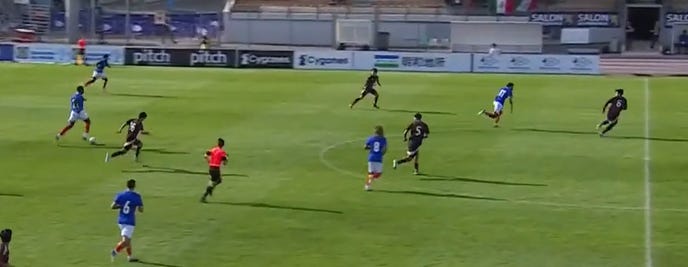


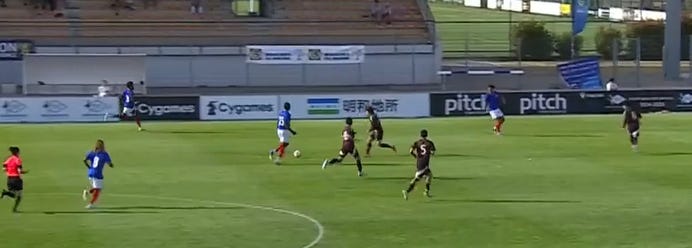

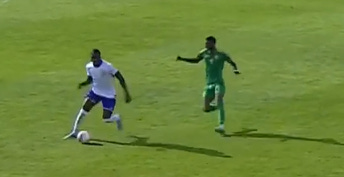


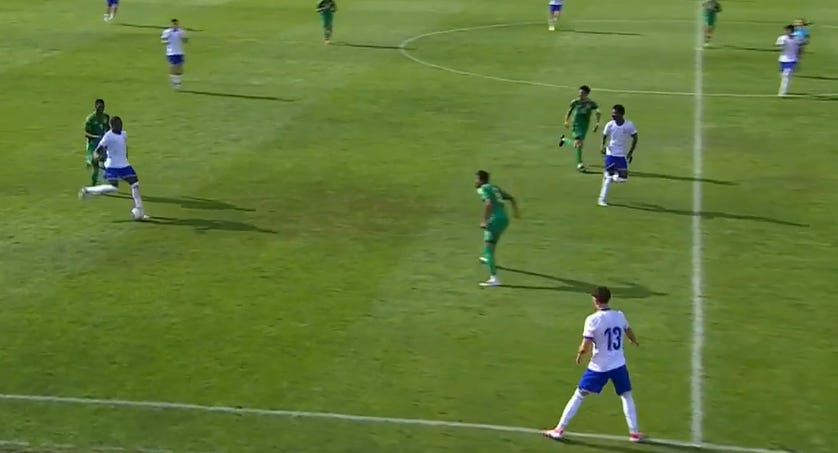

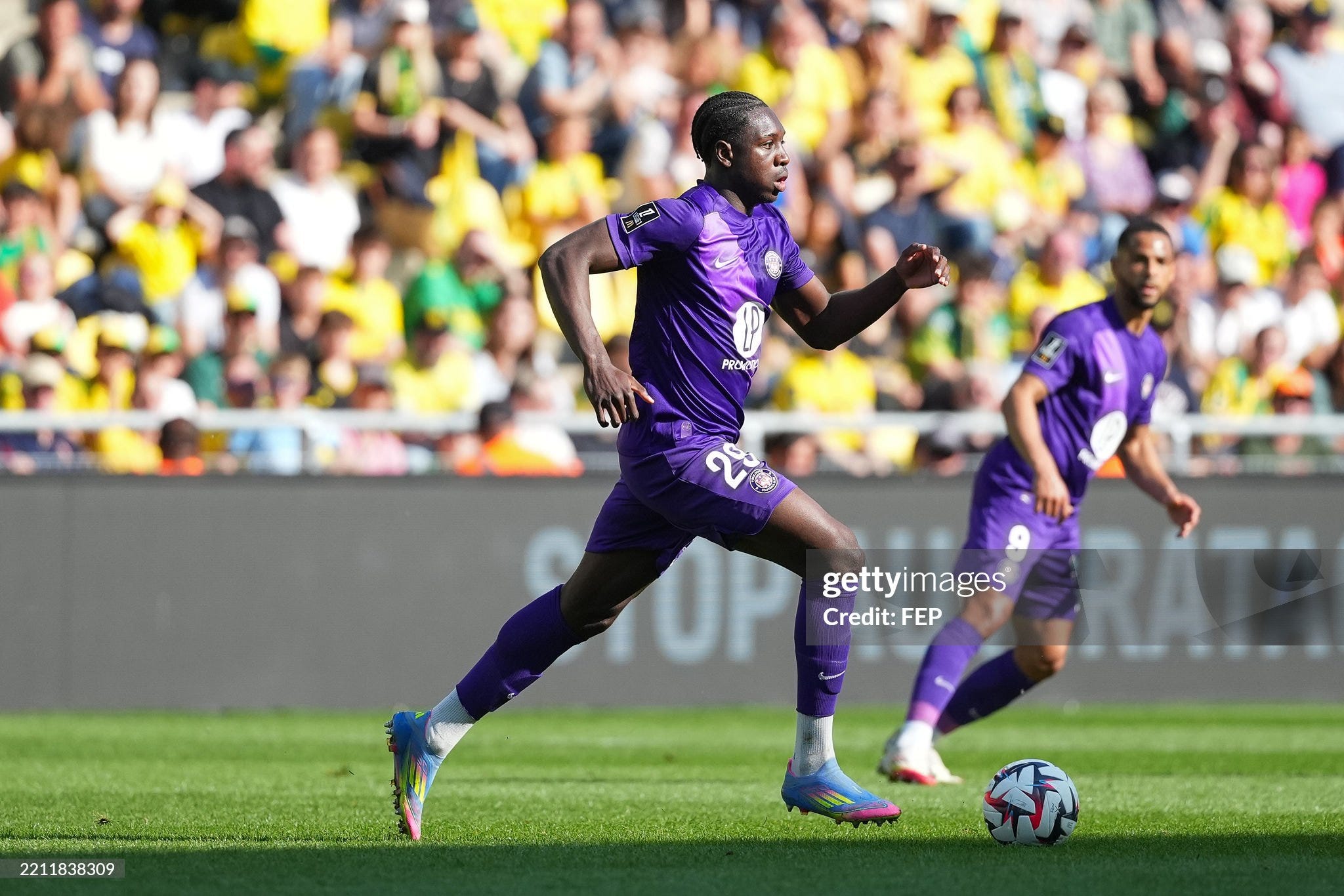



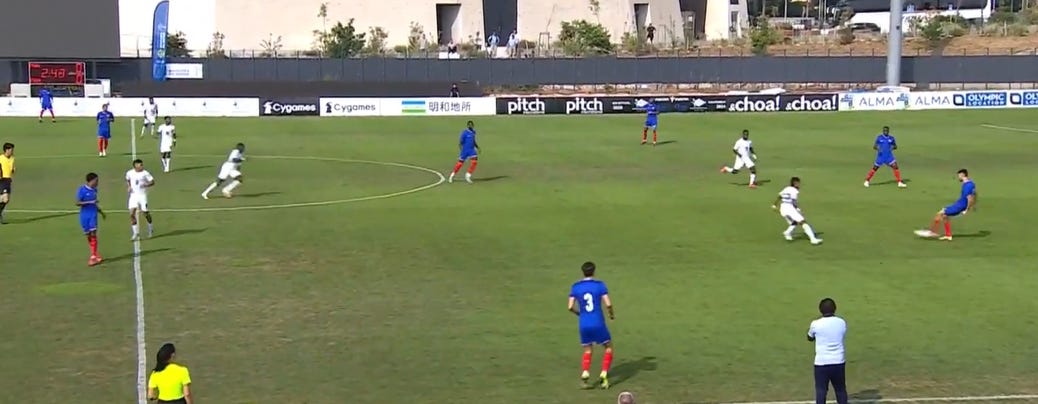



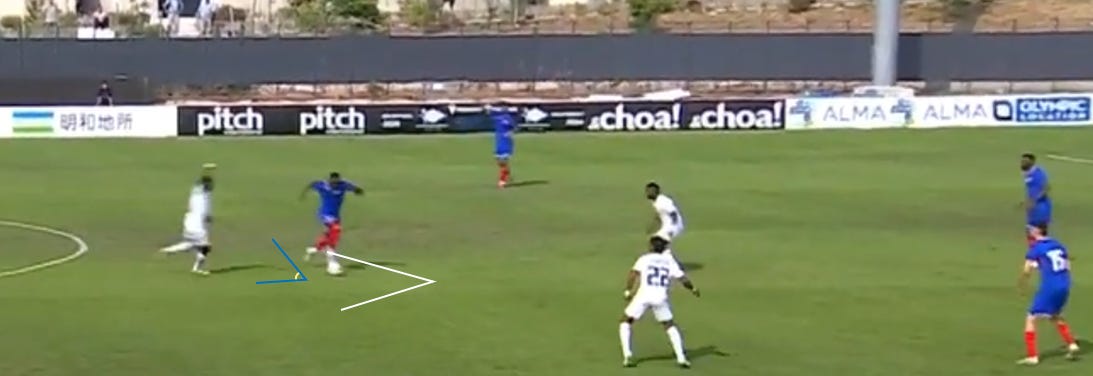



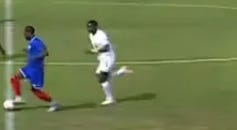
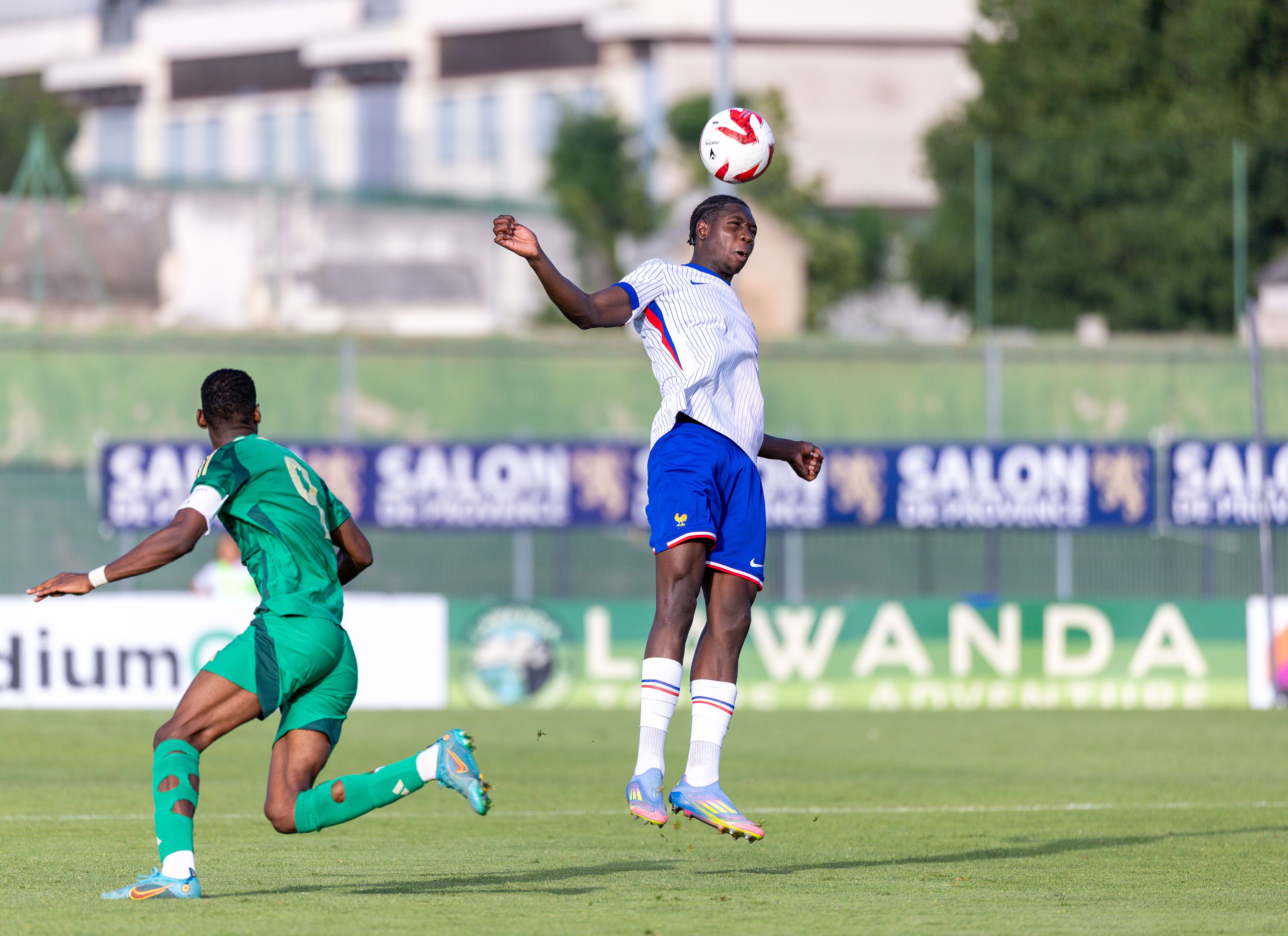

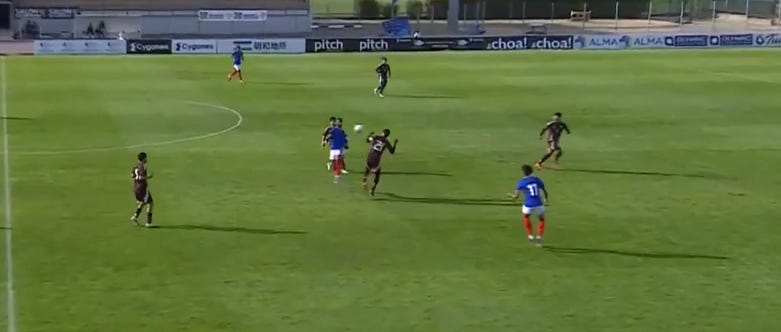

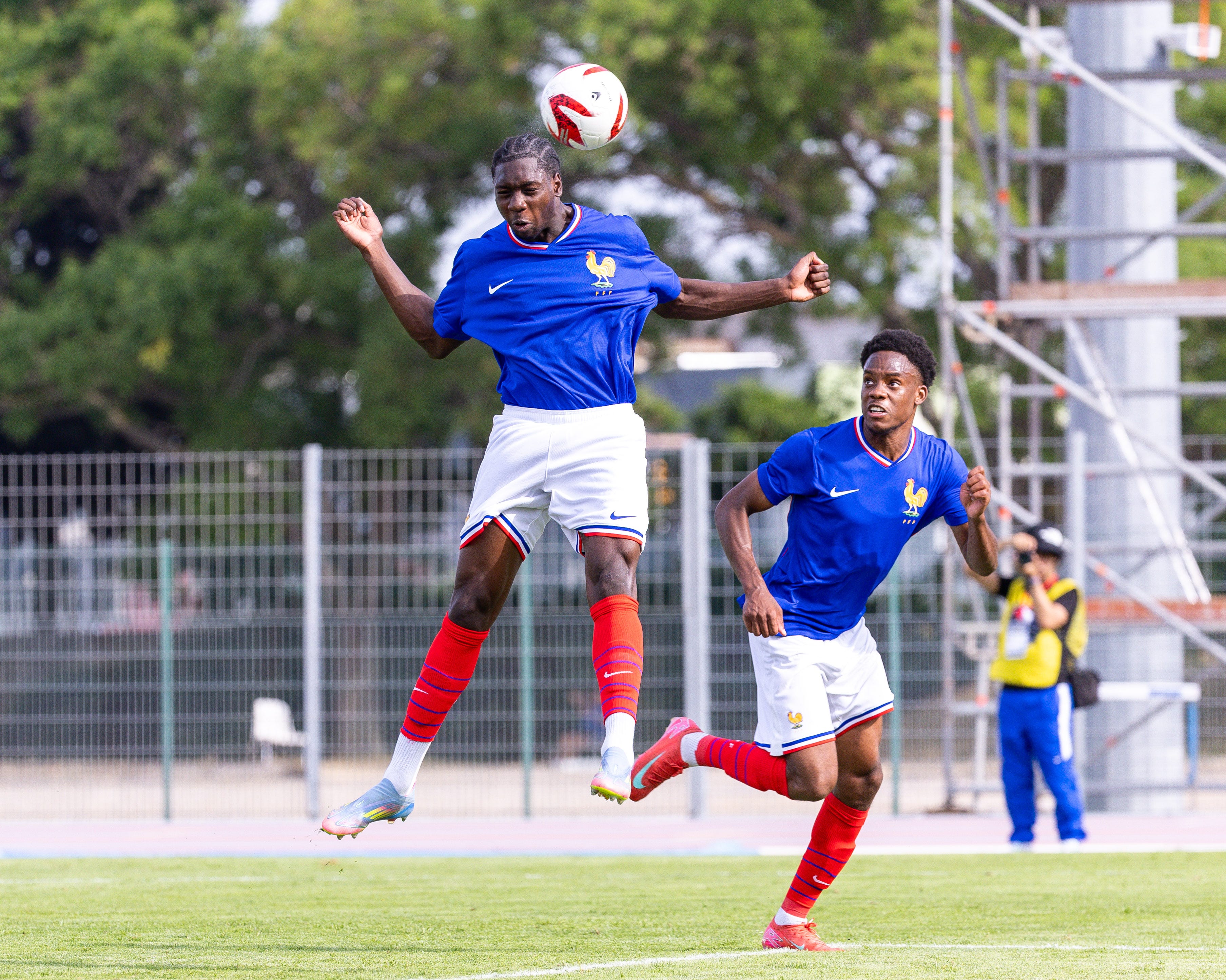


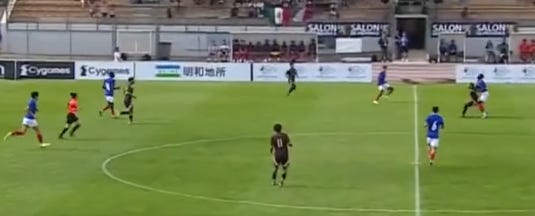



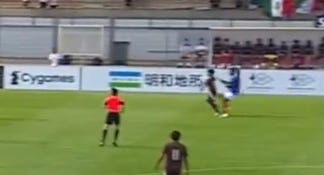




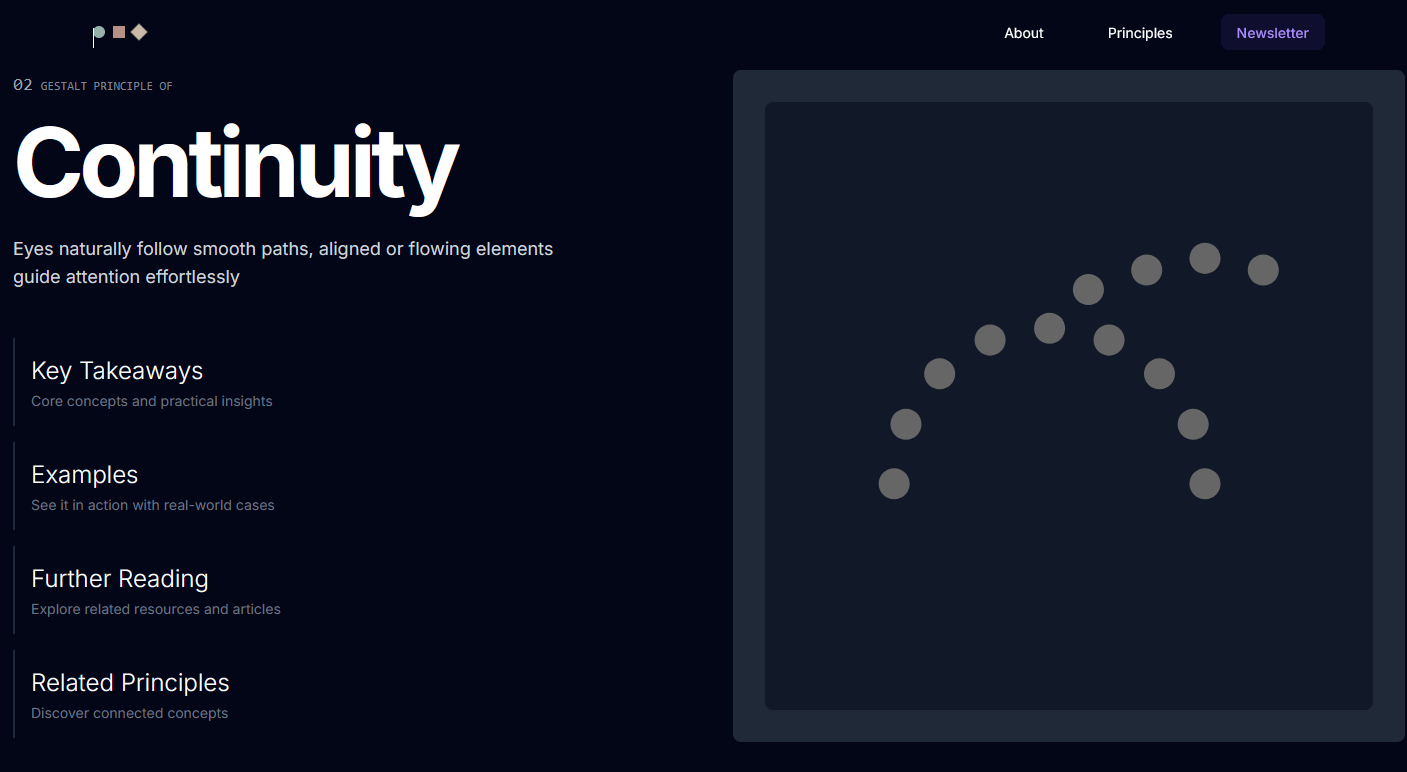






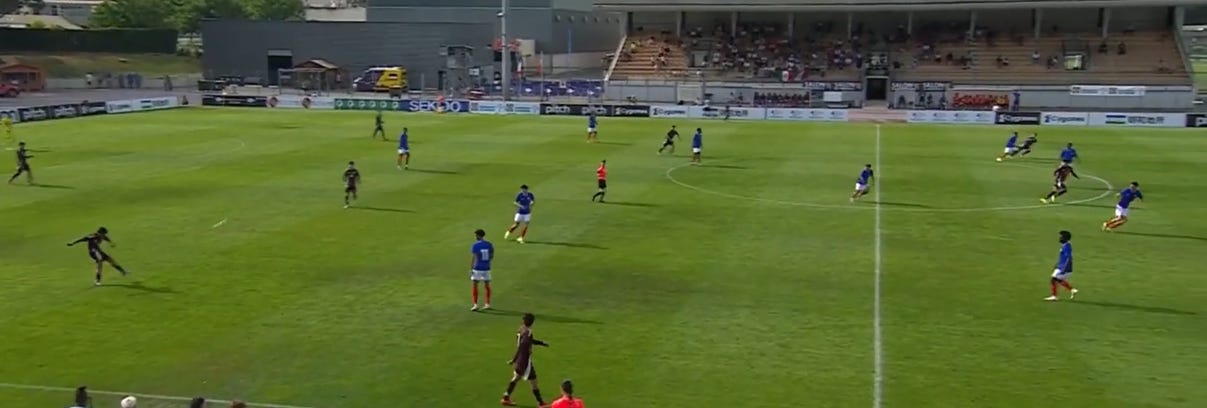

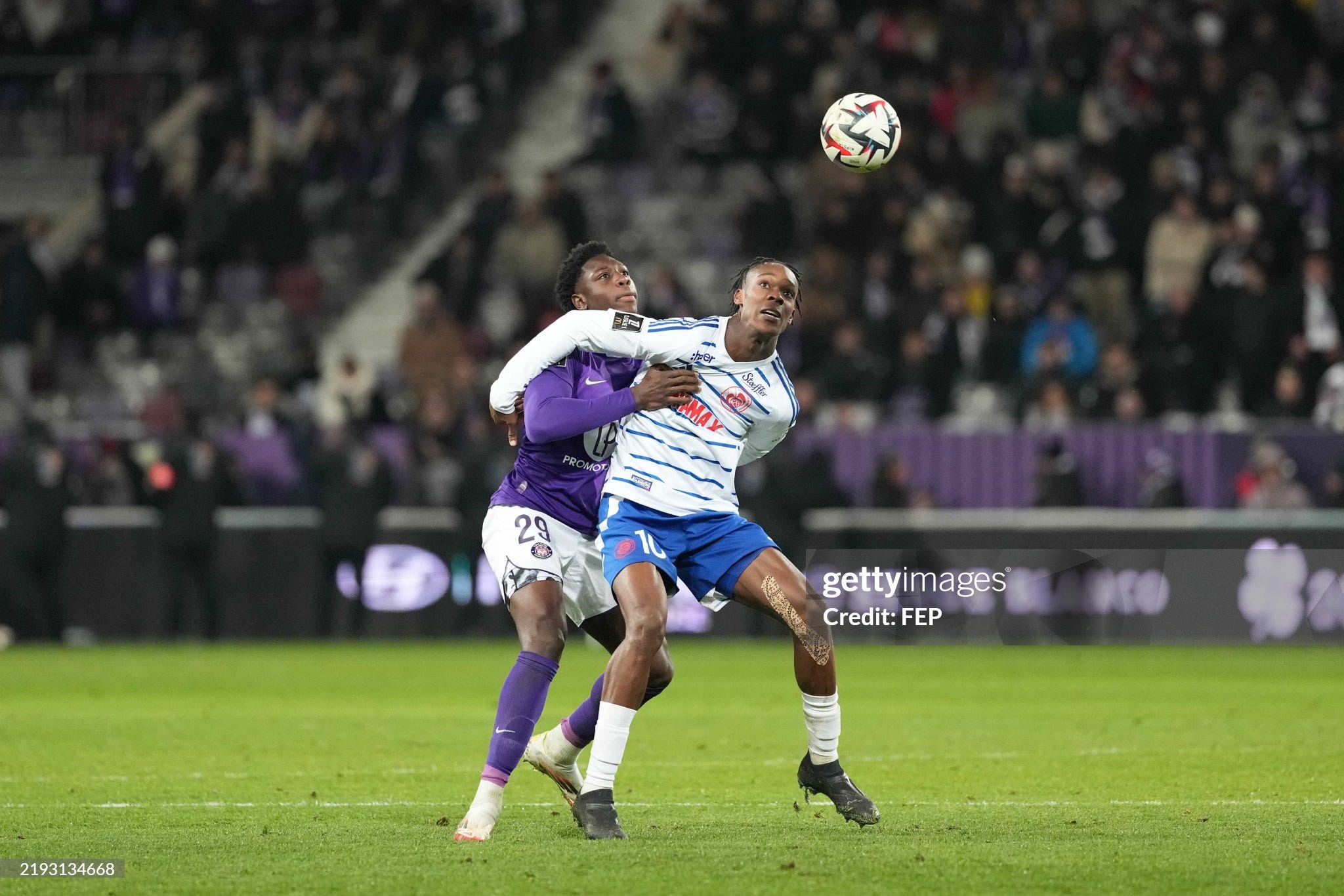

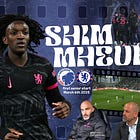
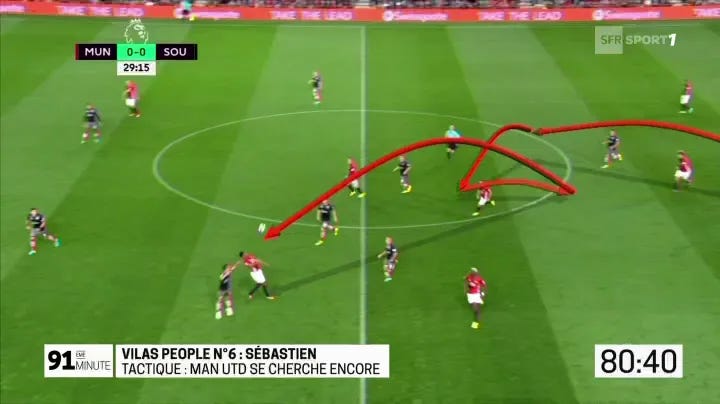
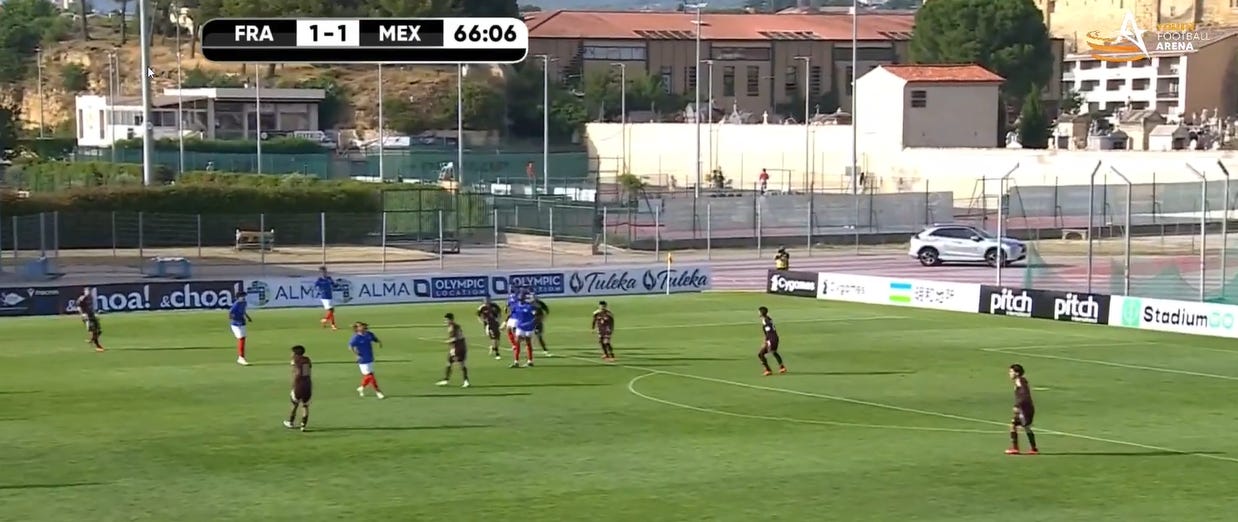
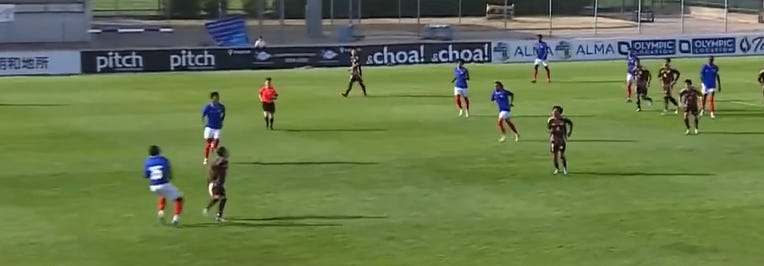





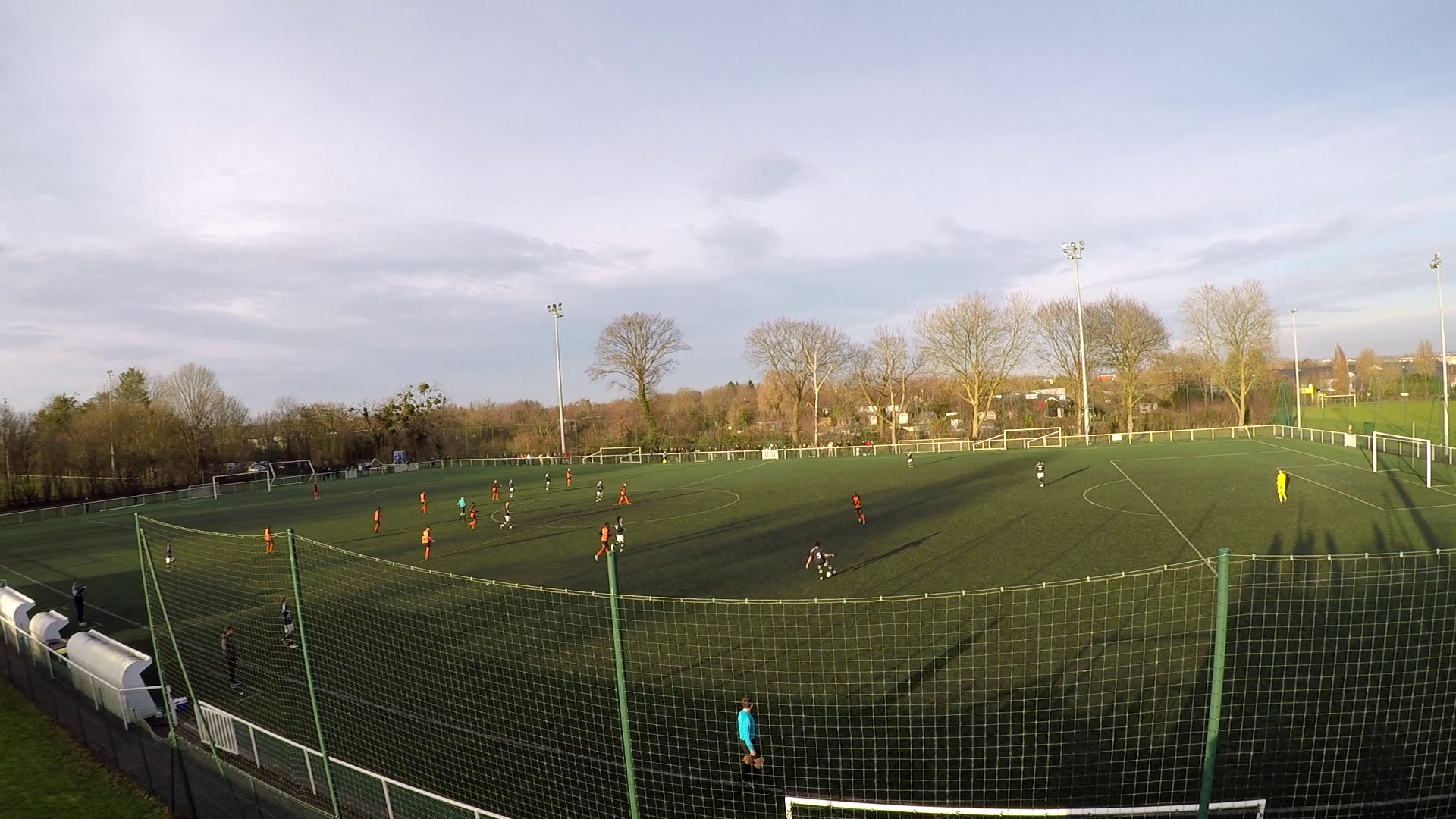

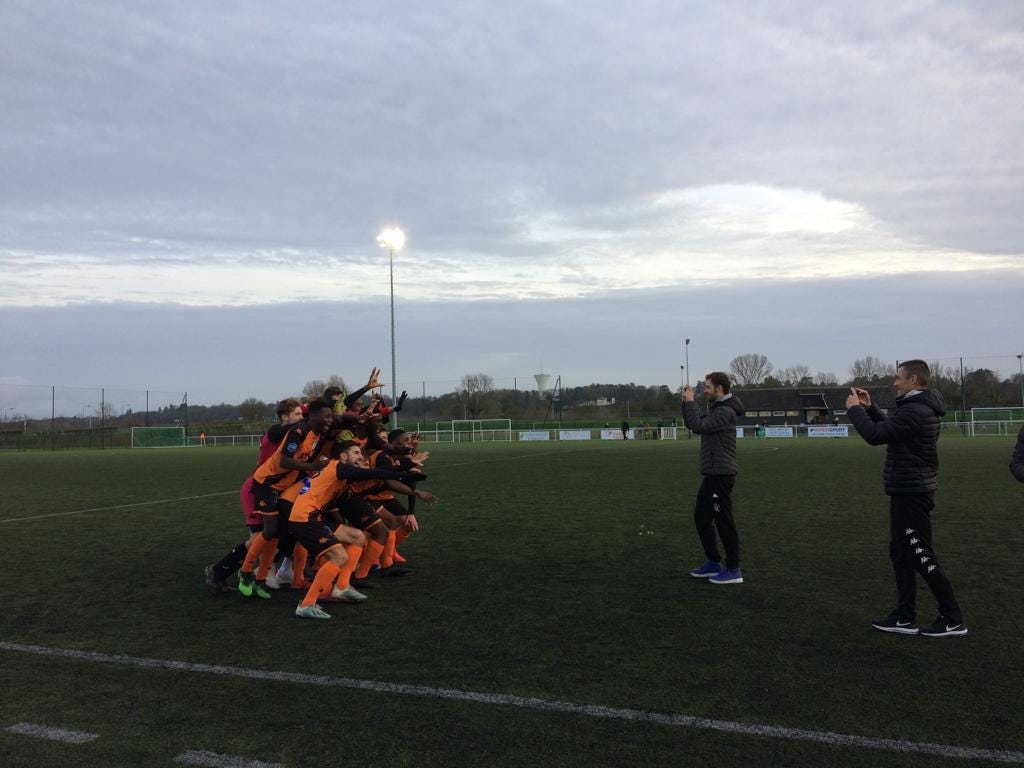


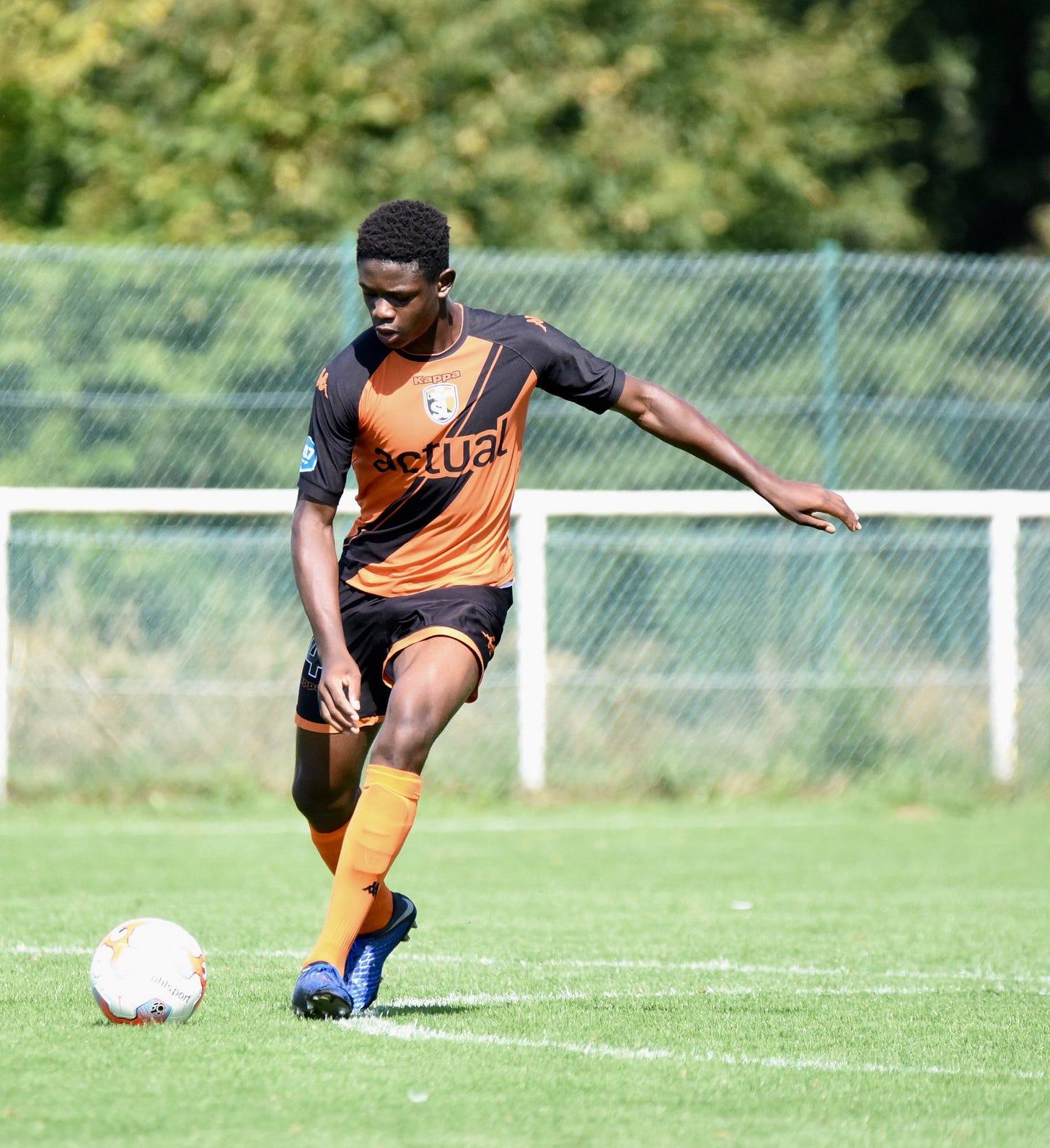
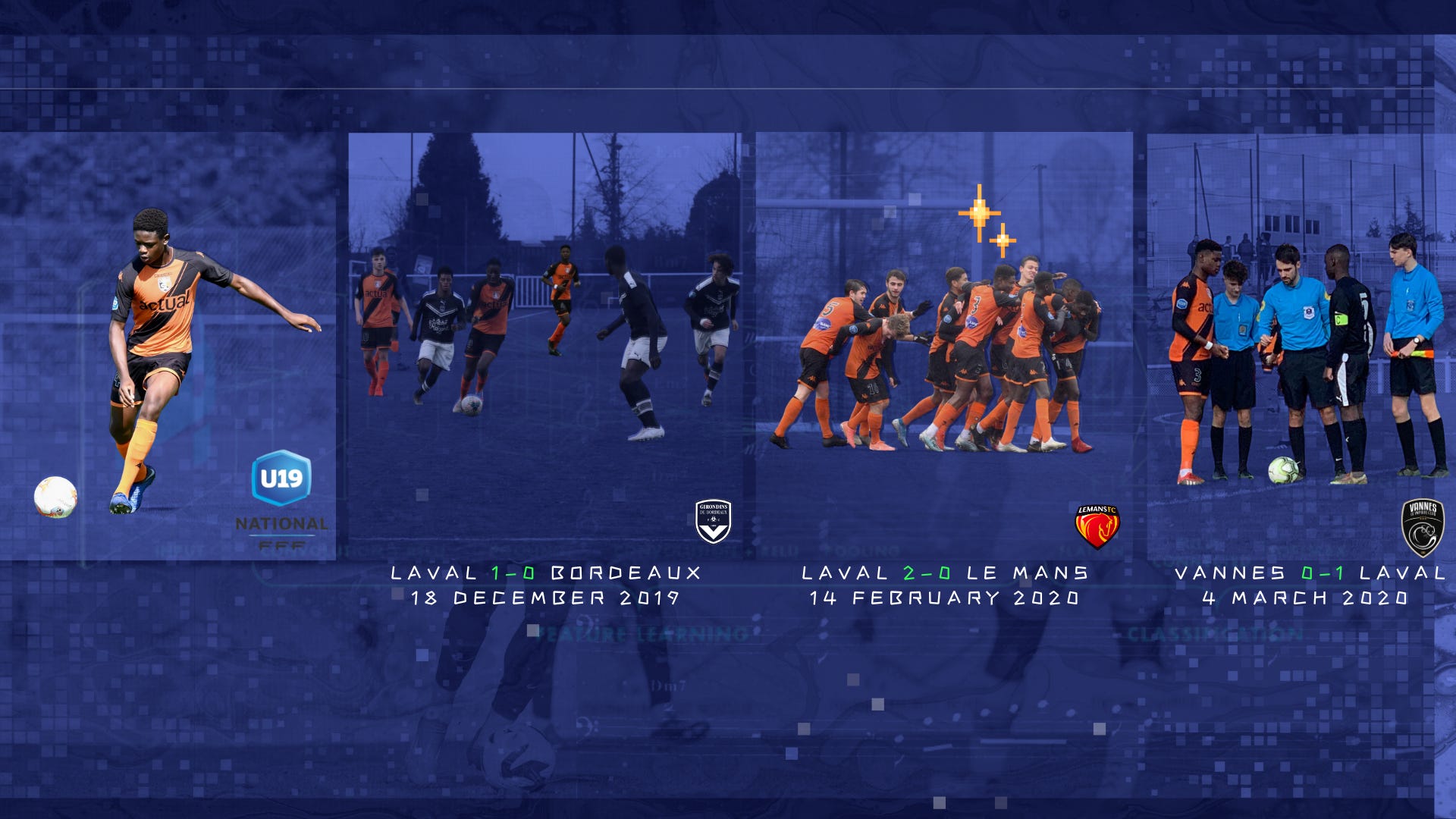

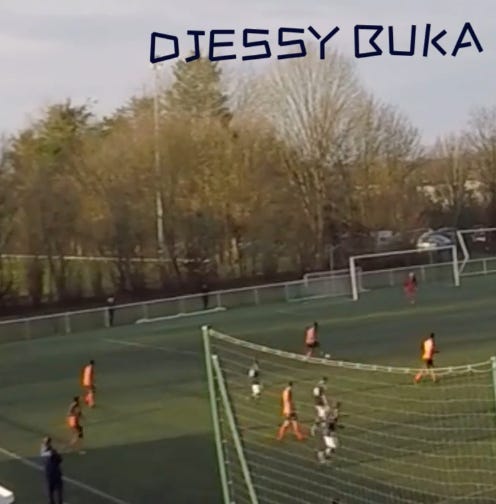


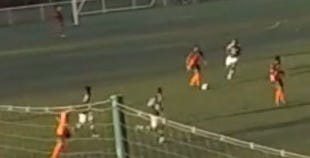





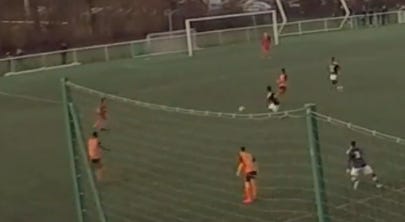
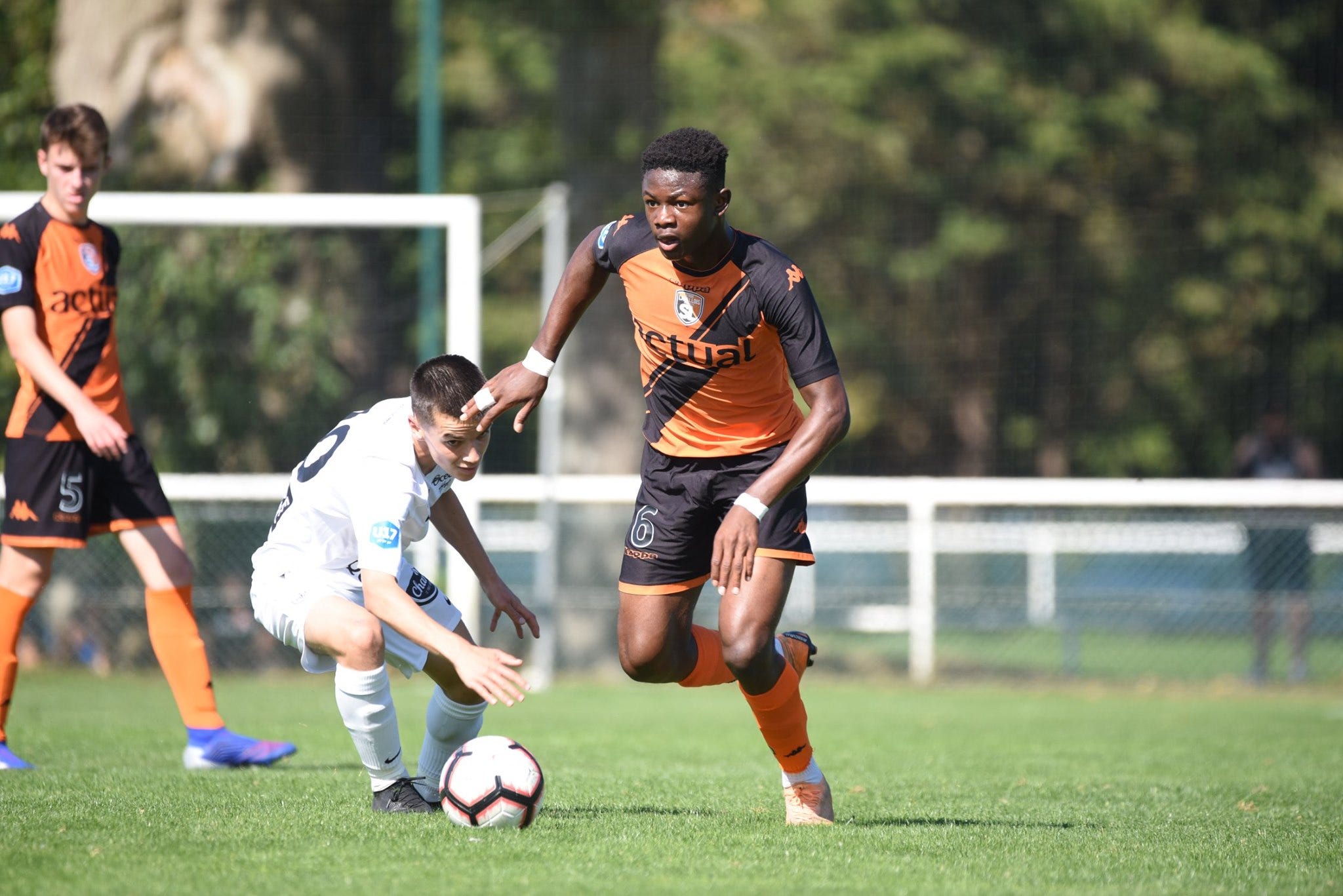



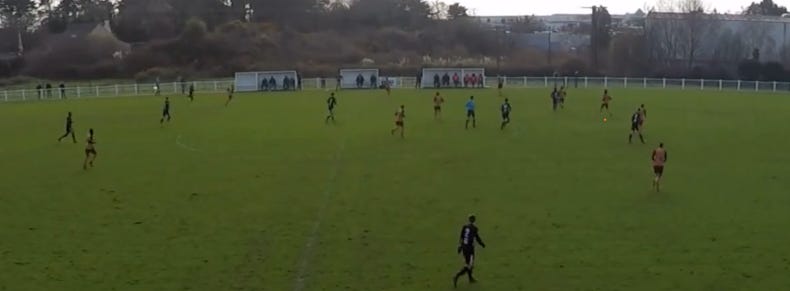
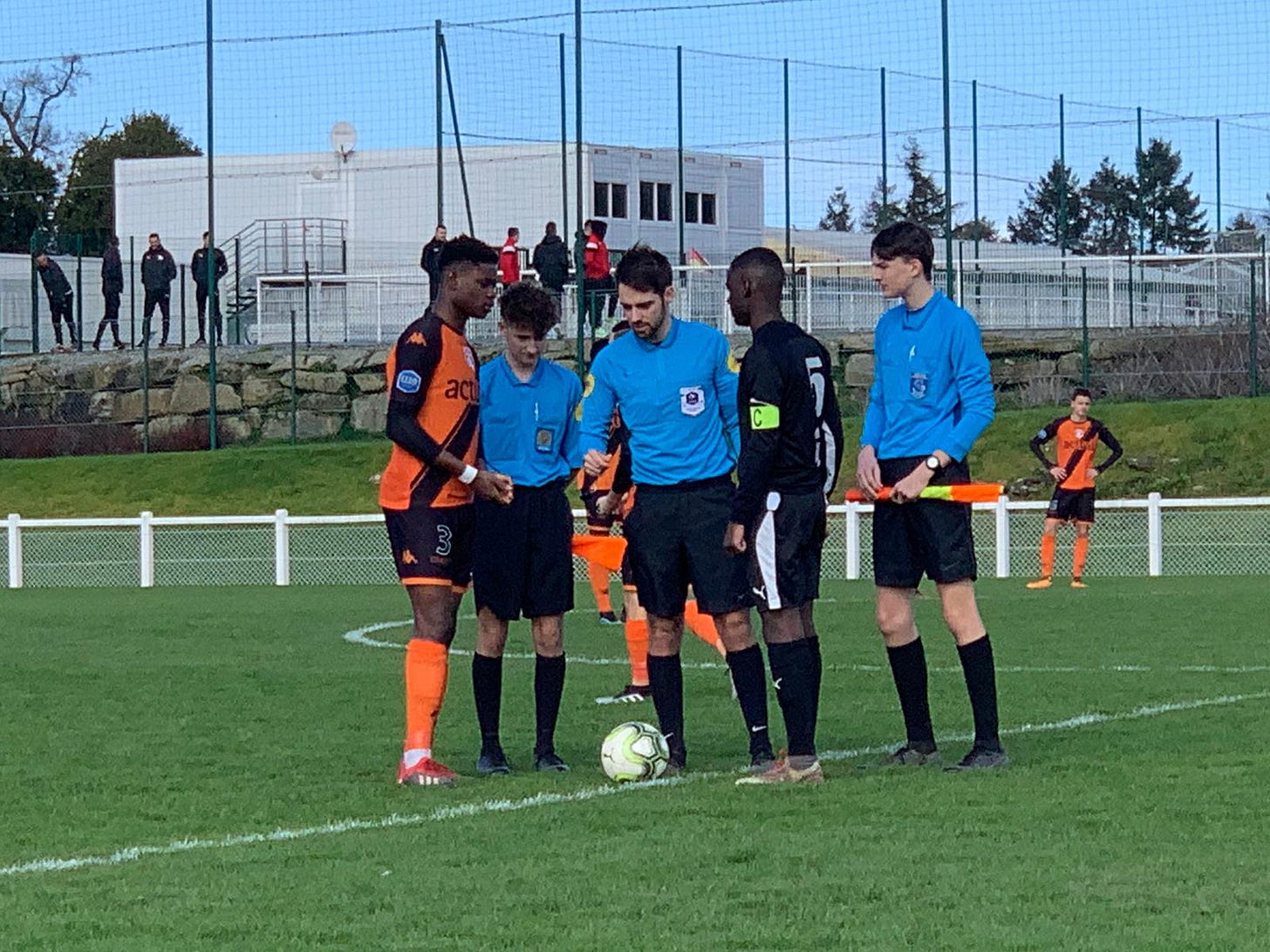
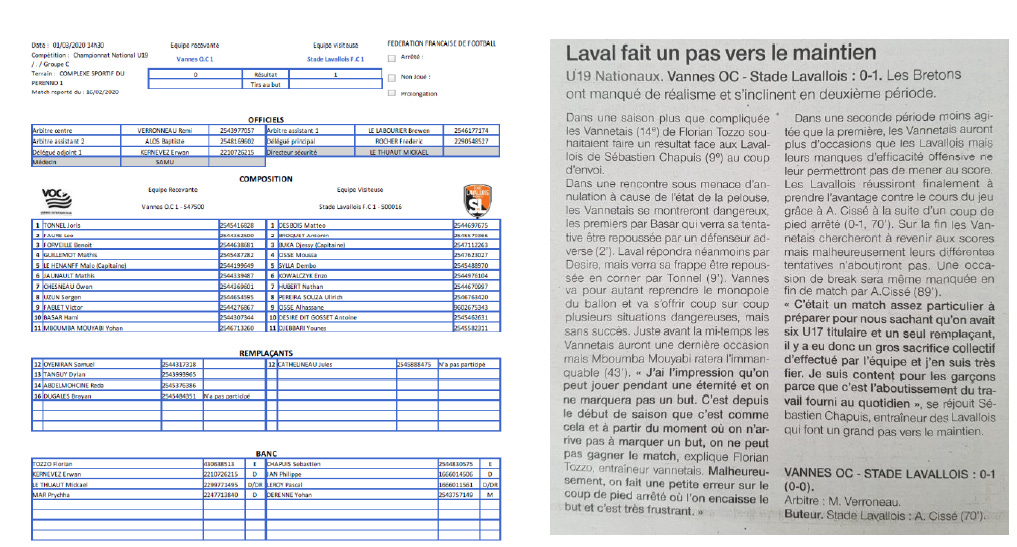



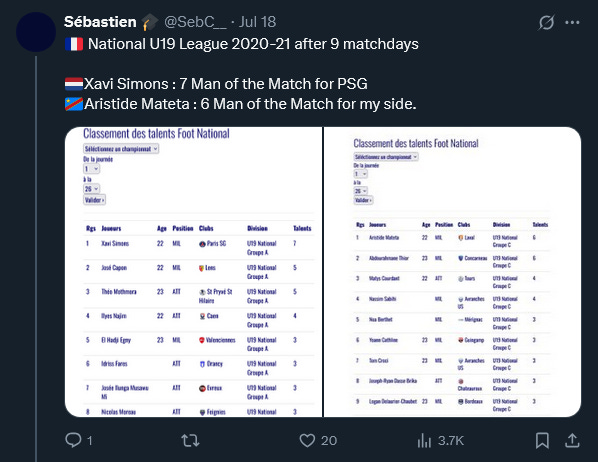

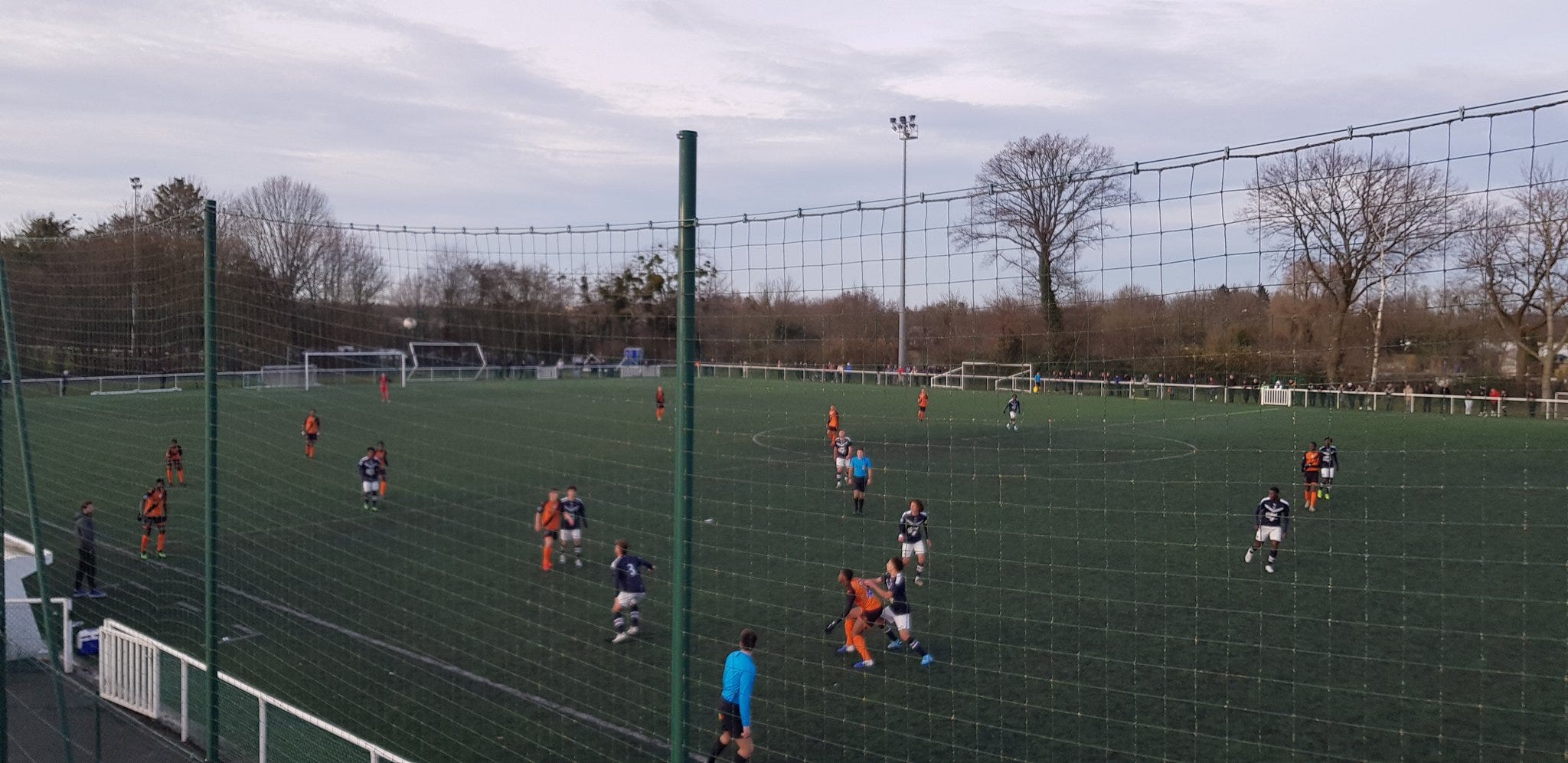


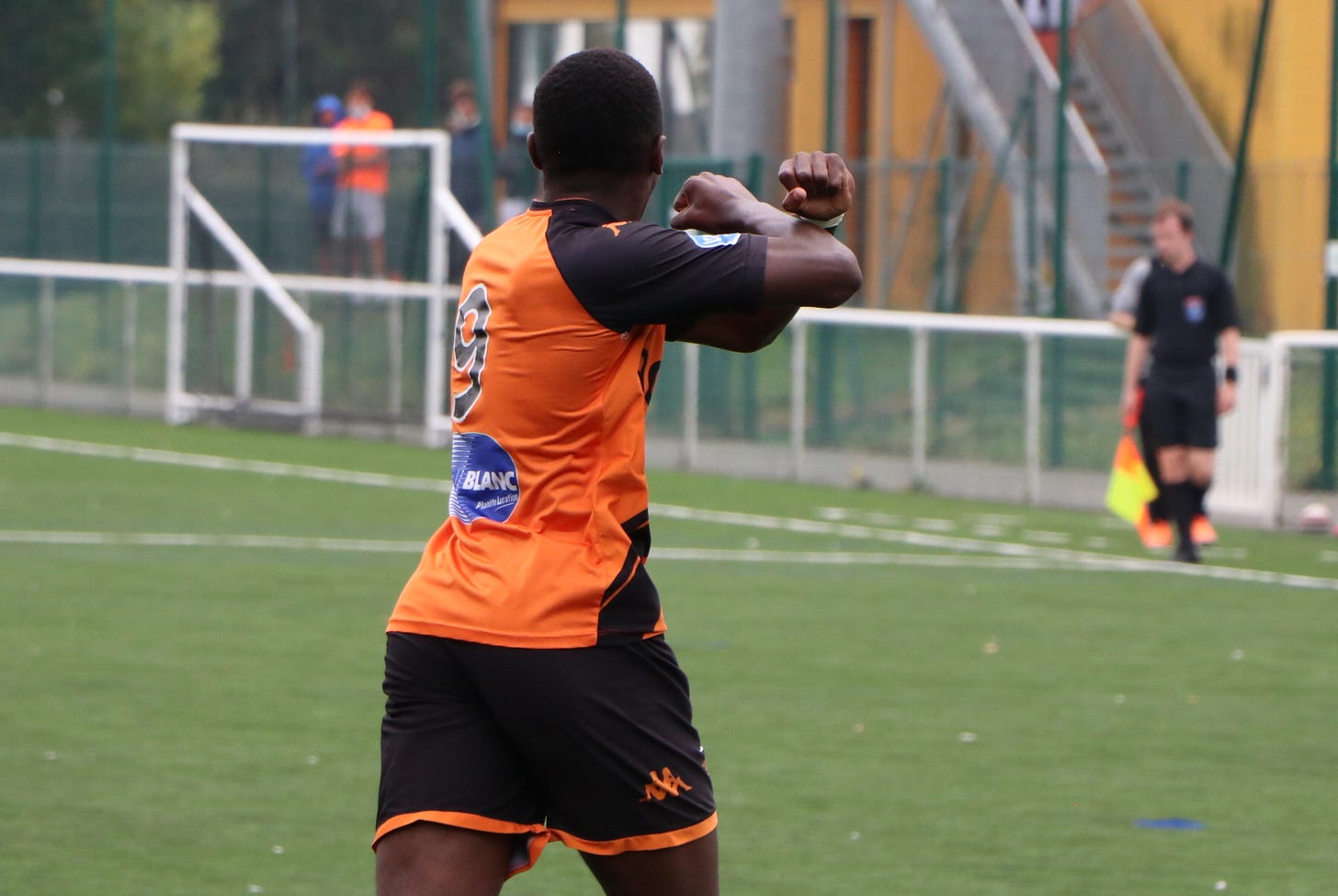

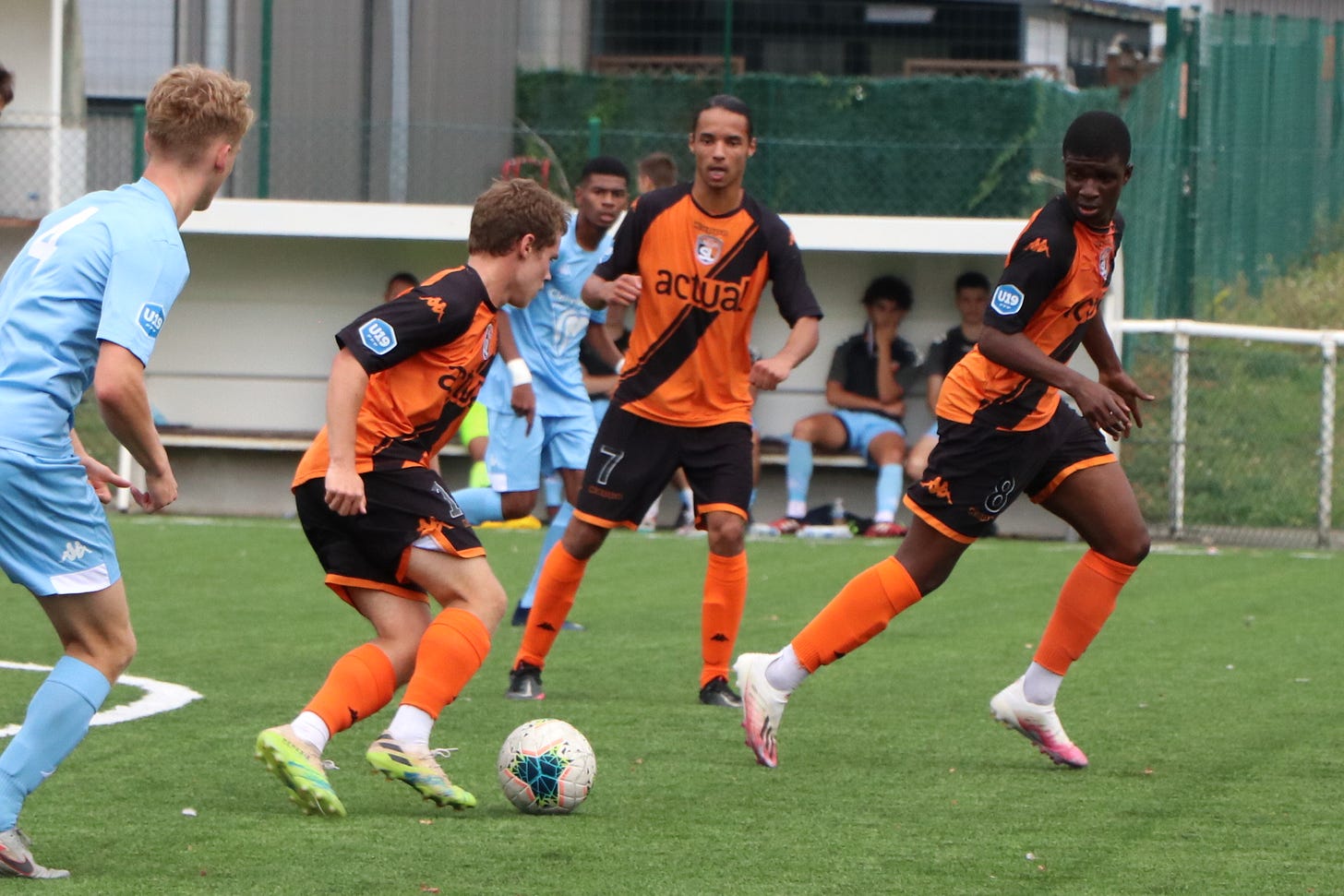


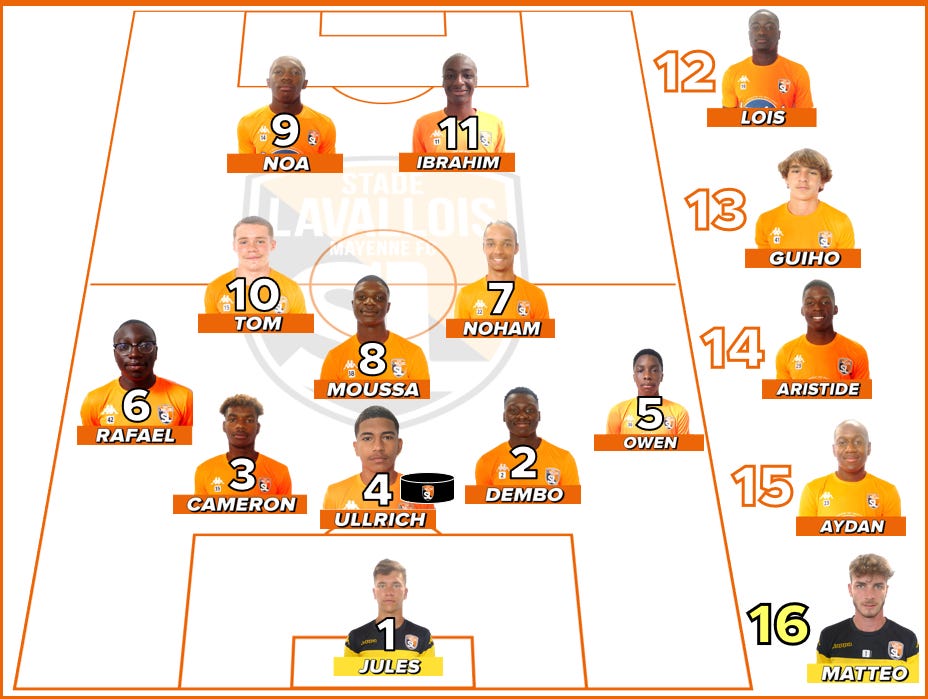




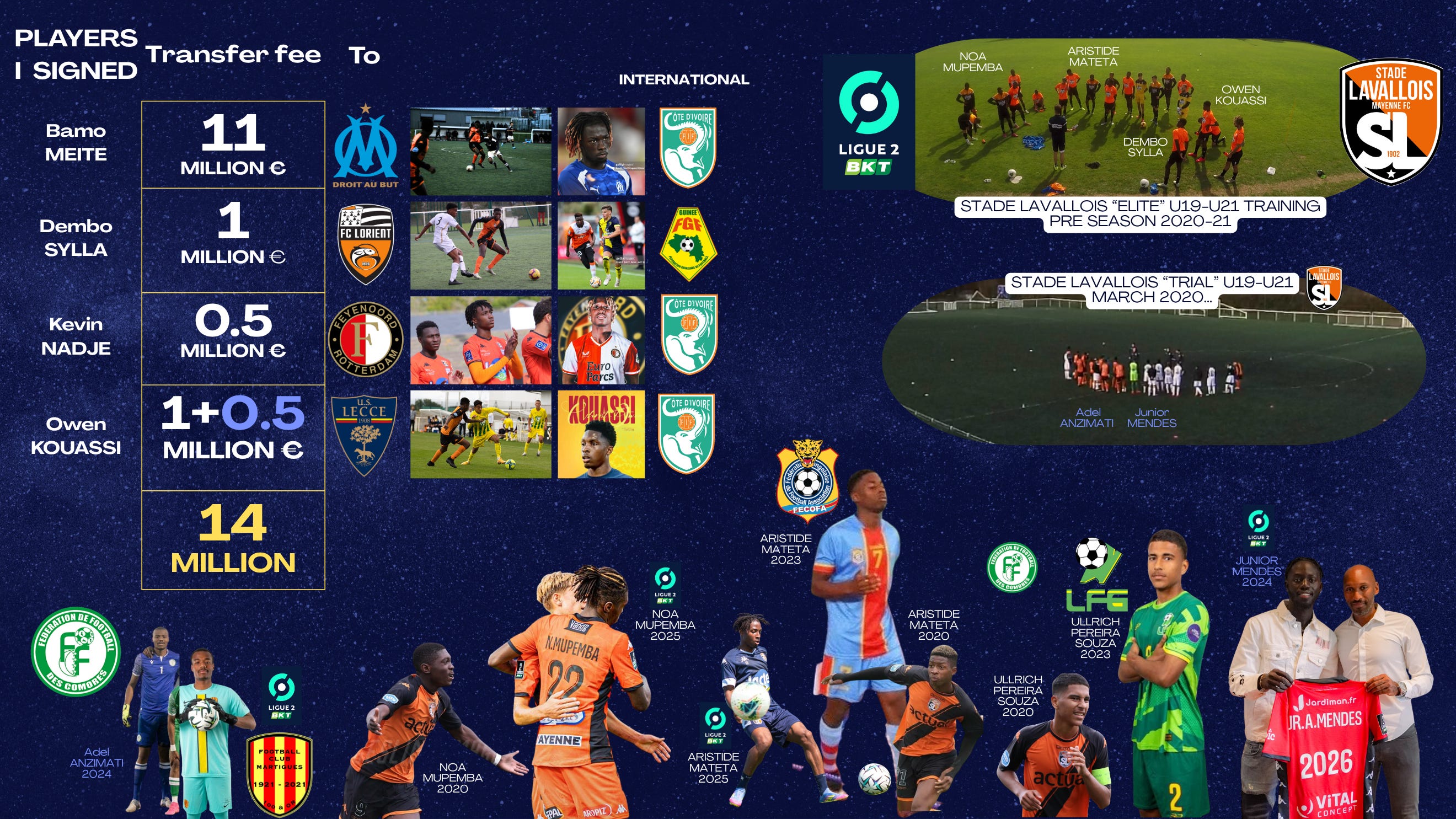
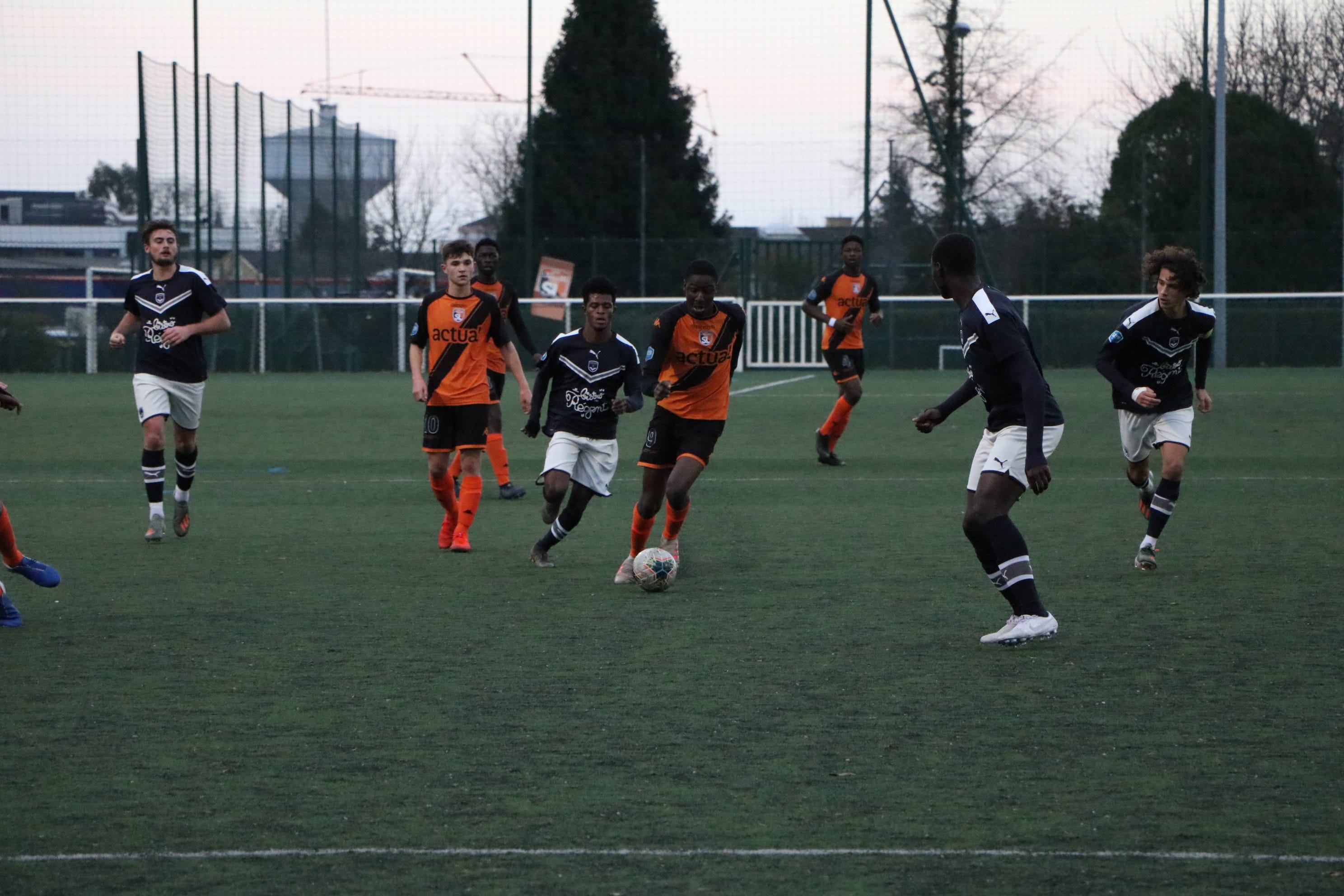
I'll be honest I wasn't expecting that musical twist.
Thats truly an education in music & football( as usual on the latter).
You're a good writer Seb I was hooked from the start.
Loved it. Thank you.